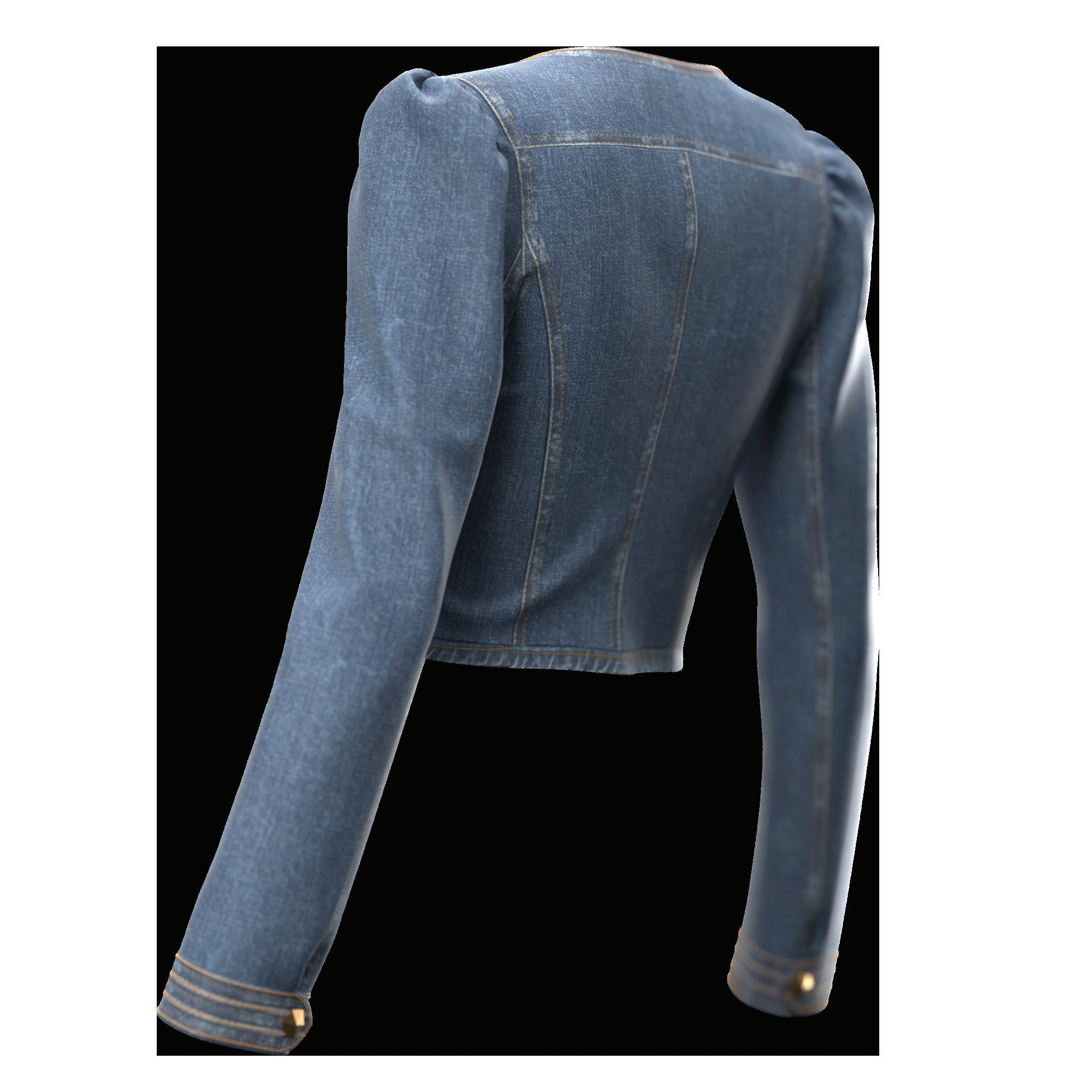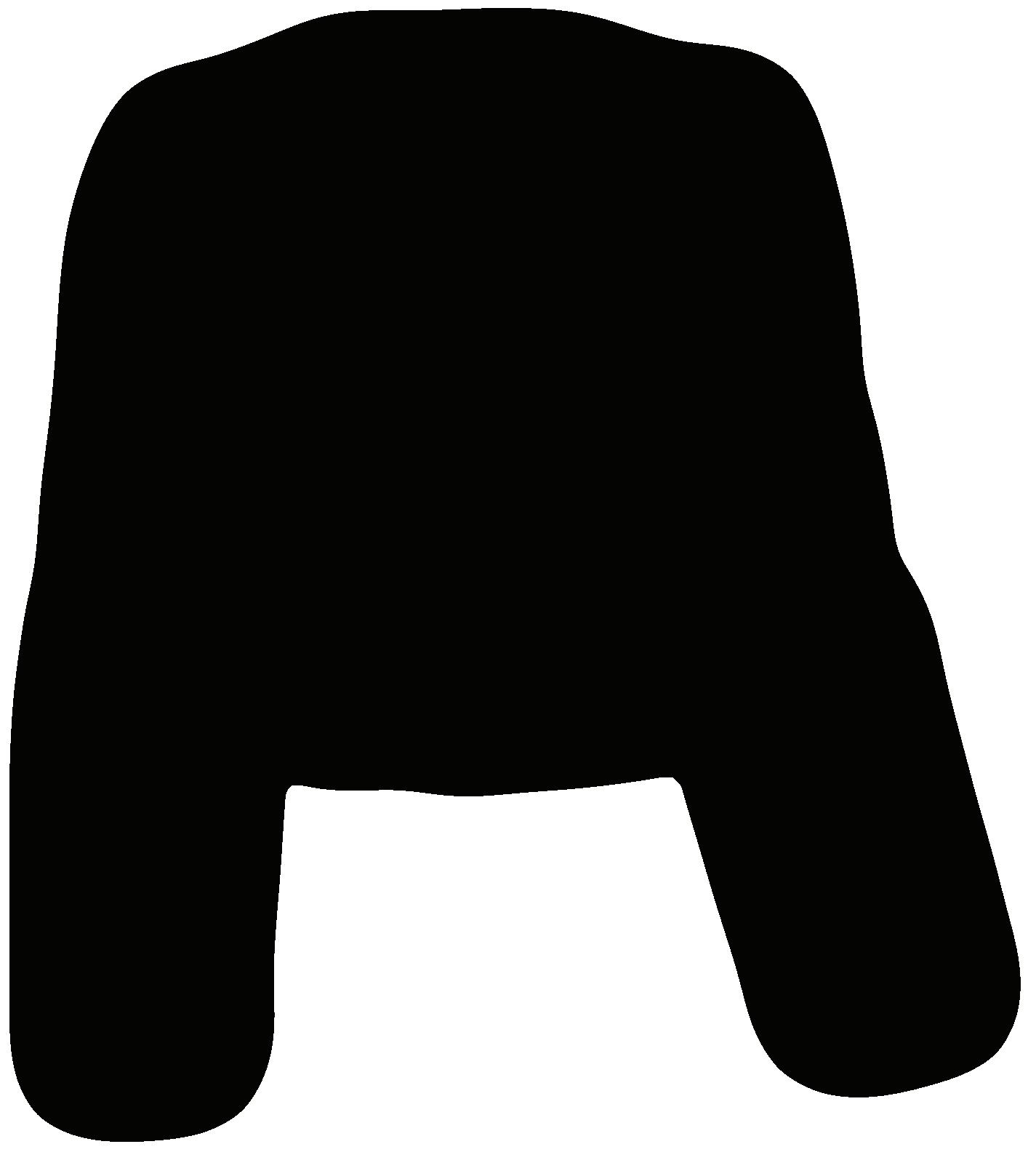

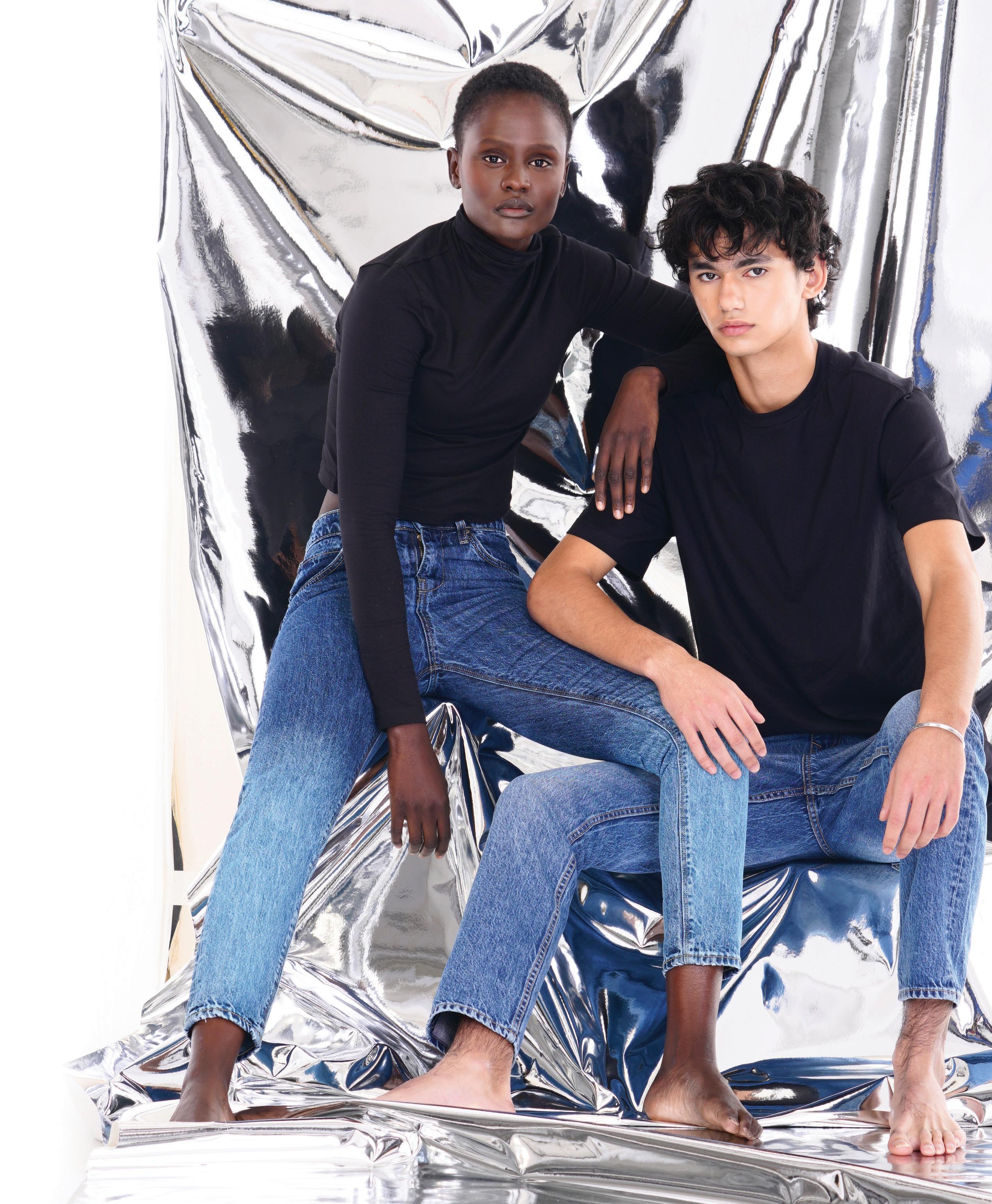




The hottest place to be this summer was outside—literally and figuratively.

August 2022 was the world’s sixthwarmest August in 143 years, according to the National Oceanic and Atmospheric Administration (NOAA). The langorous August capped off the Northern Hemisphere’s second-hottest meteorological summer on record at 2.07 degrees Fahrenheit above average, behind Summer 2020. It was the U.S.’s third-warmest summer in the 128-years on record.
Record-breaking weather was a global phenomenon this summer. Europe had its hottest metrological summer to date. The U.K. reached 104 degrees Fahrenheit for the first time in July. China endured a heatwave that lasted more than two months and Pakistan was largely under water in August due to an unusually strong monsoon season.
Hot temperatures (and inflation, and political instability and covid) didn’t deter vacationers from venturing outside, however. A vacation confidence index by Allianz Travel Insurance estimated that summer travel spending in 2022 would amount to $194 billion—a 91 percent increase compared to 2019 summer vacation spending.
Endless scrolling of vacation photos on Instagram confirmed these numbers,
unofficially. Photos of Capri’s blue waters, Sedona’s Mars-like terrain, Santorini’s white cities and Miami’s beaches inundated the social media platform. While the destinations varied, the presence of denim—from trendy wide-leg jeans and vintage cutoff shorts to classic jean jackets—was a constant. Denim’s versatility, breathability and durability landed it on the packing lists of savvy and stylish travelers everywhere.
Spring/Summer 2024 fabric and trim collections reaffirm denim’s place in warm-weather wardrobes. Mills are using natural fibers like cotton and linen to deliver comfort and breathability. Weaves are growing looser, enhancing garments’ drape and volume. Weights are light and billowing, and nontraditional colors are adding a warm glow to jeans.
Meanwhile, the processes to make, dye and finish fabrics are becoming less dependent on natural resources. This Spring/Summer 2024 In Season look book made possible with the support of Cotton Incorporated highlights the meaningful steps the denim supply chain is taking to shrink its environmental footprint while providing consumers with universally cool fashion. It is denim’s way to help ensure that beautiful landscapes and fresh air will be enjoyed by generations to come.
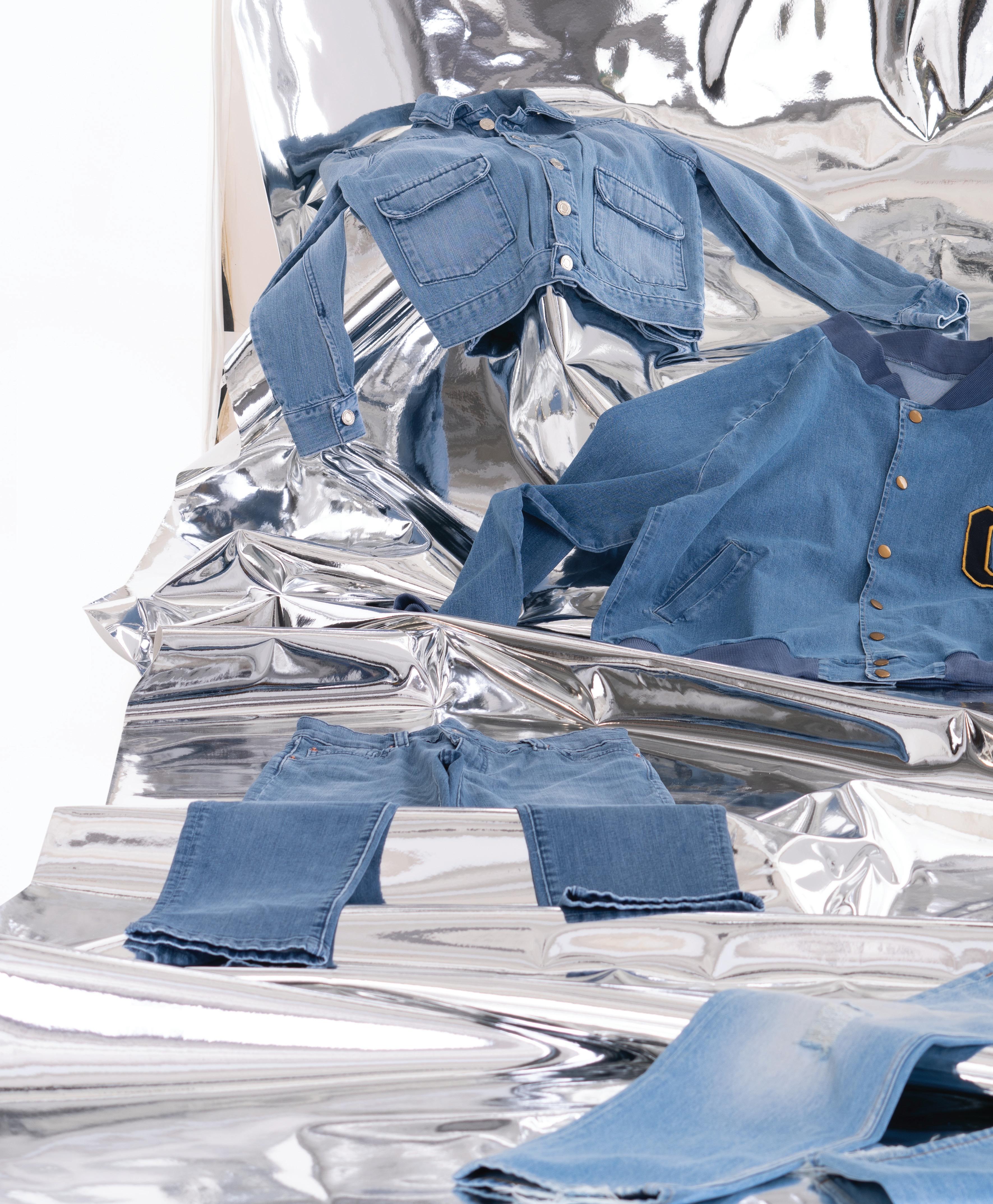
Recycled and regenerative fibers, water-saving dyes and traceable technologies pave the way for more responsible denim fabrics.

Sophisticated silhouettes, festival-inspired details and experimental shades are driving newness in Spring/Summer 2024 denim fashion.
Trim manufactures share how requests for circular trims are leading to new creative opportunities.
Photography: George Chinsee
Casting: Luis Campuzano
Talent: Dr. Nya Buom @ State Management, Kabir Singh @ Wilhemina
Most interesting story: Consumers understand the difference between true sustainability and greenwashing. Recycled and recyclable, durable denim with traceability is compelling to customers.

On fashion trends: Responsible fashion with functionality, scalability and traceability is core to the collection. From high stretch fabrics for one-size-fits-most concepts to comfort and authentic rugged jeans, we tried to cover all categories.
On technology/investments: ADM has built up a large mechanical recycling facility in Karachi, Pakistan to scale recycled yarn usage in the industry for multiple categories not limited to denim but including knits and socks. It’s our leadership commitment towards achieving fashion circularity in the textile industry.
Most sustainable fabric: ADM13244 from our 2nd Life Denim series. It is an organic cotton blend with post-consumer recycled cotton and 20 percent hemp. The fabric contains no polymer fibers and it is recyclable at its end of life. All fibers come from certified sources and have GOTS and GRS certification, which makes it completely traceable.
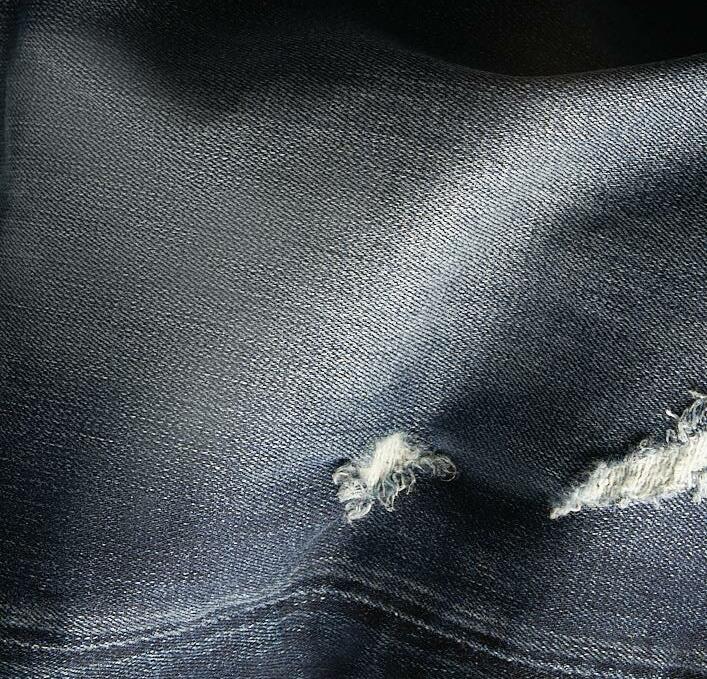
Best value: ADM’s Luxe series made with recycled cotton blended with Tencel Modal, Tencel Lyocell and shaping technology from Lycra dualFX. It gives an authentic denim look and feel, while offering extra flexibility, all-day comfort and long-lasting fit.
Most durable fabric: The Skateboarder series made with Lycra Tough Max technology is the most durable yet functional fabric in our S/S ’24 collection. Fabrics meet consumers’ need for rugged jeans without compromising garment aesthetics as well as comfort. It’s a perfect choice for great-fitting workwear.
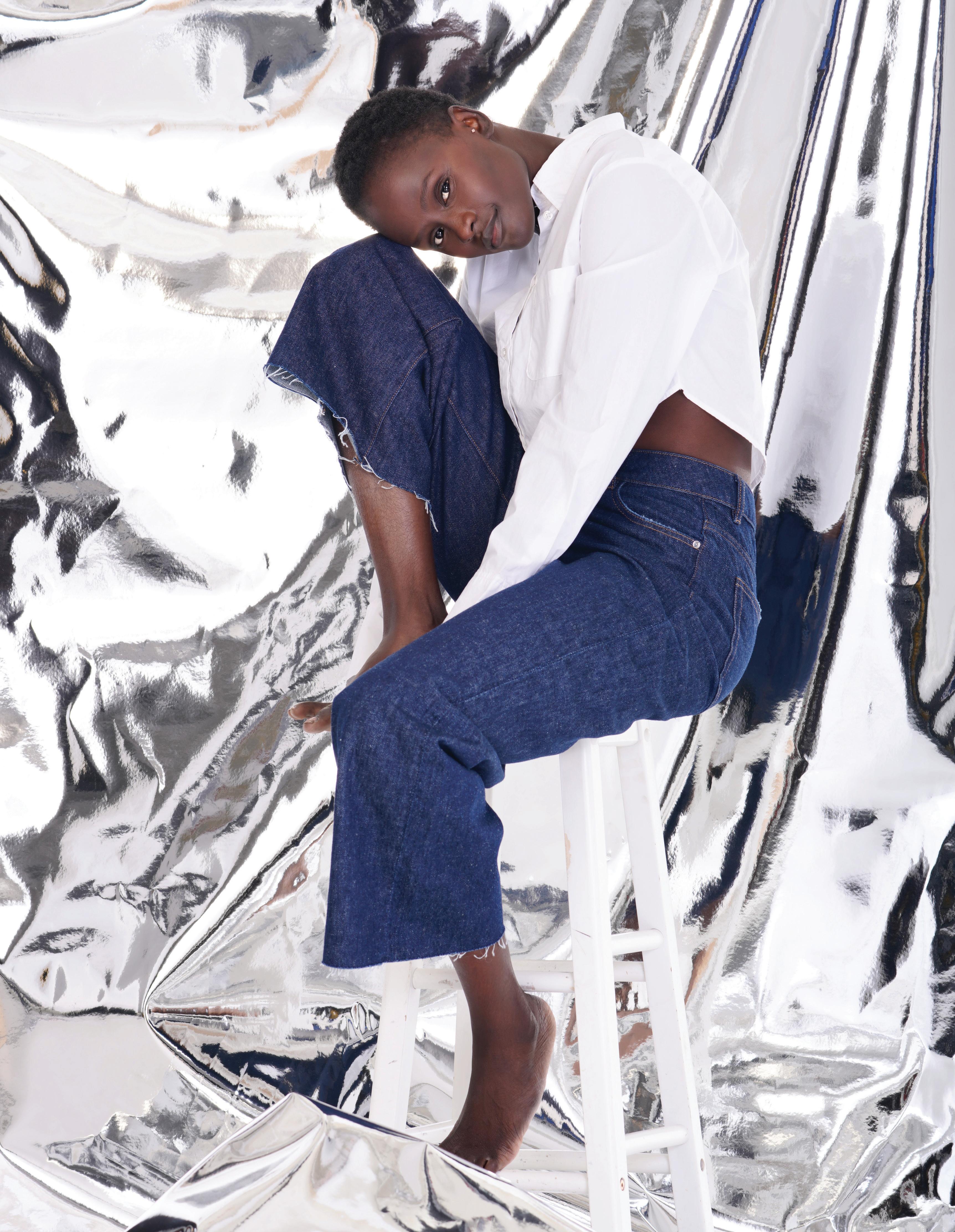
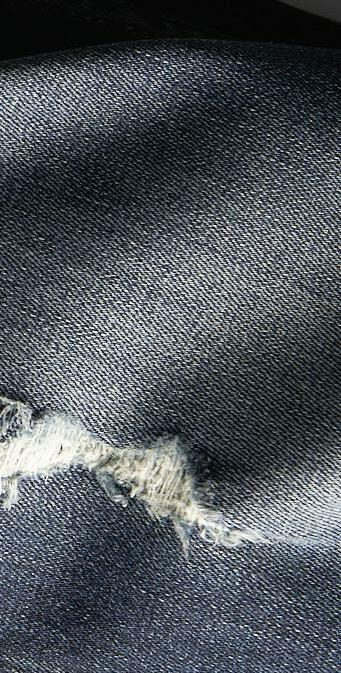


advancedenim.com

Most sustainable fabric: We continue to build our Salvage Denim collection of recycled denim. We use post-industrial waste and innovative spinning technologies to create styles that have both high recycled content and superior strength.
Most durable fabric: Advance Denim has created a high-strength denim that caters to the needs of workwear and high-performance protection. This style applies Cordura to both the warp and the weft to give it more strength and also abrasion resistance.
On fashion trends: Sustainability and transparency are baked into every style. The soft drape in open flowing constructions achieved by using a mixture of sustainable Tencel and Naia Renew add new life to wide-leg silhouettes. Bold slubs in comfort stretch with inky blue-black indigo harken back to the Y2K constructions that are being snapped up by vintage shoppers worldwide. Natural botanic dyes using roots, flowers and nuts in bold bright shades continue to stand out as sustainable fashion must-haves for spring summer.
Most interesting story: We believe in staying true to denim’s roots and history but engineer the fabric with the most sustainable production innovations possible. We build collections using our Bigbox denim dye process which reduces the water needed to dye indigo by 94 percent compared to the traditional eight to 10 box dye range. To clean up the dye process further we invented BioBlue indigo sodium hydrosulfitefree indigo dye for a cleaner, safer dye. We are also using Good Earth Cotton, the first climate positive cotton that uses modern regenerative growing techniques, and on top of that, is backed by FibreTrace.
On technology/investments: Advance Denim is replacing old, inefficient finishing ranges at its facilities in China and Vietnam. These new state-of-the-art ranges will use significantly less water, energy and chemicals. When linked to our Bigbox dyeing and BioBlue indigo, the finishing ranges will enable us to increase our ability to recycle water throughout the whole system.
Most sustainable fabric: A4-0501339 consists of 100 percent recycled cotton content, using post-industrial waste cotton instead of virgin cotton.
Best value: A4-0501617 gives brands the most value. Apart from being highly sustainable by having composition of post-industrial waste cotton and Tencel, it’s also a very versatile fabric in terms of wash due to its dual shade nature of being a green cast indigo fabric.
Most durable fabric: A4-0502008 and AS-45 are our most durable fabrics. However, their attributes are not limited to durability. For example, they have an authentic heavy rigid look with comfort stretch and beautiful marbling.
Most interesting story: Our fabric of 100 percent post-industrial waste cotton gives brands an interesting story as it provides the customer with a sense of responsibility toward the environment.
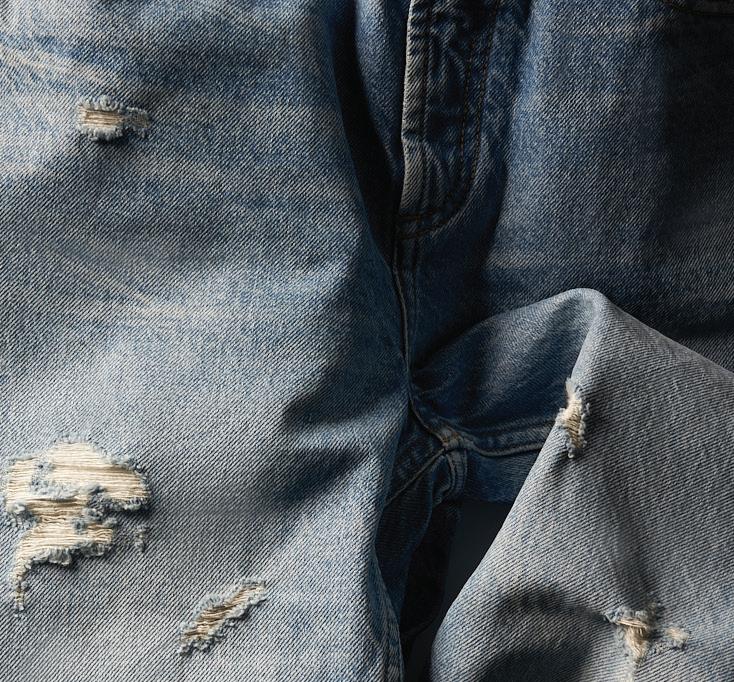
On fashion trends: We are focused on straight pants, mom jeans and body comforting/breathable fits with earthy tones and vintage washes.
On technology/investments: We know that producing denim requires a great quantity of water, which is why Artistic Fabric mills—being among the leading denim mills in its region—made the conscious decision to invest into three main domains. With Double Zero, we are using next to no water in our dying and fabric finishings. This results in a highly sustainable fabric without compromising the look and quality. Triple zero is an extension of Double Zero, but it covers the washing process of fabric with the same goal of zero wastewater. Closing the loop on our manufacturing process to make it more sustainable is one of our most revolutionary investments. Fabrics produced from this technology have exquisite wash results in garments and continue to perform above charts.
 artisticfabricmills.com
artisticfabricmills.com

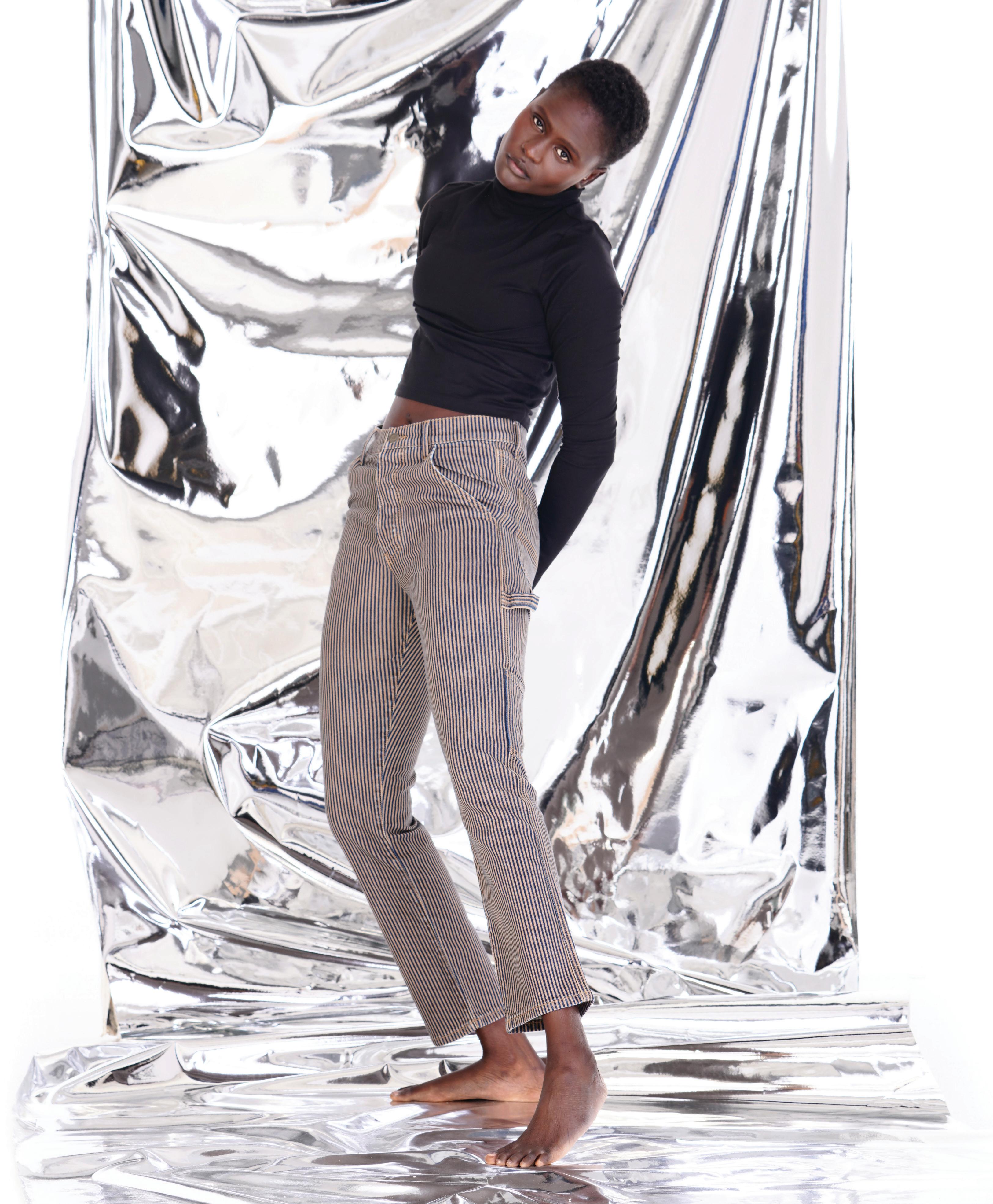
Most sustainable fabric: The most sustainable fabrics are the one that use our Double Zero technology, which does not generate any wastewater and reduces water usage by 85 percent versus conventional dyeing/finishing methods.
Best value: Our Flagship collection of fabrics are produced using the most commonly running warp yarns in our production. Their processes have been tested and refined for maximum production efficiency, thus giving the most value with minimal waste.
Most durable fabric: Everlast is designed to last longer without relying on synthetic fibers. This new yarn celebrates AGI Denim’s state-of-the-art LEED-certified spinning mill.

Most interesting story: Our Kaleido Denims are color yarn-dyed denims made entirely with recycled water in dyeing and finishing. This process is SGS certified to use no fresh water in fabric dyeing and finishing.
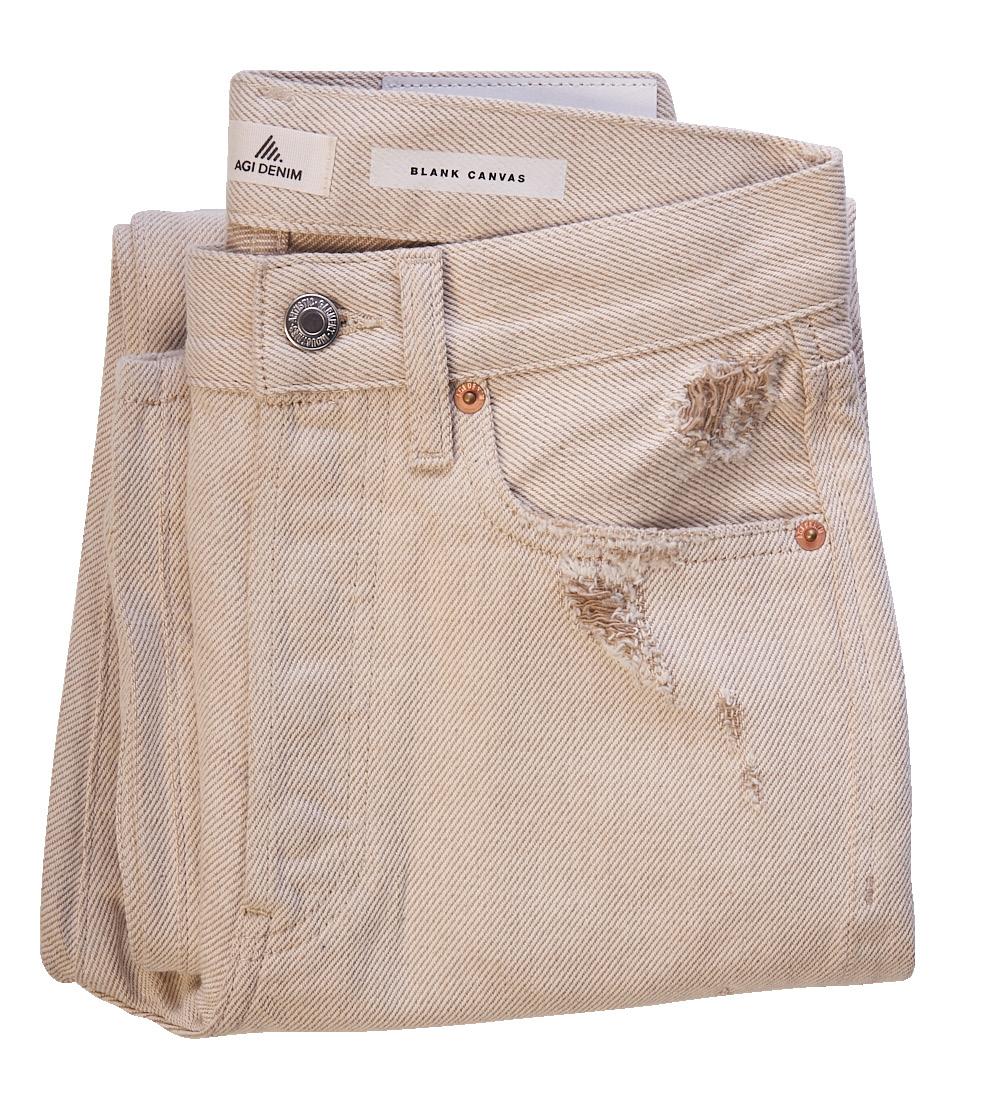
On fashion trends: The Authentic Futures II collection features fabrics that we want to see in vintage stores in the future.
On technology/investments: We have invested in new machinery that allows us to create colored wefts. Those fabrics are part of the Weft Games collection. AGI Denim reimagines core and fashion denims with a fresh take on color weft yarns. In S/S ’24 our indigo dyed and other color dyed wefts give an extra pop of dimension.
Most sustainable fabric: Recircular/Mel, 80 PIW, 20 PCW, G2/ Ozone Finish are some of our most sustainable fabrics.
Best value: Riley is our newest high value fabric with a wider width and substantial stretch.
Most durable fabric: Magnum, our fabric with Cordura and Lycra Tough Max, has a very durable composition and weave.
Most interesting story: Recircular is made from 100 percent recycled fabric (80 percent post-industrial waste and 20 percent post-consumer waste) and is a product of our proprietary Circular Park Facility.

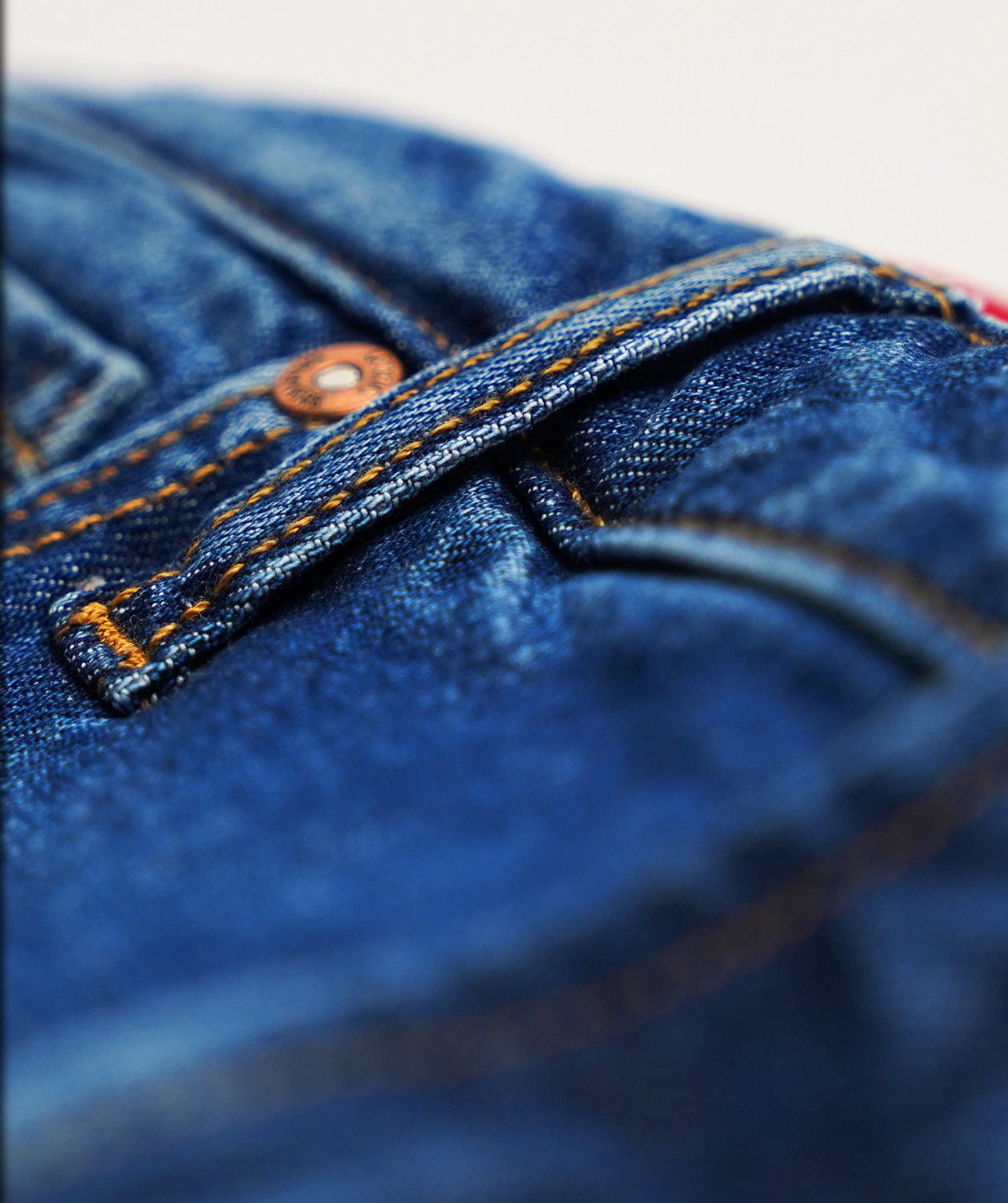
On fashion trends: Y2K and comfort have proved to be longlasting trends for us and we’ve had collections specifically geared toward these two demos for some time now.
On technology/investments: Circular Park is our proprietary recycling facility which can output up to half a million tons of recycled fiber from pre- and post-consumer waste sources each month. We also have an incredible new garments expansion, which is built to LEED Platinum spec and will add 350,000+ garments to our current capacity. We’re also gearing up toward SFI’s production-oriented expansion into Mexico.
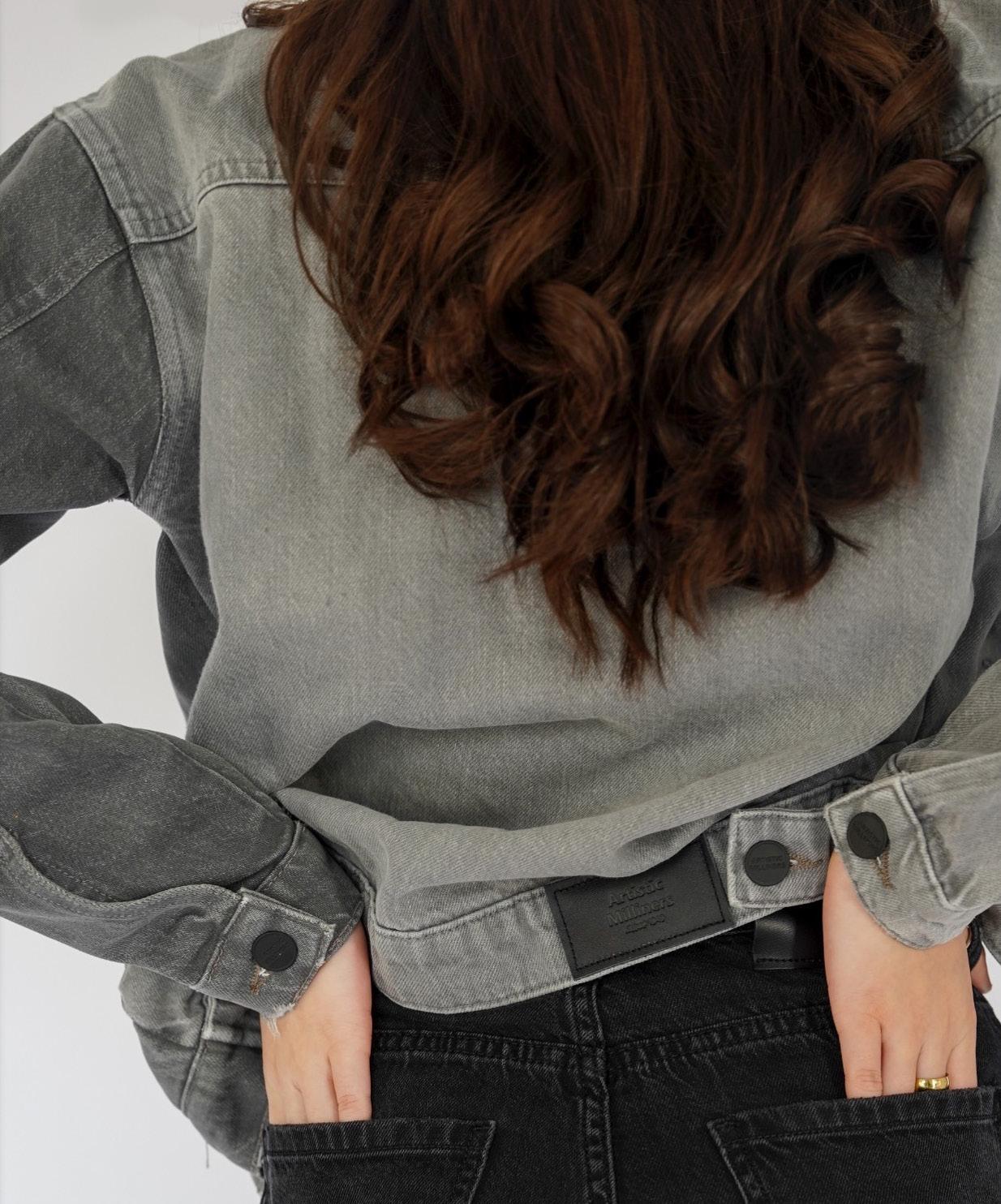
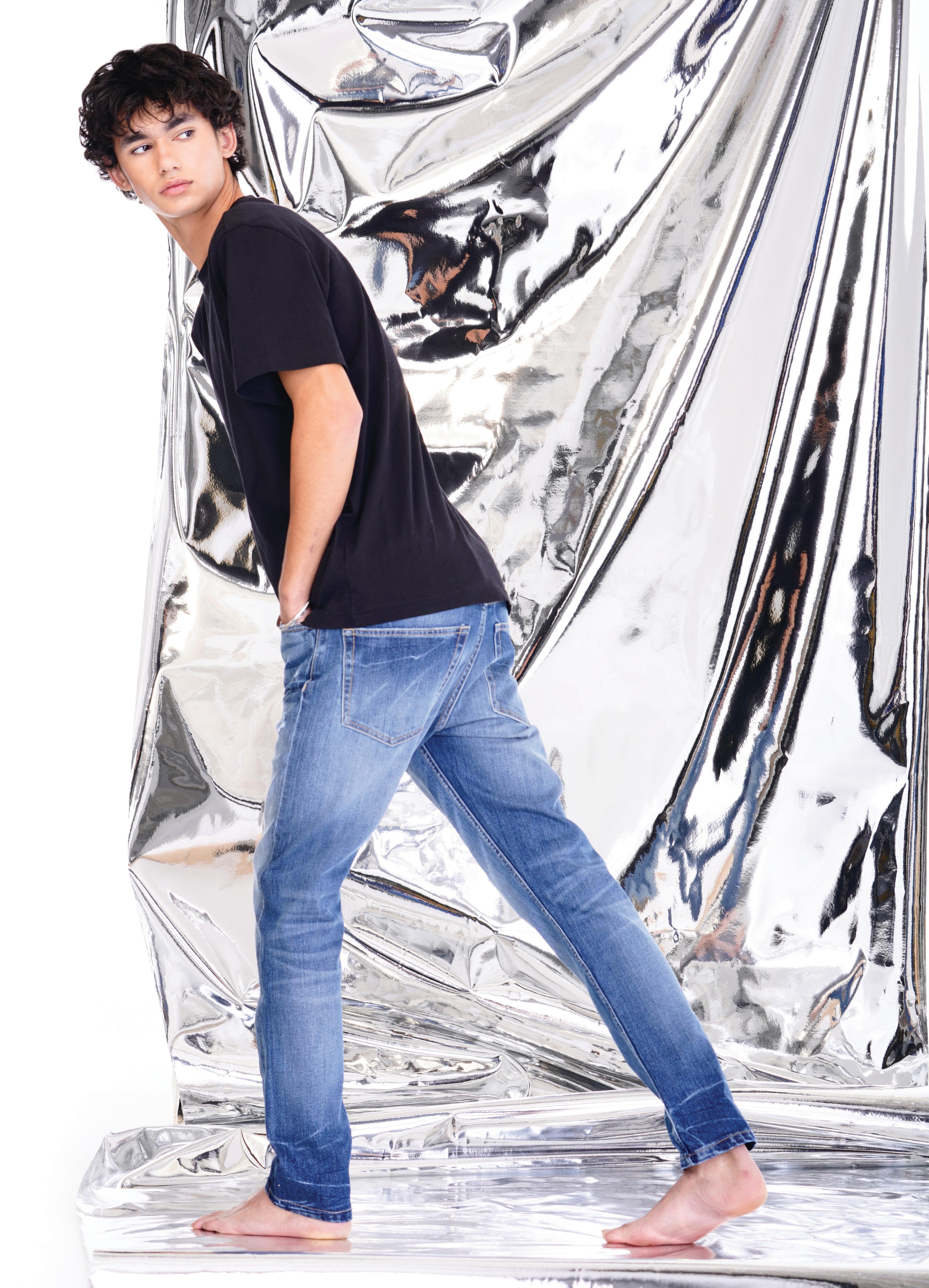
Most sustainable fabric: Asiatun K3OD (V20) is our most sustainable fabric, as it contains CiCLO, recycled cotton and Refibra. Additionally, at the end of its life, it can be further recycled through mechanical or chemical processes.
Best value: Ambra i11D (V1), because it’s a fabric that offers an authentic look and comprises comfort stretch alternatives which is perfect for everyday wear. The garments are made from 30 percent recycled material and feature salt free waterless indigo dyeing, a laser friendly blue color and ozone finish.
Most durable fabric: Hudson K7OD.
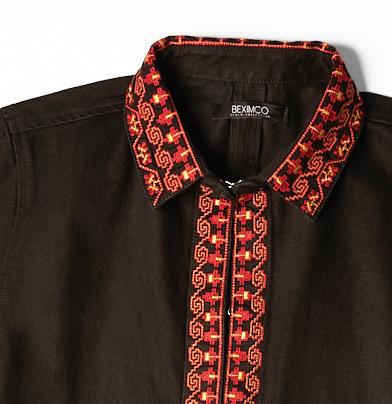
Most interesting story: Douglas -i10N (V4). The exceptional softness compared to other hemp fabrics available in the market and higher content of hemp—up to 55 percent—have made this line a limited offering by Beximco.
On fashion trends: We offer a unique collection that provides rigid fabrics with an authentic open-end look, and comfort and power stretch alternatives, perfect for everyday wear. From lowto high-rise, cargo to skinny, we’re working on some thrilling silhouettes in an array of vibrant colors. Additionally, the entire collection offers fabrics that give softness and comfort matched with an authentic look. The collection consists of versatile fabrics that are highly flexible to allow easy movement throughout the day and naturally maximize performance.
On technology/investments: We have acquired an entire top-tobottom denim fabric plant that comes with complete cutting-edge spinning, weaving, dyeing and finishing capabilities that reduce energy consumption and human involvement in the process. Using high-tech machines, the company has established its dominance in the market by producing exclusive products. Also, our production is up to date to recent standards and we have developed an agile digital system on our production.
 beximco.com
beximco.com
Most sustainable fabric: With Ecologies Denim, we are using our waste from spinning, rope dyeing and fabric to produce new denim. This article has a sustainable combination of Refibra, recycled cotton and industrial waste.
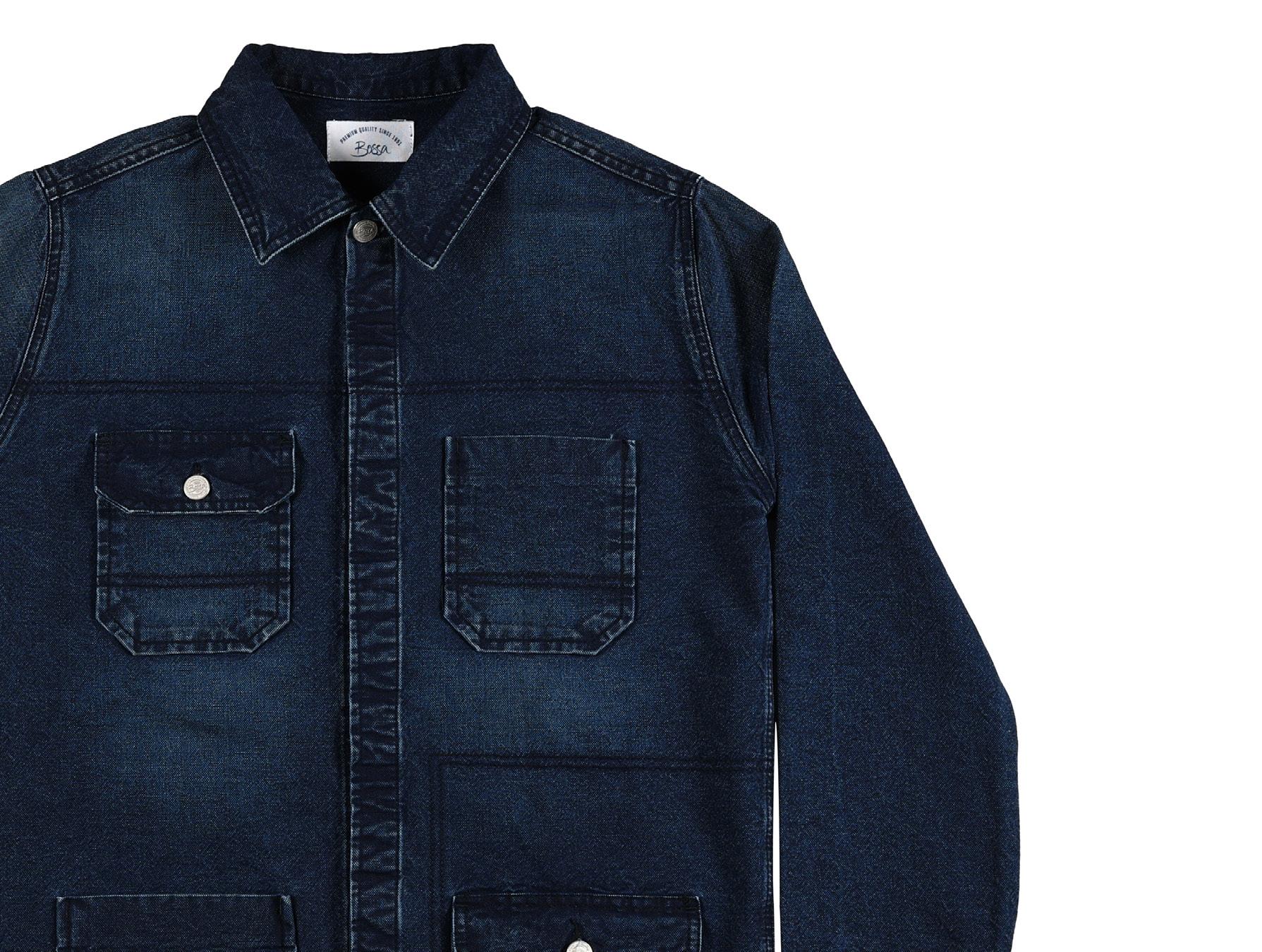
Best value: Clavis Mesoblue is a product that achieves vintage effects in washings in medium ounces and has a special slub structure. Ocala Aliceblue is a soft-touch, easy-stretching product with low growth values. Diop Soulblue has an authentic look and is suitable for both winter and summer and Gatsby Savemarine has a canvas workwear quality and a bright indigo shade.
Most interesting story: Bossa’s Colored Cotton project is writing a new history in terms of sustainability. Made in collaboration with a research institute in Adana, Turkey, it is an environmentally friendly no-dye product grown using regenerative farming techniques. The final product is a pure and breathable fabric with a soft and delicate feel. Colored cotton denim, which uses less water and less chemicals, show us that fashion and nature come together for a better future.
On fashion trends: With every collection, we think about cultural trends and influences. In Going West, we offer denim styles that hug the hips and lengthen into relaxed wide-leg shapes, lending a western aesthetic that is effortless and comfortable. Green Rush upholds qualities that western workwear is known for like durability and the ability to transcend fads. In Modern Cowboy, as we dream of wilder and simpler times, we curate a color palette and texture lineup that braings these visions to life.
On technology/investments: Our R&D team had been working on Saveblue dyeing technology resulting in zero water and zero waste. We have also made investments for a shredding facility to better control the quality of recycled products. Capacity of our new machine investment will be 240 ton monthly. As Bossa, we aim at operating the recycling plant with a 100 percent capacity with new yarn investment to be made over the next years.
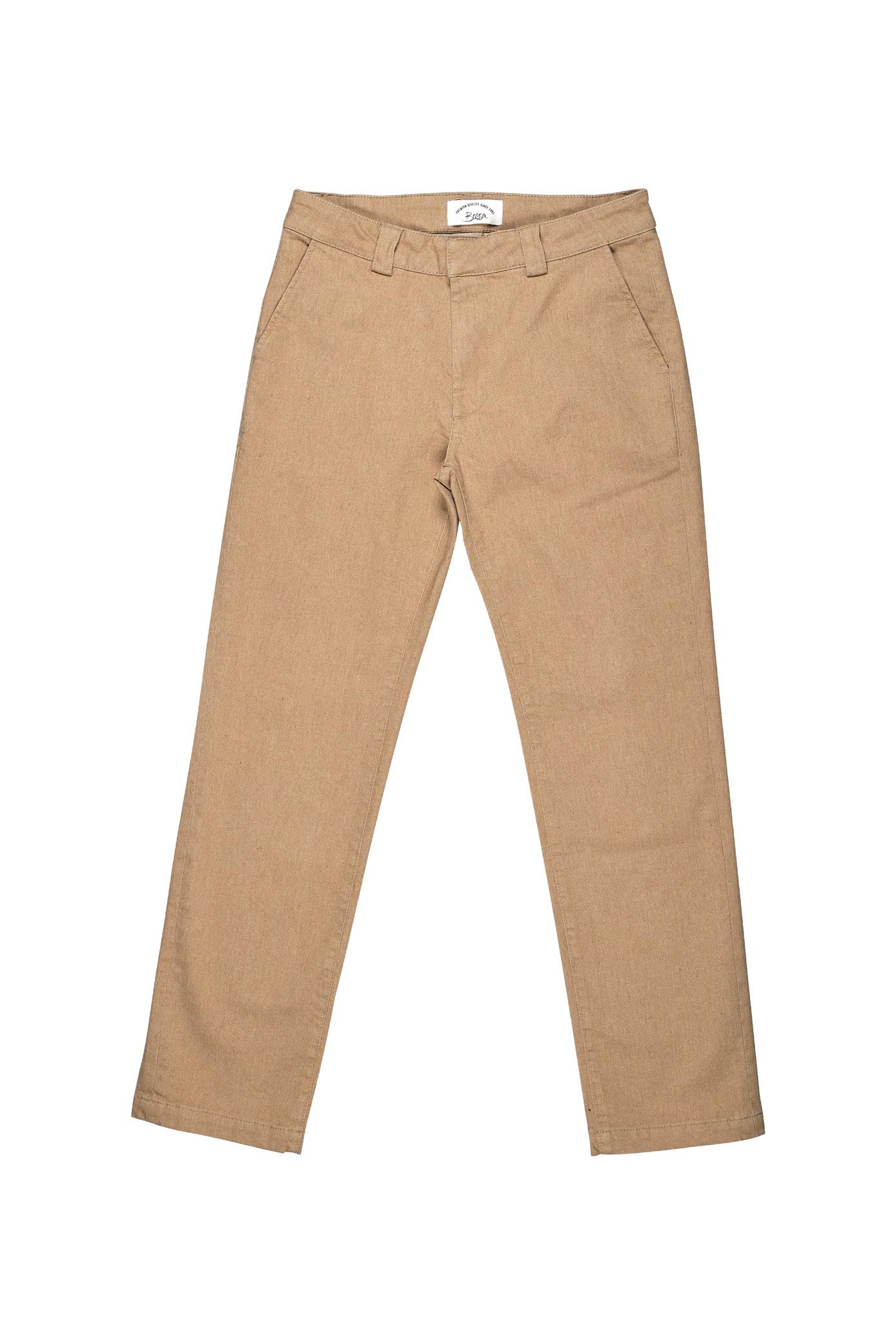
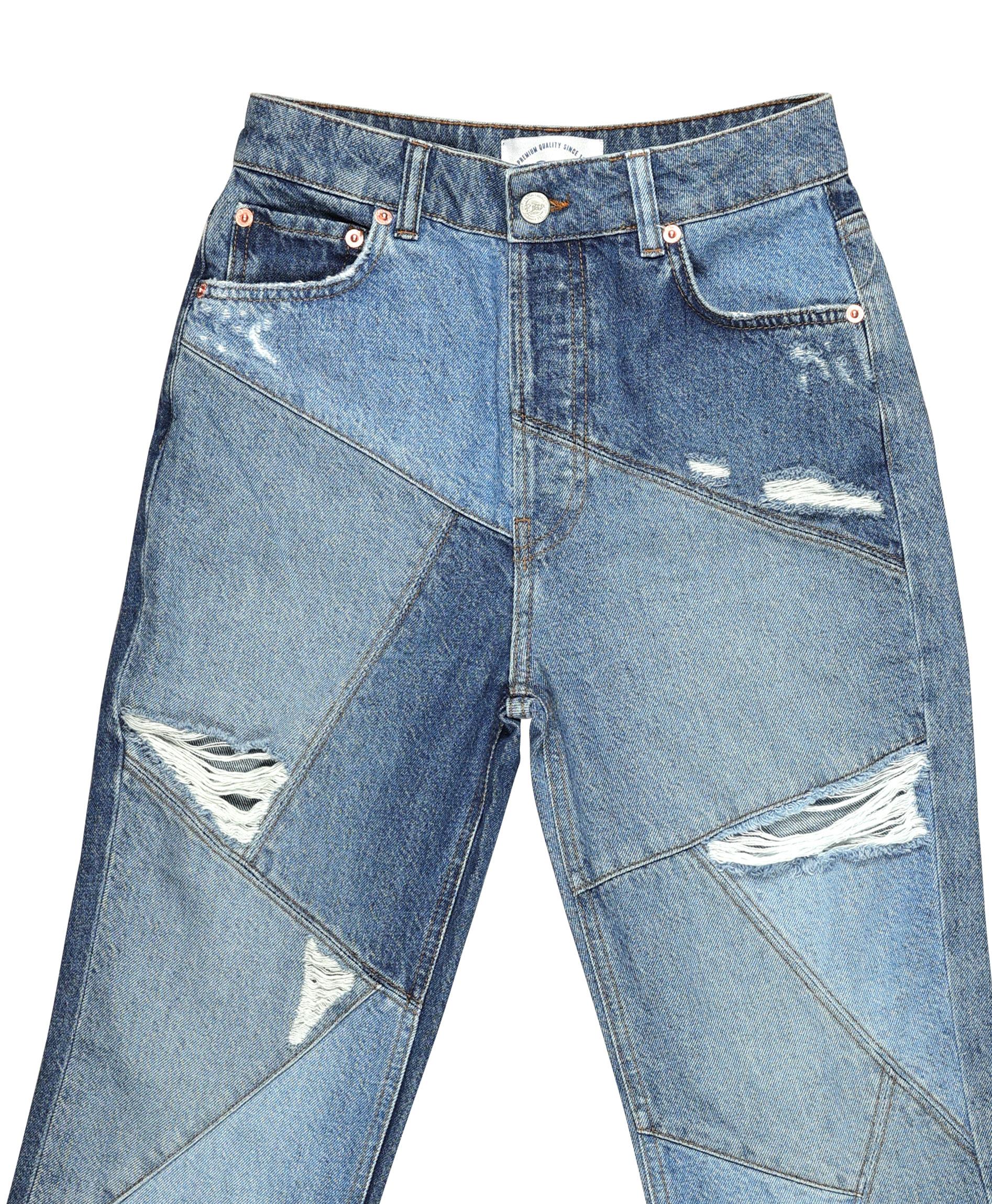
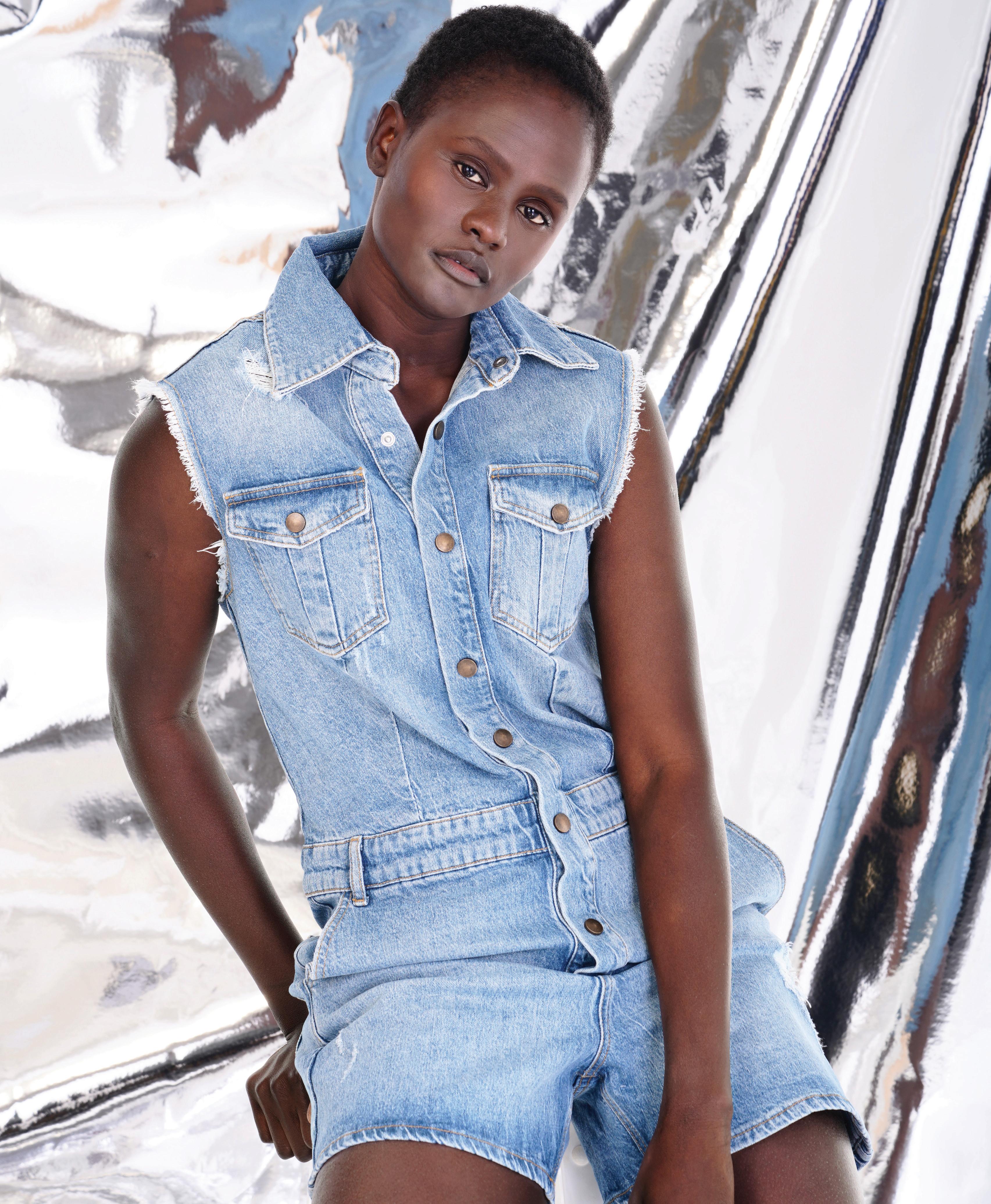
Most sustainable fabric: B210 technology, which is over 99 percent biodegradable within 210 days, can be applied to all Calik fabrics. It can be applied to any product with all levels of elasticity. We are talking about a completely biological dissolution, thanks to fiber and finishing technologies we have specially developed.
Most interesting story: Selfsized because it eliminates the risk of buying the wrong size jeans. With this technology, the size range has been reduced. For example, three people who are sizes 25, 26 and 27 can wear the same size jeans. This helps minimize any confusion consumers may have about size while shopping online and reduces the chance of having to return the item. This technology therefore reduces the carbon emission caused by the return/exchange process.


On fashion trends: Almost every concept in our collection prioritizes the need for comfort. The end consumers’ tendency to wear clothes in which they will feel comfortable and stylish has increased. Calik products meet different needs from rigid to comfort stretch and high elasticity. We can say that almost every concept of our collection, including D-Leisure, Rawtech and E-Last, incorporates these features.
On technology/investments: We have brand new projects that will contribute to the circular economy that we’ll be sharing soon.
Most sustainable fabric: The second edition of the Nothing Goes to Waste collection focuses on using the highest contents of recycled fibers without sacrificing strength, quality and the authentic denim aesthetic. Tulsi is one of our most sustainable fabrics, using 50 percent post-industrial waste cotton blended with 17 percent Tencel. The result is a beautiful authentic fabric with the perfect amount of softness that makes it versatile regarding fit, sizing and gender.
Best value: We have developed a menu of authentic stretch fabrics that range from comfort to mid to high stretch utilizing higher contents of post-industrial waste recycled cotton and Creora Regen fiber as an elastane alternative. New fabrics Cade and Beacon use Creora Regen elastane comprised of 100 percent GRS-certified pre-consumer recycled elastane. We have
incorporated a sustainable feature in every fabric component, addressing not only fiber but dye and finishing. The aim for this capsule is to cater to a range of needs but be focused on the number of fabrics we offer, being mindful of not overdeveloping, and allow brands to do more with one fabric.
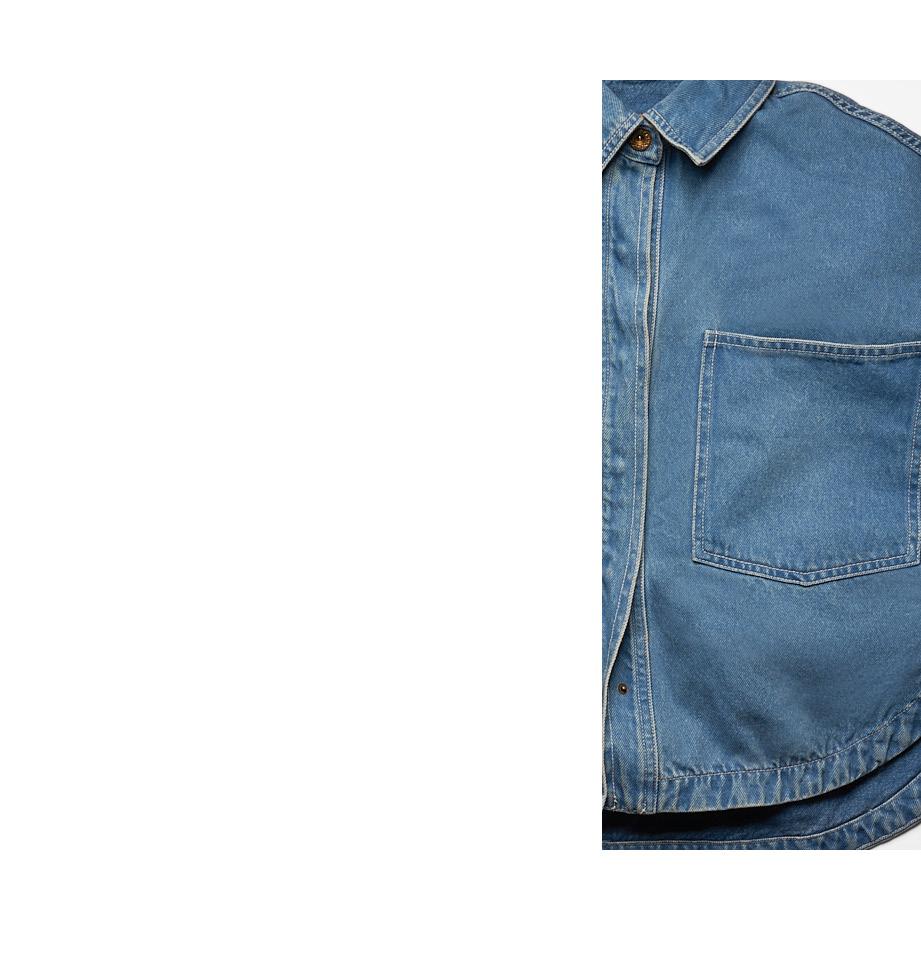
Most durable fabric: Manifest comprises 100 percent recycled fibers, which would typically impact the fabric’s strength, but it’s just the opposite. The yarns used are three-ply and blend 50/50 post-industrial waste cotton and post-consumer waste polyester. The poly makes this fabric much stronger and more durable. This fabric can take wear and tear making it ideal for workwear and outerwear pieces.
On fashion trends: Our Sunlit Shades addresses the post-Covid era dopamine dressing trend. We also love that silhouettes have expanded into an exciting menu of options for all genders and sizes. With that in mind, we’ve created a range of fabrics that appear heavier than their actual weight allowing for these fabrics to be used in looser silhouettes while maintaining texture and authentic character. We recognize the appetite for a new visual in denim character.
Most interesting story: The fourth edition of Cone Community Collection supports Mental Health Awareness. The fabric features a neon green selvedge ID, which is the color for mental health awareness. We aligned with Child Mind Institute, and 5 percent of our collection sales will go to this non-profit that supports children and families struggling with mental health and learning disorders.
On technology/investments: Cone Denim Parras has installed a Zero Liquid Discharge Wastewater Recycling System to recycle over 100 million gallons per year back into the denim production process using biological treatment, ultrafiltration and reverse osmosis. We’ve also added Flash Finish G2 finishing ranges in both Cone Mexico and Cone China facilities. The ozone technology reduces water consumption by 70-80 percent and reduces energy and chemical usage compared to traditional fabric finishing methods.
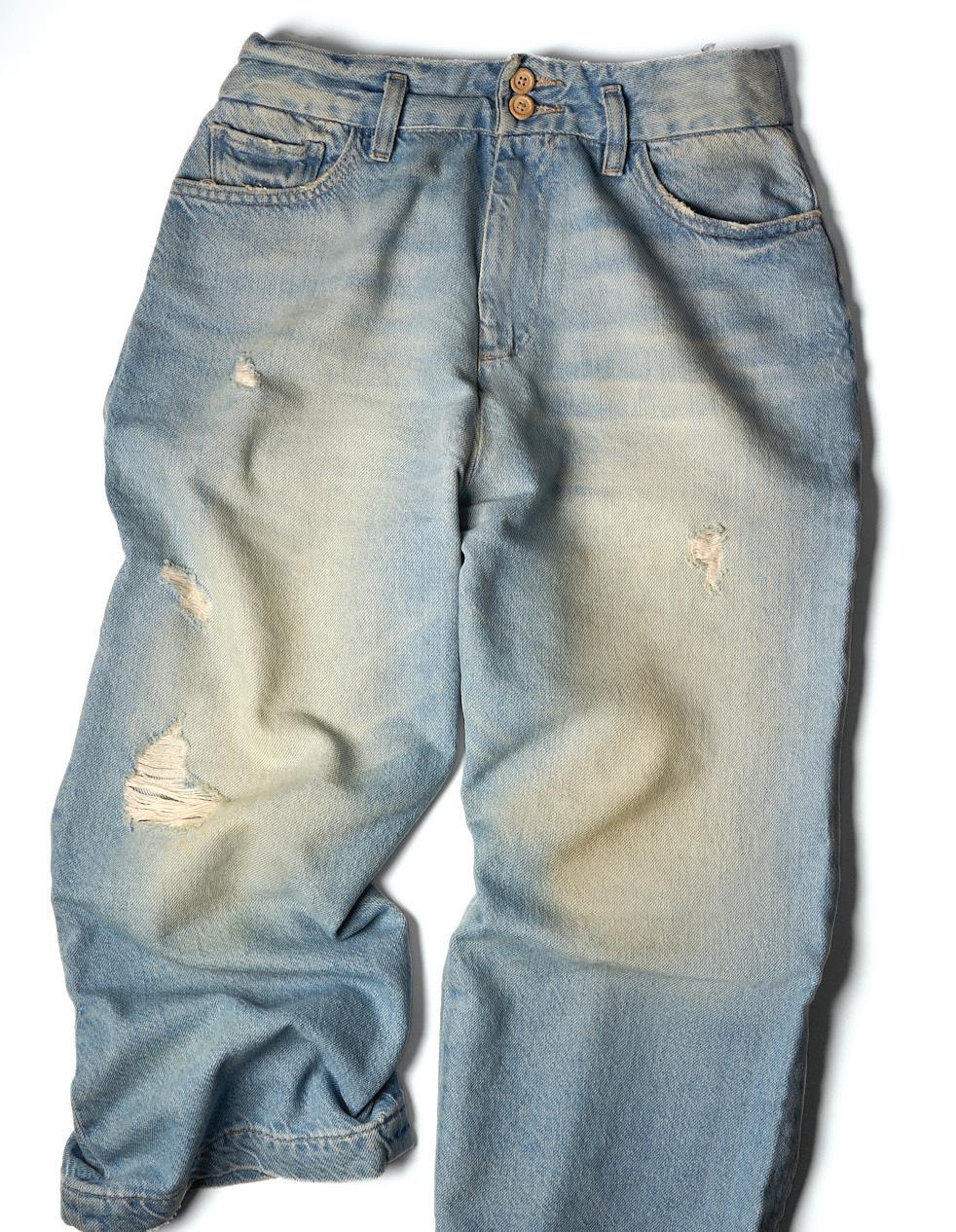




Most sustainable fabric: A fabric from the CBL x Miles Johnson–Lighter Touch Collection (XA-3822-A). It was also shortlisted for the Most Sustainable Product by Kingpins Show.
Best value: CBL’s continuous venture with Miles Johnson has proven to be a success and the Down to Earth and Staying Ahead collections are the ones that provides the commercial aesthetics and appeal to the brand, also the perceived value.
Most durable fabric: The Daredevils collection consists of fabrics with different performance and functional attributes and are more durable than conventional fabrics.
Most interesting story: Blue Infinity. This story of zero indigo dyeing that achieves wash outcomes similar to traditional denim fabrics is a one that has created a lot of buzz. Brands and consumers are excited to learn more about it.
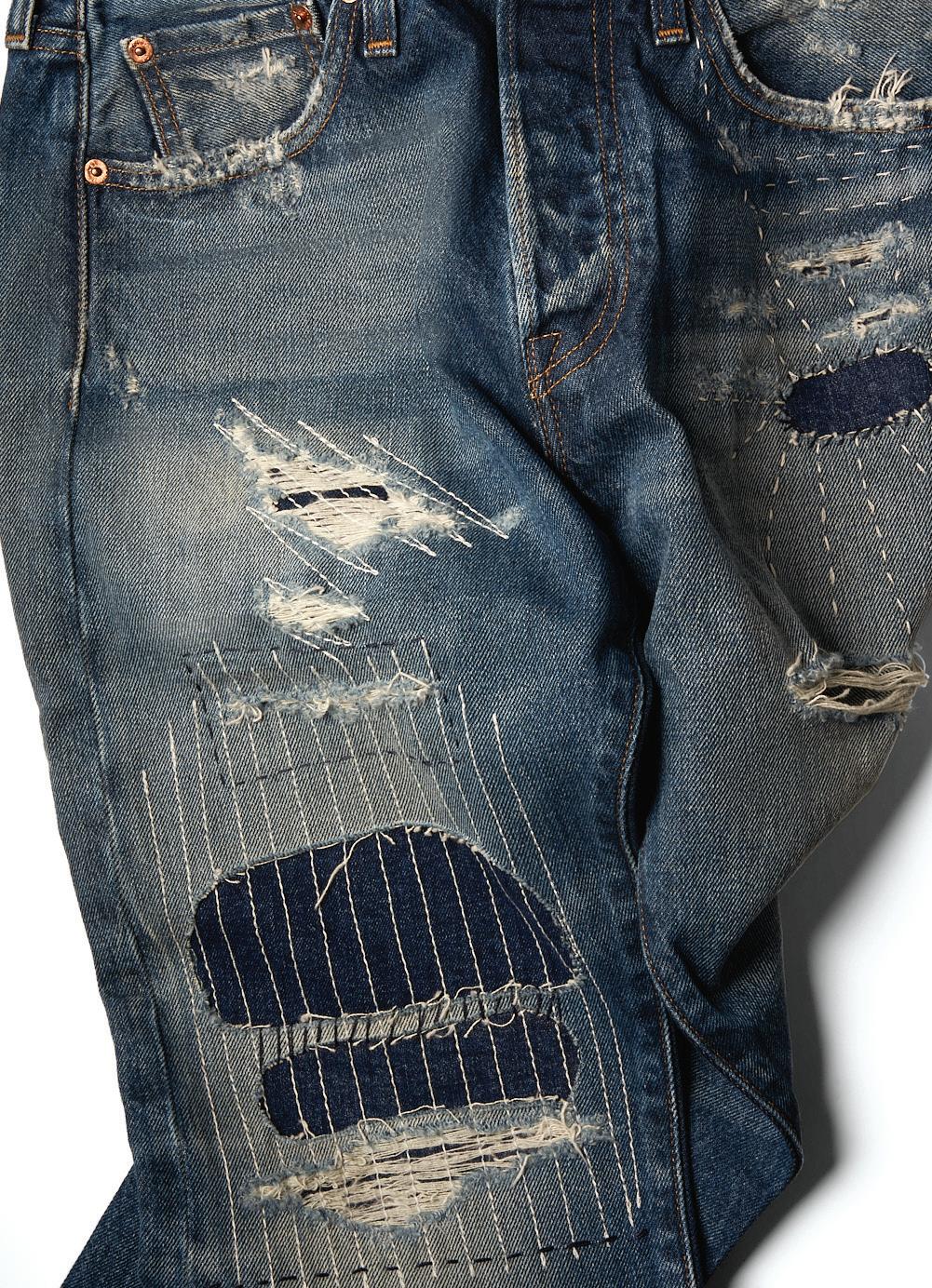

On fashion trends: New colors that catch the eye apart from regular denim products, lighter weight breathable fabrics and naturally soft hand feels. CBL has addressed all these areas and apart from that, there is a capsule collection based on jacquard designs to present uniqueness for Spring/Summer 2024.
On technology/investments: We have collaborated with PaperTale, a blockchain tech company that provides the utmost transparency in our operations. Also, the company facility possesses 200 acres of farmland where we are in the pilot stage of exploring regenerative cotton cultivation powered by FibreTrace, another transparency solution towards a better sustainable future.
globaldenim.com.mx
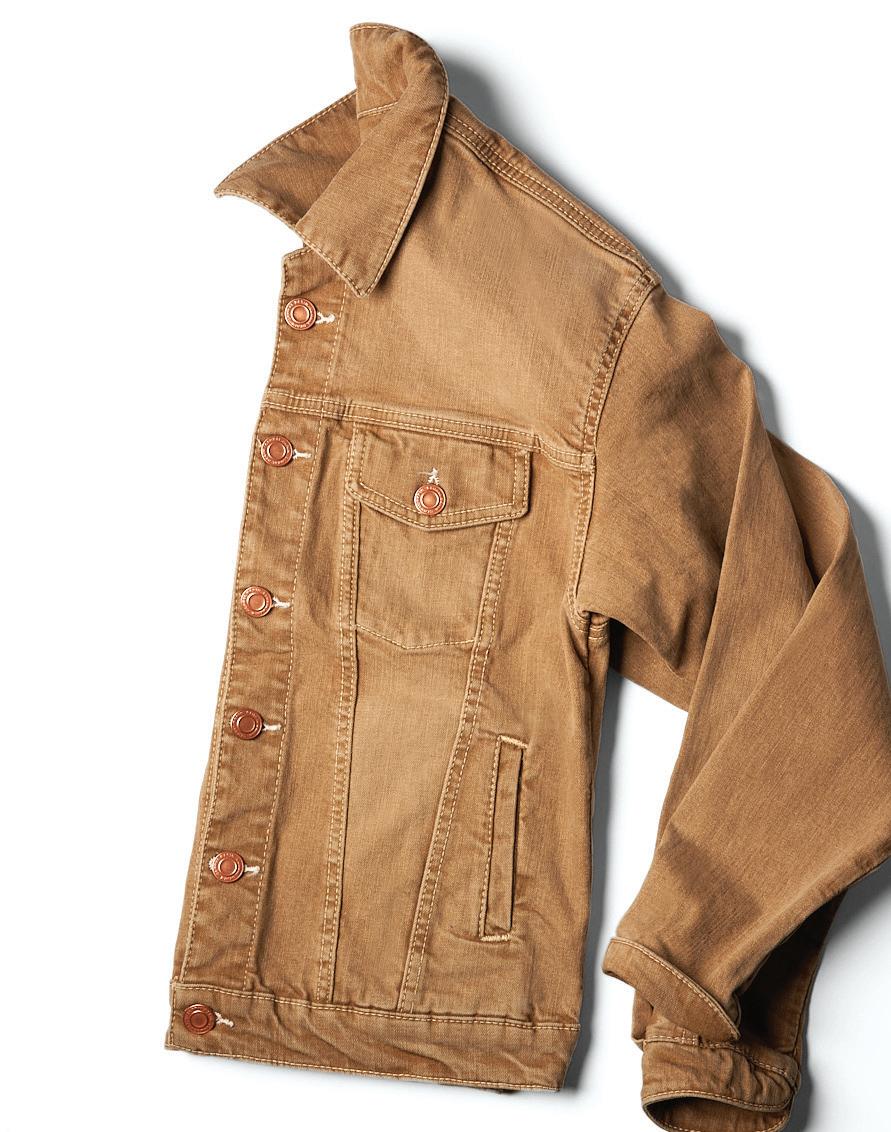
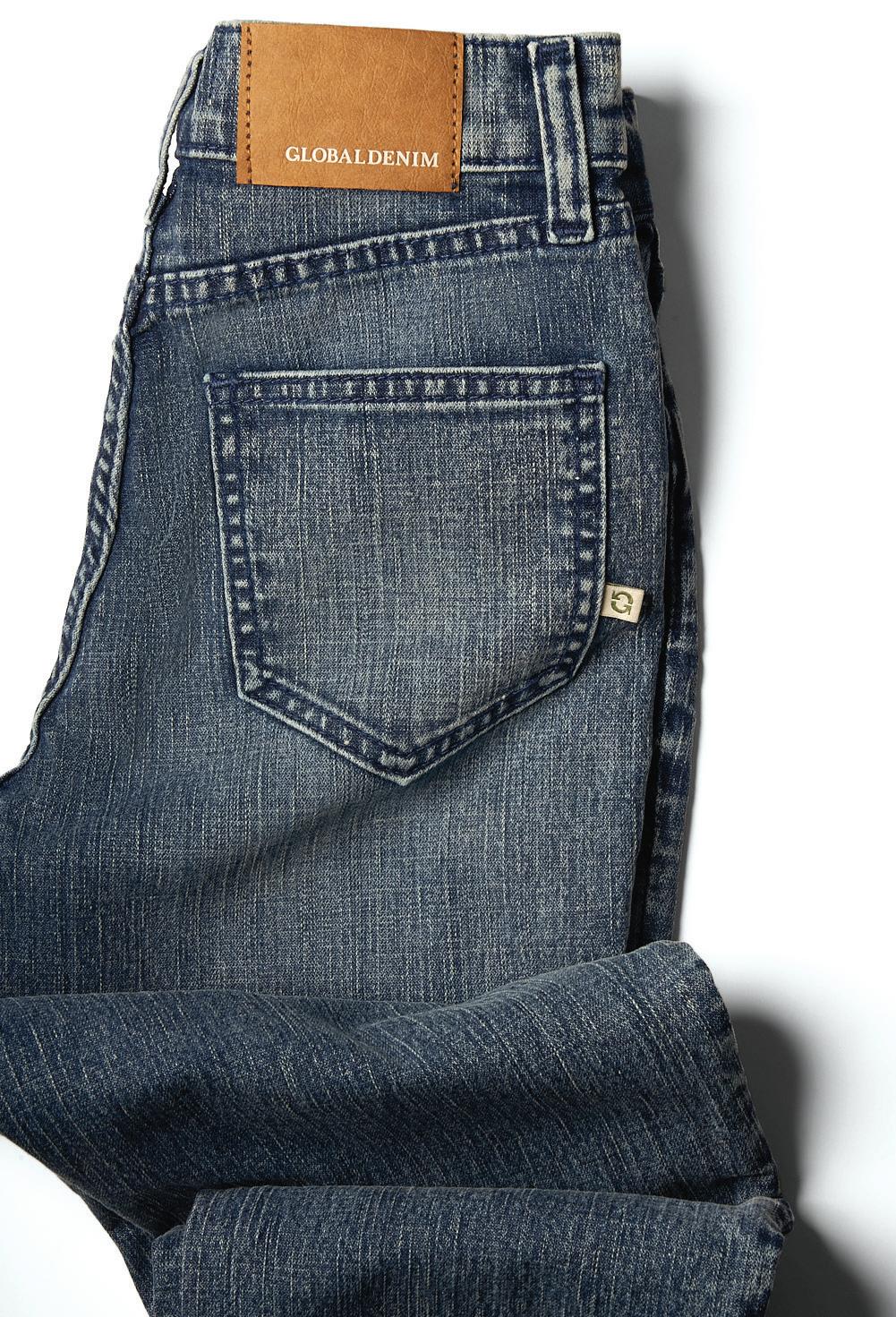
Most sustainable fabric: The ReZero collection encompasses the use of 20 percent recycled pre-consumer content plus waterless dyeing. It’s a revolutionary concept for us that we plan on expanding for future collections.
Best value: With the rise of men’s fashion, we are expanding our Supreme category with the Grand and Paramount, two fabrics with stretch over 80 percent and over 95 percent recovery with heavier 12 oz. weights before wash. The fabrics can adapt to many sizes. They resolve return issues on the supply chain and consumer level, not to mention they are designed for longevity with great resistance and laser-friendly qualities.
Most durable fabric: We have fabrics that offer durability and resistance. The Oak, Laura, Gravity and Ivy are examples of this because of their construction blend with polyester. We are also expanding our fabric category made with Lycra T400, which not only resists fiber damages and adds to durability but also has lasting comfort, fit and shape plus moisture-wicking benefits.
Most interesting story: The Light Ray laser friendly collection has two new shades of blue–beam and ray–which have amazing laser performance. This fabric family has constructions offering Lycra T400 and Tencel, which add amazing hand feel, softness, durability and resistance. We are also planning on introducing new fabrics made with hemp, which is revolutionary for this hemisphere’s production.
On fashion trends: We’re addressing the popularity of Western looks and Americana. We have a new category called A Trip to Japan where we developed vintage-feeling fabrics with Japanese inspired character in both stretch and rigid qualities. We are also looking at ’80s, ’90s and Y2K looks with new constructions.
On technology/investments: We have a newly installed caustic soda recovery plant that will allow us to reduce and recover 60 percent of water in the finishing process. We are adding new finishing machinery to be able to have more fashion looks, pigment dyes and coatings. We’ve acquired new machinery to decrease our CO2 emissions and save water in the same process. Finally, we are growing our recycled capability with new investments in spinning.
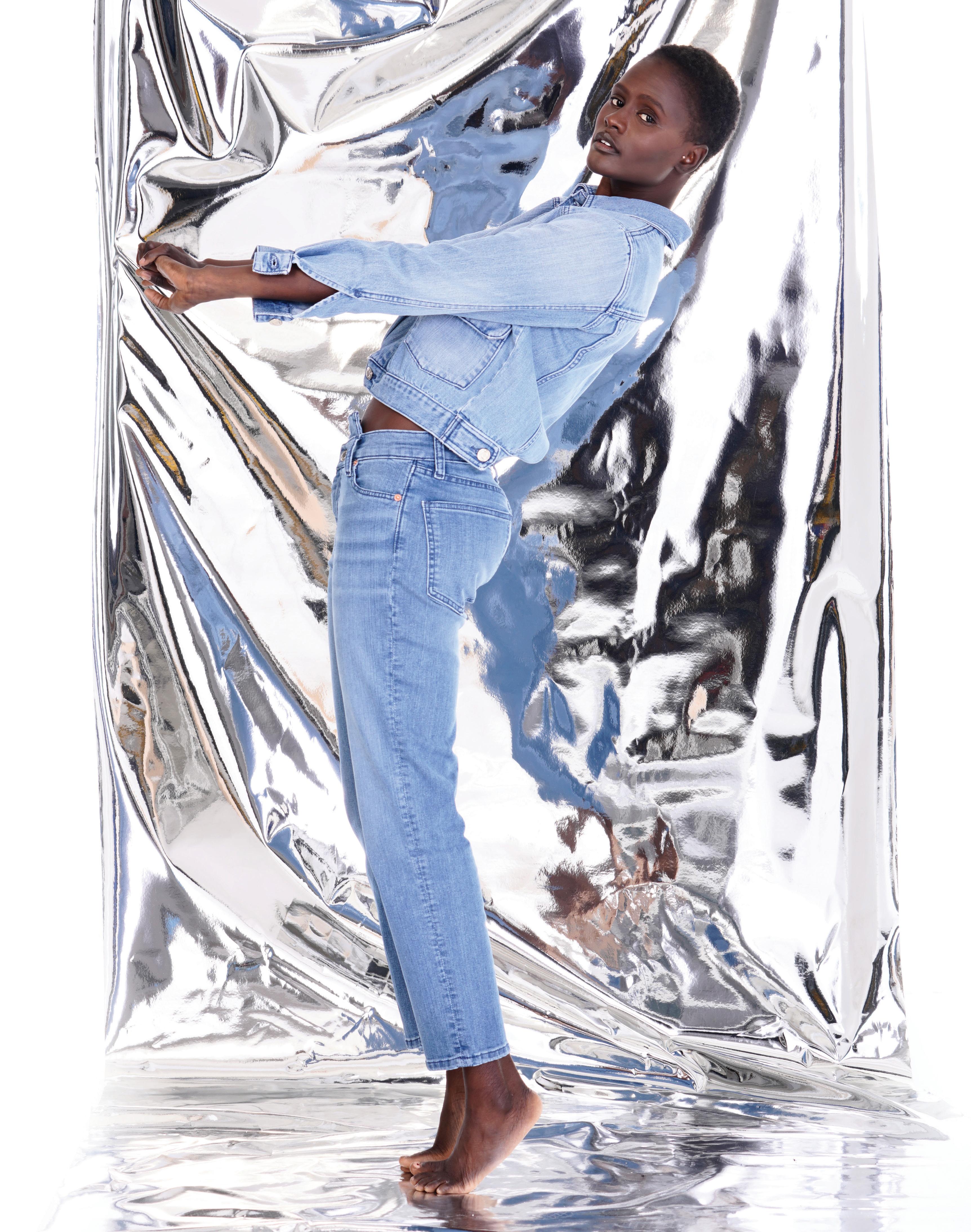


Most sustainable fabric: CTRL+Z is the new star of the collection and will be leading the direction of future collections. It contains no first-generation cotton, yet its appearance is identical to a standard fabric. The key ingredients are recycled materials and regenerated cellulosic fibers, which eliminates the use of water from the cotton production process and allows us to track and control sustainability along the supply chain. Using recycled cotton also reduces textile waste by giving fibers a second life. Our strength here is that we can achieve the high-end, fashion brand look with a high percentage of recycled content usage, which is difficult to find on the market. With our technology we make strong, long-life fabrics with low to high elasticity levels.
Most durable fabric: The most sustainable fabric is the one that lasts the longest. Our patented yarn spinning technology means
that our fabrics are stronger and more durable than traditional openend constructions ensuring denim looks great and lasts longer.
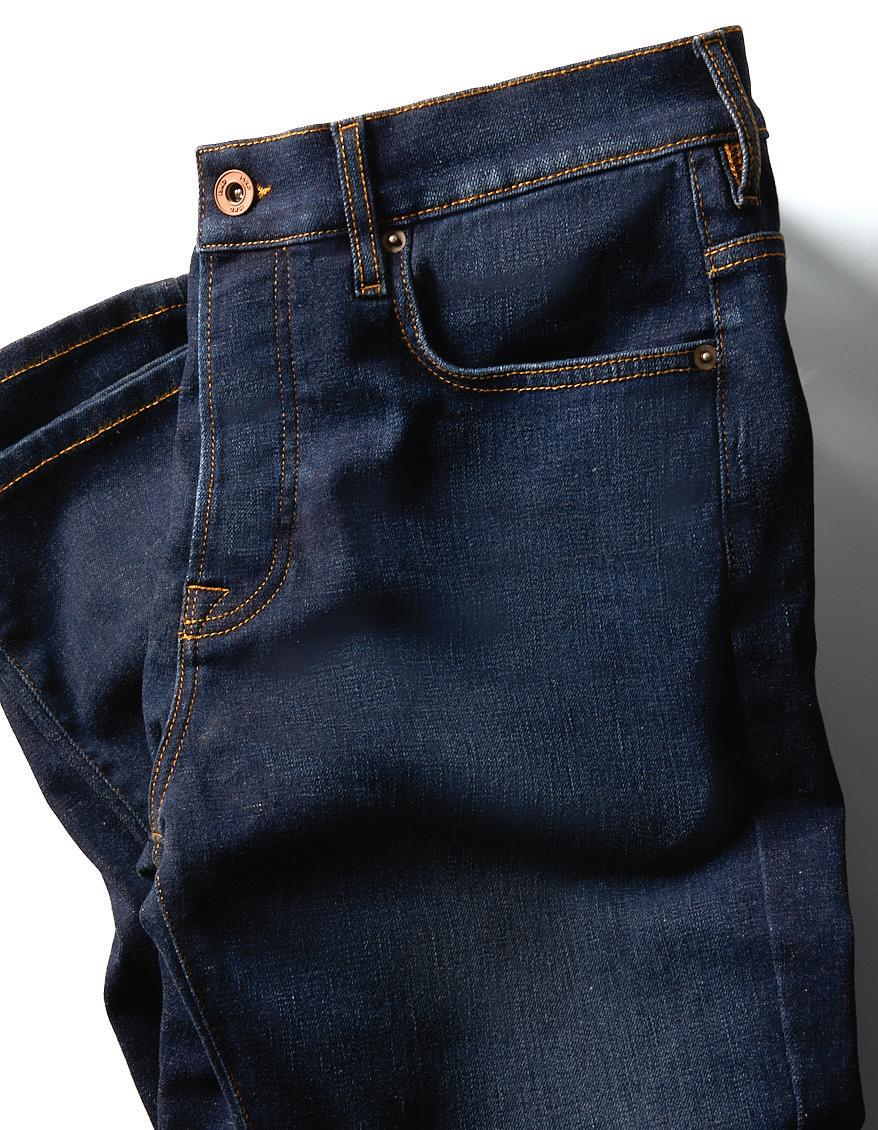
Most interesting story: Mineral Color is great color story with a sustainability factor using natural dyes. Normally textile dyestuffs are oil based and synthetic, but these pigments are extracted from rocks, applied to Isko Rigid fabrics and can be reused repeatedly. The colors create nice washdowns on the garments. They are also non-toxic, non-allergic, biodegradable and eco-friendly.
On fashion trends: More extreme interpretations of rips, cuts and patches; Y2K trends like low waists for men and women applied to various volumes in silhouette; cargo details; non-binary fashion; jeans as second-skin garments; polished denim for luxurious and elegant styles; a combination of voluminous silhouettes and lightness in denim; and playful coatings, foils, leather effects and color that takes denim to the next level.
On technology/investments: We have invested heavily in solar arrays in a bid to become more self-sufficient with renewable energy. So far, we have installed 3.5MW solar array with another 6.6MW planned by the end of 2023. Our recycled polyester facility opened in August 2021. Currently, we produce 25 tons of recycled polyester per day (GRS certified) but with further investment, we will have the capability of nearly tripling that figure in the next two years. We have also made changes to our main facility to support this. We have changed 300 looms to accommodate these recycled yarns and we continue to scale this up and roll out further developments.
Most sustainable fabric: Terra Denim collection is inspired, made for and integrates with nature. Besides carrying the colors of nature, this natural-based collection does not create chemical waste during production. Terra Denim has zero pollution of water, air and soil after all the processes. Additionally, the products are biodegradable.
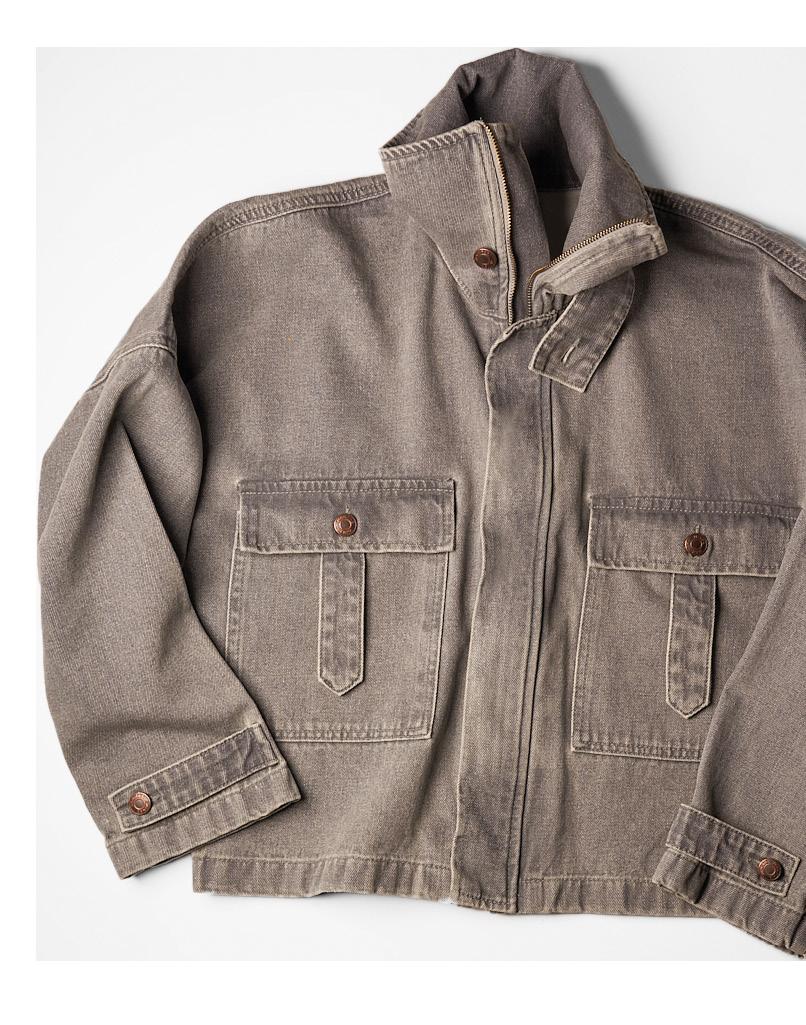
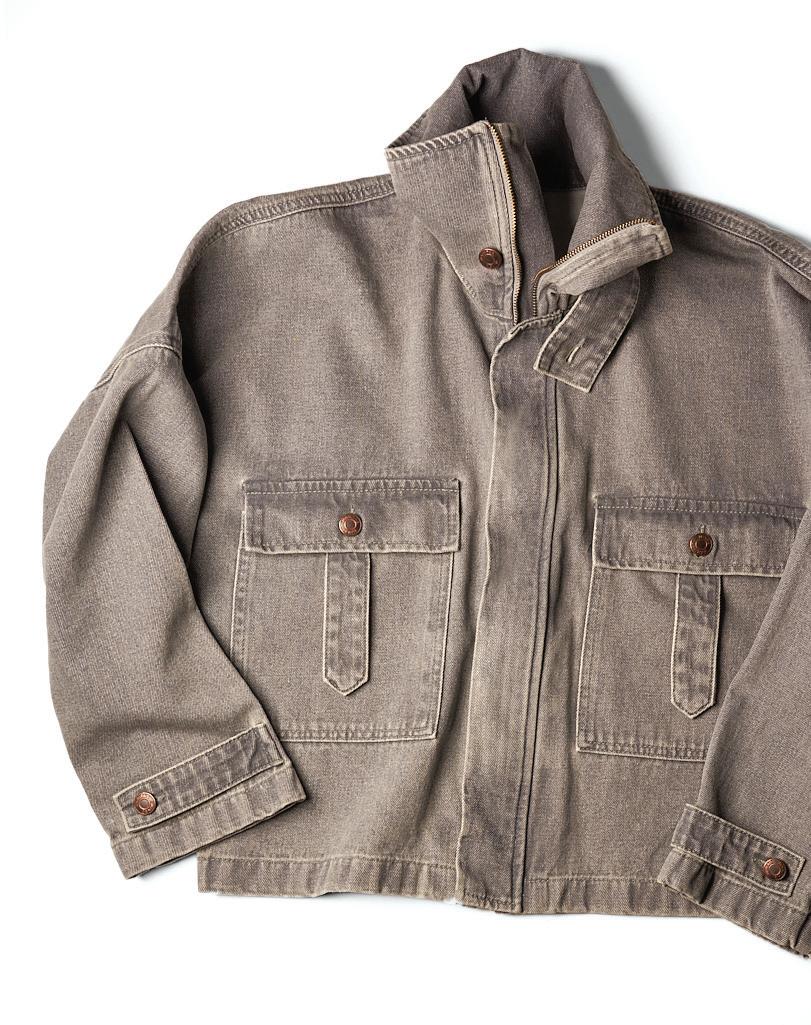
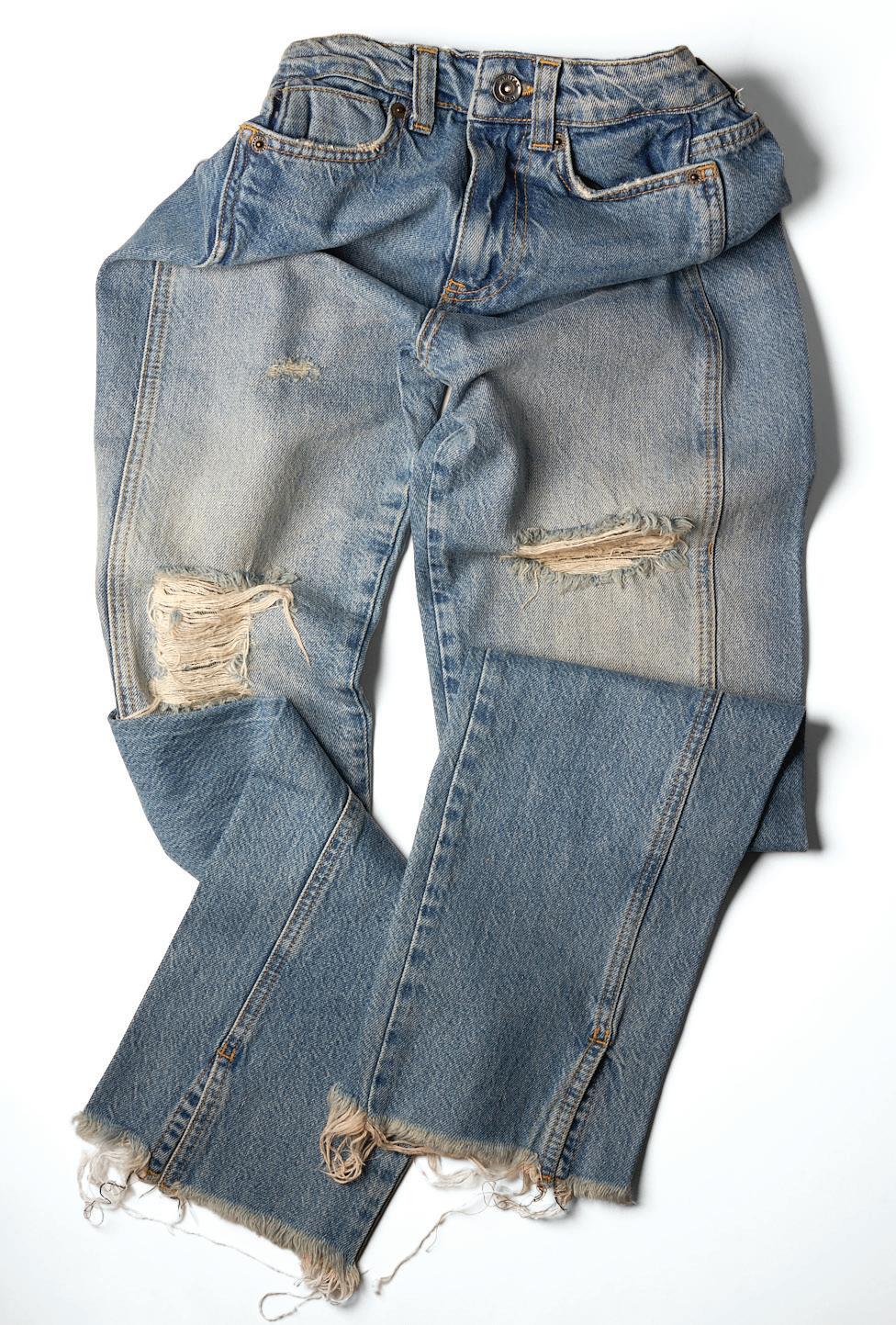
Best value: Cycle-FX, which uses sustainable stretch solutions.
Most durable fabric: Our Forever concept includes durable fabrics for multiple looks, including designs that have a flat appearance, strong visual effects, slow fading/high contrast and a look that does not lose its form and brightness after laundering.
Most interesting story: Our patented Terra Denim and Cycle-FX technologies give brands interesting and compelling stories.
On fashion trends: For women, loose fits are still the main player, but the skinny super stretch trend will return. For men, we see fits getting looser, baggier and more relaxed.
On technology/investments: This season, regenerative cotton products will be the next step for our future collections. Regenerative agriculture not only decreases the environmental impact but rejuvenates nature and ecosystems as well. These types of regenerative agricultural methods build soil health, allowing it to sequester carbon from the atmosphere while also generating other ecological benefits such as increased water retention and soil biodiversity.
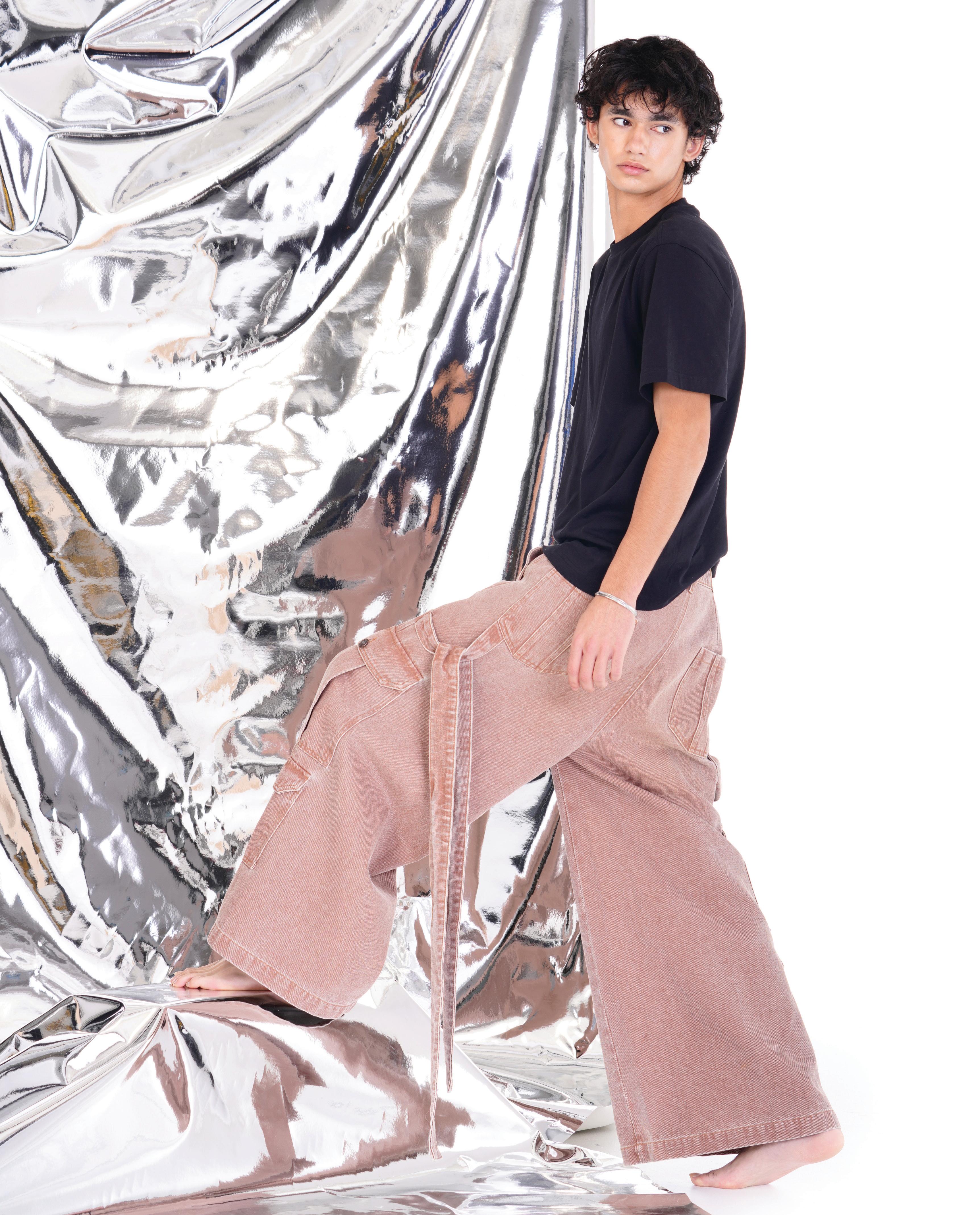


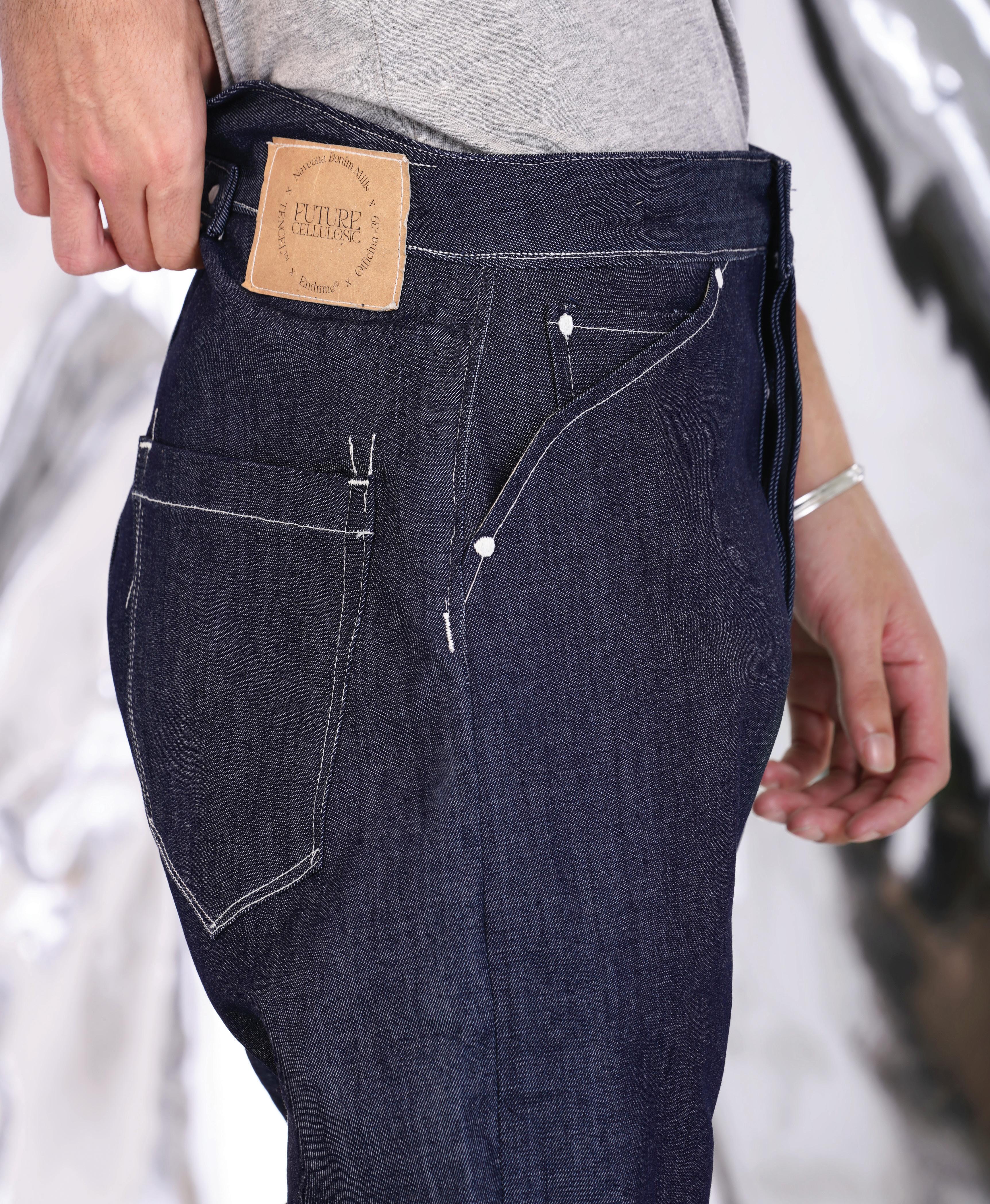
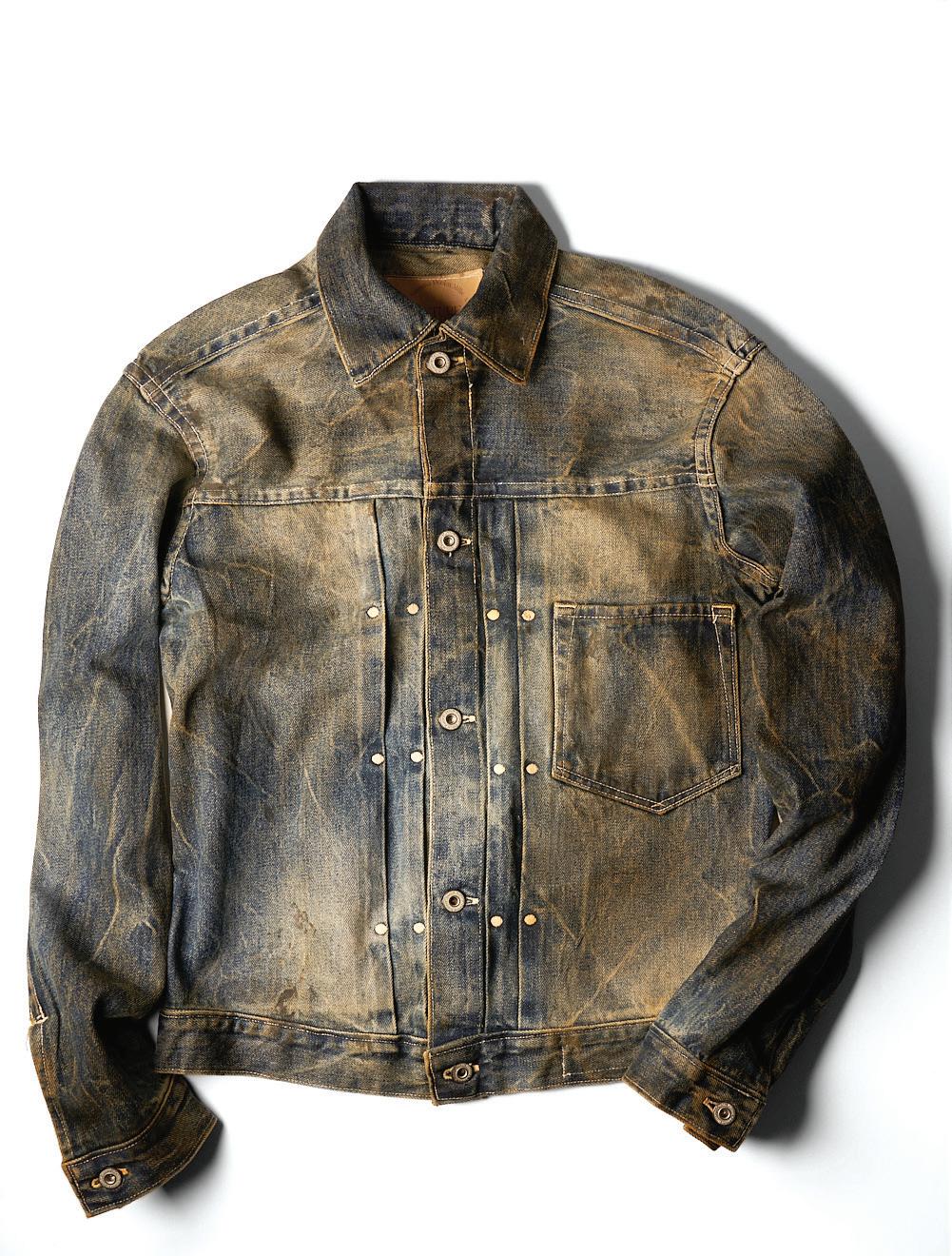
naveenadenimmills.com
Most sustainable fabric: Our most sustainable fabric is from our Holistic Denim collection, which represents the combination of the most conscious raw materials as well as processes to amplify our positive impact. ORA I83 fabrics are a product of eco-friendly raw materials and the best sustainable practices in indigo dyeing and finishing processes—a cutting-edge combination of Aqualter and Ecolean in indigo dyeing and H2NO for finishing—using dramatically less water, chemicals and energy.
Best value: Inspired by retro denim heritage and remixing it to modern day living, Retro-Soft fabrics provide comfort and softness without sacrificing a vintage authentic look. We have recently produced a new set of Tencel blended Retro-Soft fabrics which have an authentic and marble look with a super soft touch.
Most durable fabric: Dualistic fabrics are a winner this season. Designed in collaboration with The Lycra Company, they combine outstanding stretch and cooling characteristics, with an authentic denim look and touch. They offer very low growth and shrinkage, no bagging and sagging and two to three times better strength values compared to cotton fabrics.
Most interesting story: Self-Fit products fit different body types and sizes at the same time, guarantee comfort, help to prevent product returns and decrease the number of unsold items to be sent to landfills. A pair of Self-Fit jeans fits two sizes up or down, so it is adaptable to any silhouette and provides excellent shape retention and recovery.

On fashion trends: One of the trends in the market is vintage, authentic and rigid fabrics which also offer wear comfort and softness. Fabrics such as Retro-Soft and our mechanical stretch technology fabrics, Mecha-Stretch, reflect this trend perfectly combining style and comfort. Mid and high-stretch fabrics are also keeping their place in the market. Our Scopic, Flexitech and Self-Fit collections that offer 35-100 percent elasticity are high in demand too.
On technology/investments: Our spinning unit has been providing the best quality yarn with cotton and sustainable fibers to our denim units, with a minimum 5-7 percent recycled cotton in all our products. We will soon be able to offer products with 20 percent recycled post-industrial waste. We have also recently established Lakeside Energy (Pvt.) Limited, a 50MW wind power project aiming to provide renewable energy to more than 250,000 households in Pakistan. We are implementing a state-of-the-art solar energy system that will generate 7.5MW.
Most sustainable fabric: Swift N Sway collection is specifically designed using fibers based on natural origin. Through these fibers, we have achieved moisture management performance that was previously accomplished through plastic-based technology only.
Best value: Swift N Sway. It’s an amalgamation of fibers and technology, formulated using natural and regenerated fibers to gradually eliminate the use of polyester that’s accumulating in landfills and subsequently affecting marine life. It’s a denim that is sustainable and biodegradable.
Most durable fabric: We will be including 5 percent postconsumer waste in all denim fabrics to play our part and reduce the dependency on virgin cotton.
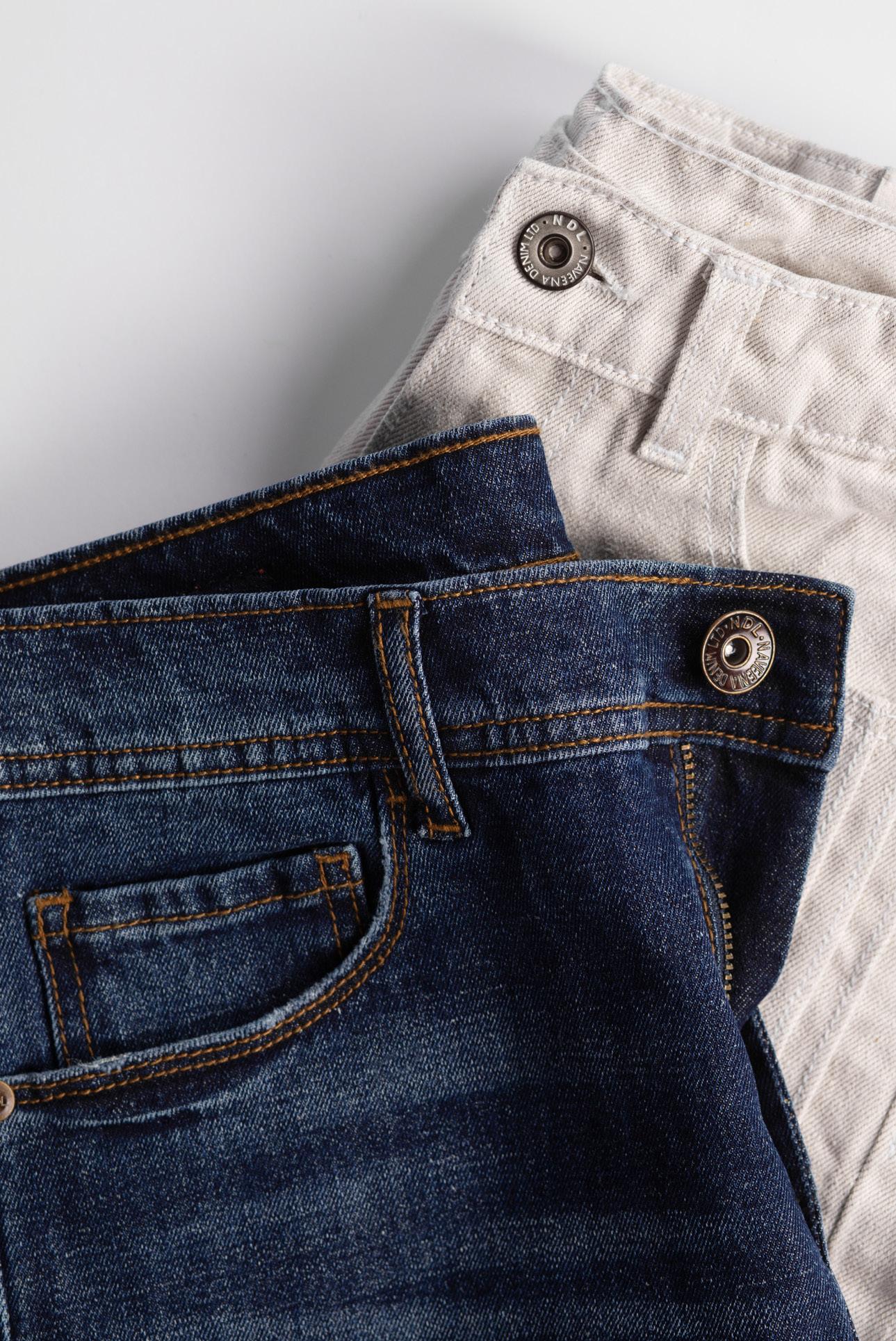
Most interesting story: Muse N Fuse is our fashionforward crafted denim and colored denim story inspired by NASA and Pantone. Constructed with creativity and novelty, the collection includes bright-colored denim to give “out of the blue” shades with sustainable dyeing techniques.
On fashion trends: Consumers now opt for denim fits that provide a relaxed comfort with vintage character. Comfort stretches have taken over skinny jeans and considering the buyer behavior, our collection mainly comprises regular-fit denims with high slub and crosshatch patterns.
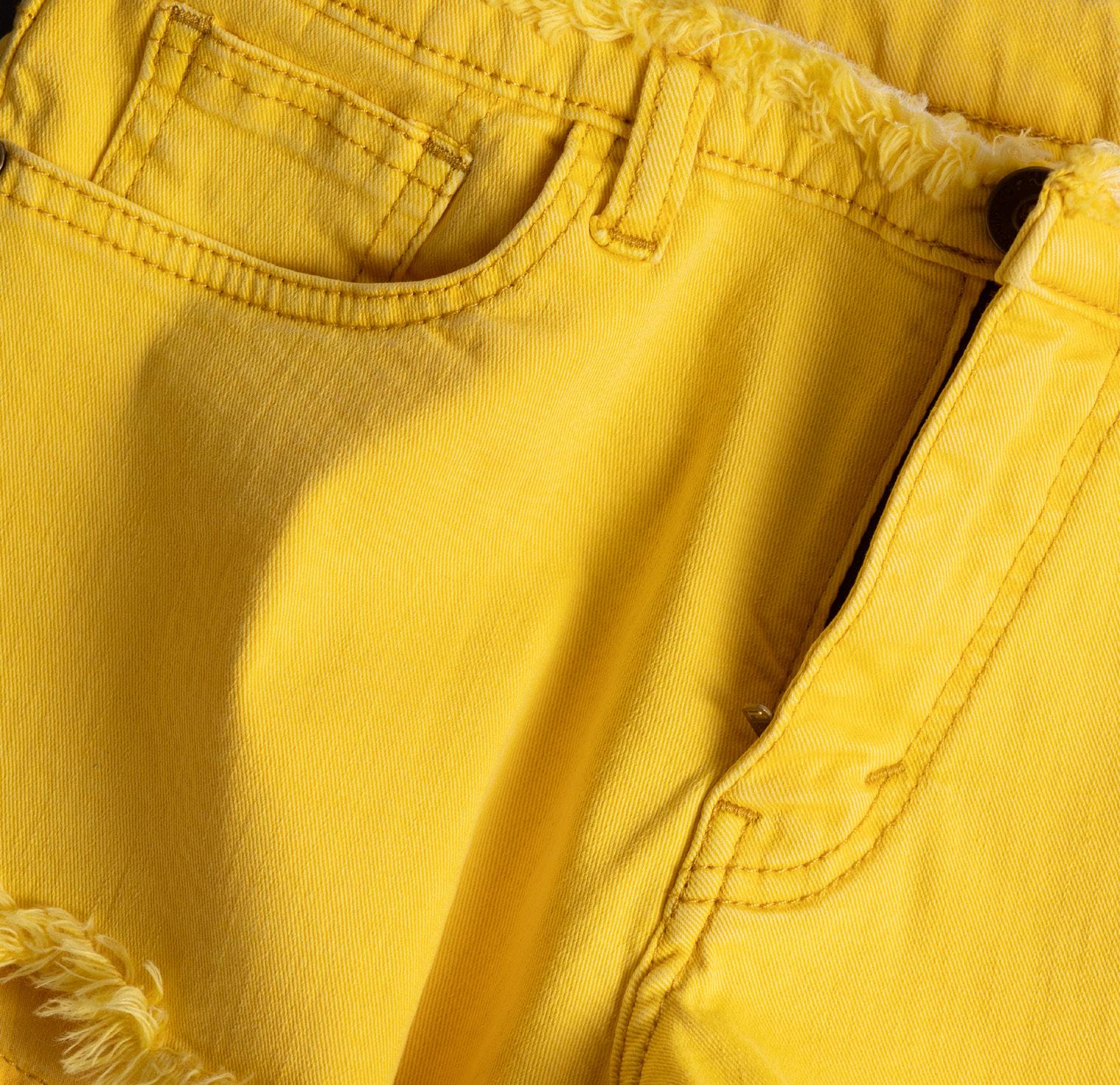
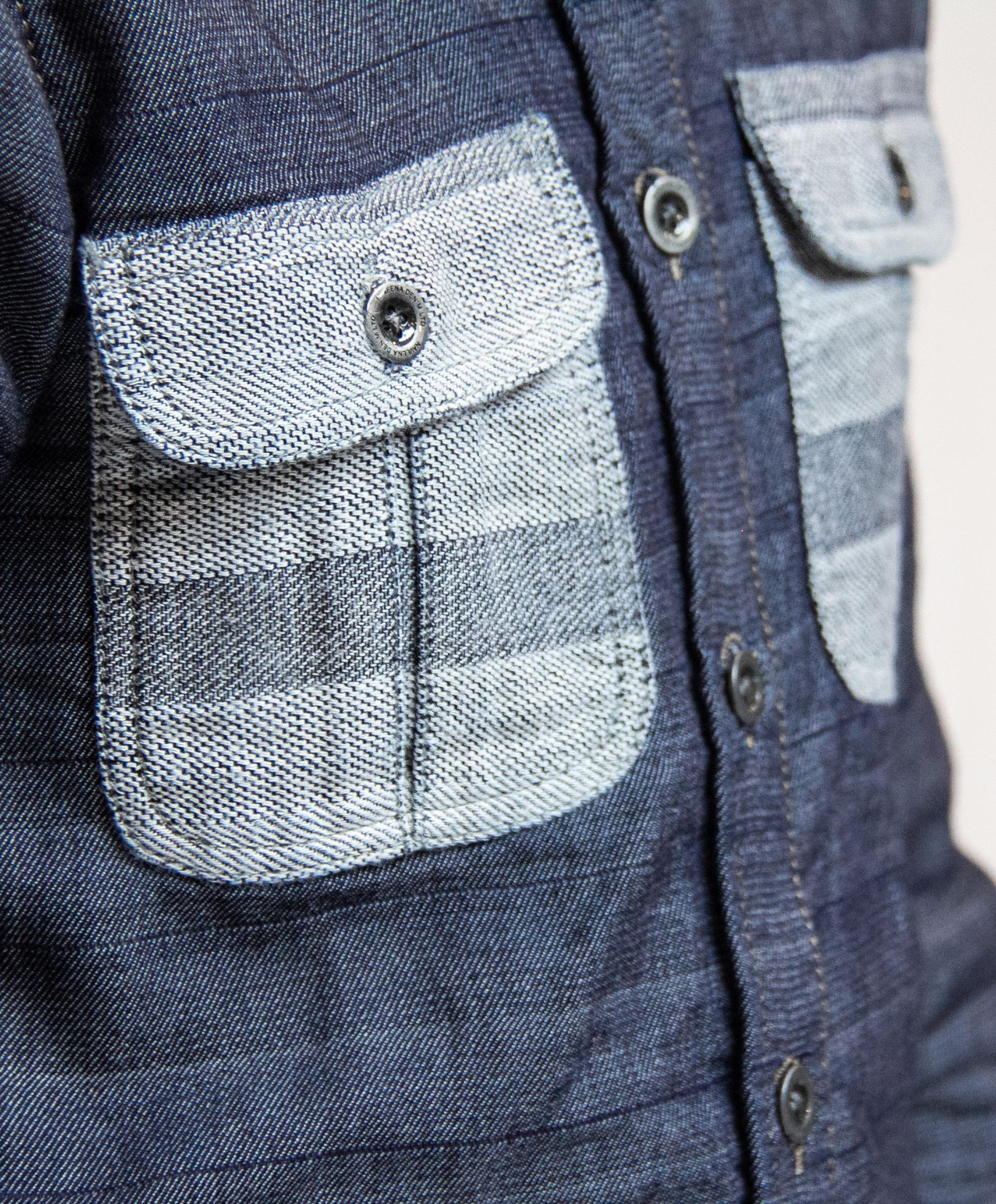
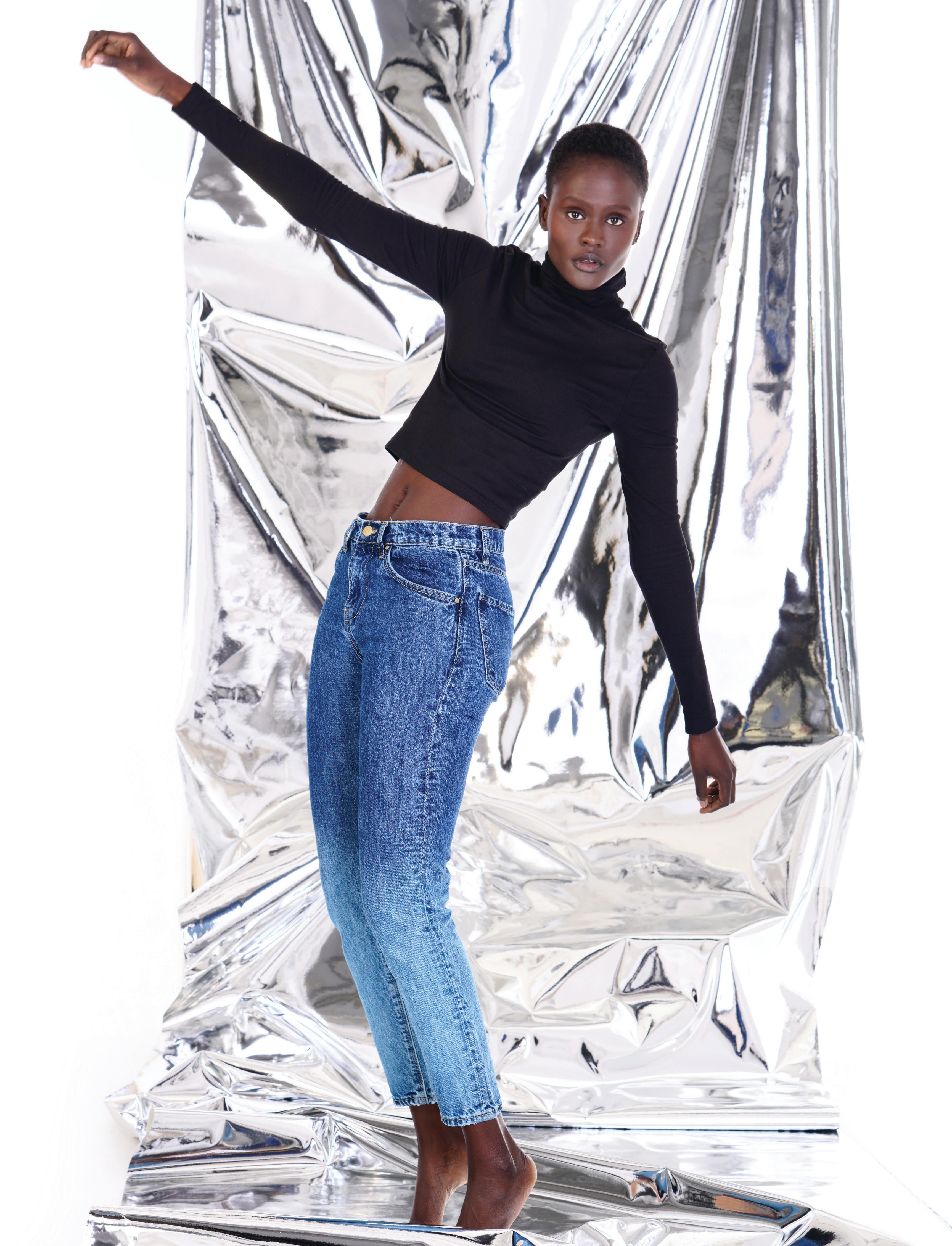
Most sustainable fabric: We are eco-engineering our best sellers with 50 percent recycled content and with zero-virgin cotton blends. We achieved zero-virgin cotton feats using only recycled–including pre-consumer and reclaimed fiber waste–and next-gen eco fibers like Lycra EcoMade elastane with 20 percent preconsumer material, Liva Reviva viscose made by using textile waste as a portion of its feedstock for viscose and Reliance Green Gold 100 percent post-consumer recycled PET.
In terms of fiber technology, we are moving toward a bluer biological future with Bioratio, a bio-designed fiber that is wastefree and climate-friendly. Bioratio is made with biologically recycled cellulose from a textile waste cocktail of 20 percent material waste and 80 percent wood pulp.
Best value: Gen R is 100 percent regenerative cotton for the regenerative generation. We source premium 100 percent regenerative cotton from an ethical regenerative cotton farm that produces the purest cotton that helps regenerate the biodiversity of the land, and the prosperity of the people and community.
Most durable fabric: Our Keeper Culture fabrics are blended for longevity, to be worn by everyone.

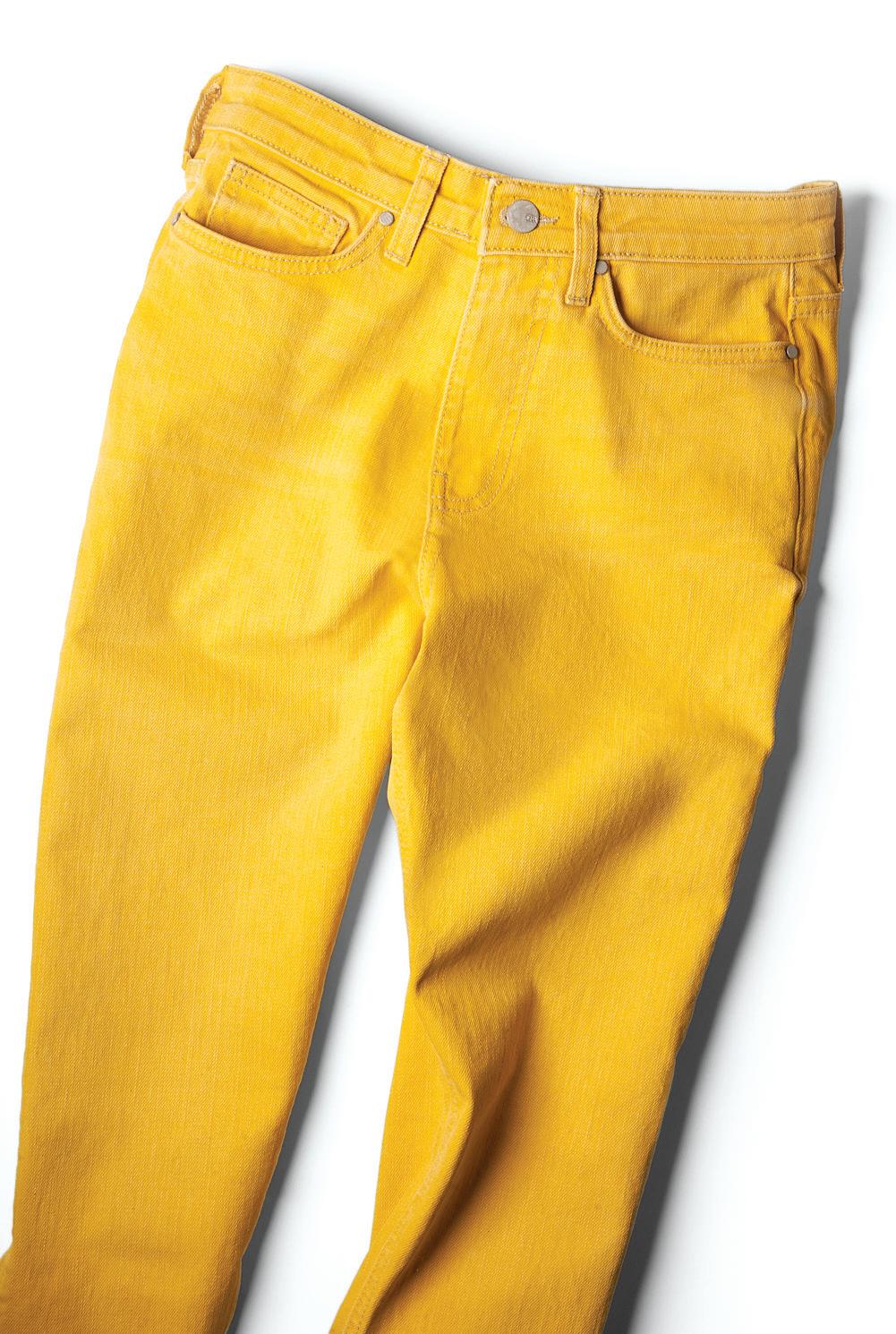
Most interesting story: We’re introducing BioBrewed Black, a natural coating made from industrial wood waste as well as a new palette of bio-based colors and coatings that span bright indigo to Lego-inspired colors made of mineral-based dyes.
On fashion trends: We are introducing our hedonistic Blu Dopamine, RePOP and #Y2K concepts with denim looks that intersect both the catwalk and the dance floor.

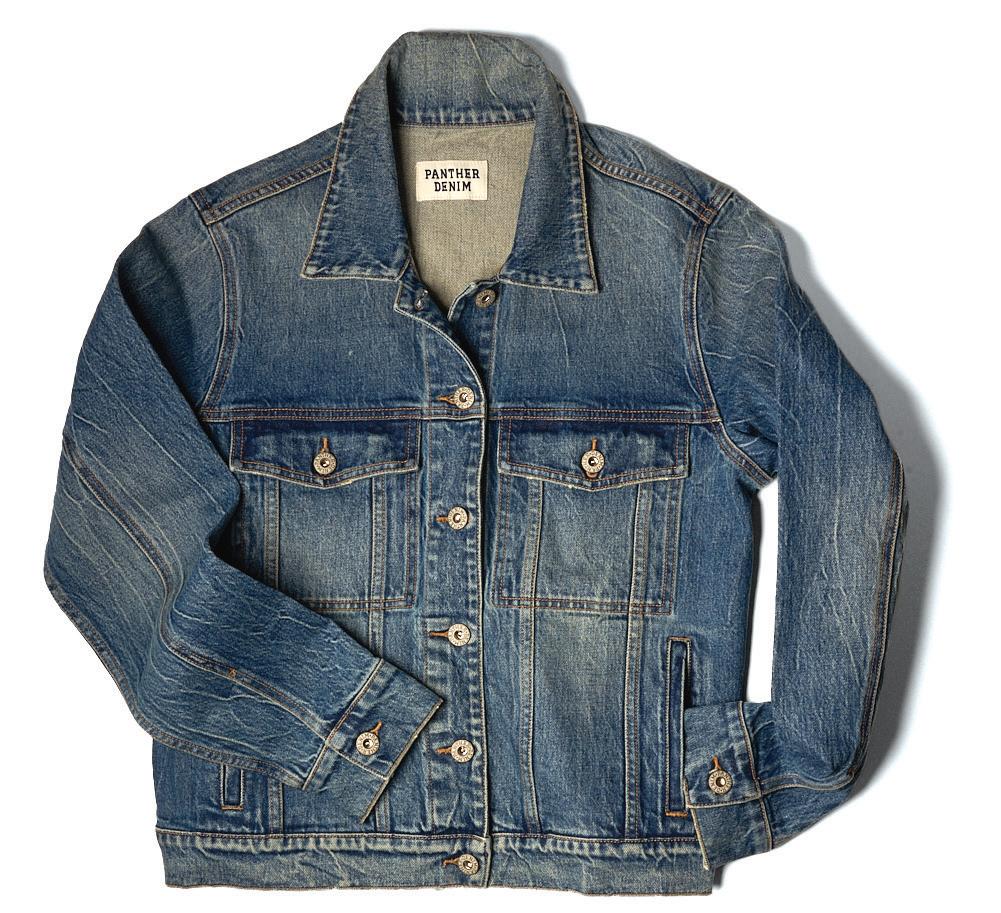
Most sustainable fabric: Our most sustainable fabric is dyed with our innovated dyeing system, Indigo Dehydro, which saves water usage by up to 90 percent and does not sacrifice the vibrant indigo hues in any industrial washes. The fabric is blended with 20 percent recycled cotton and engineered with biodegradable elastane.
Best value: We have developed a fabric with Matte Tencel Lyocell fiber blended with organic cotton. It has a natural softness and an authentic aesthetic, with the right amount of stretch and recovery. The fiber is from botanic origin with sustainable production and totally biodegradable.
Most durable fabric: A fabric from our latest collaboration with The Lycra Company. It is made with Lycra Dual Comfort technology, which is enhanced by the extremely durable Lycra T400, a fiber in the weft.
Most interesting story: Our Indigo Modal collection, which is a collaboration with Lenzing. It uses Tencel Modal with Indigo technology, a sustainable spun-dyed technology that adds indigo pigment during the fiber production process. No additional dyeing is needed which results in significant environmental savings in terms of water, chemicals and energy.
On fashion trends: We believe that the market will shift from the cracked marble look to a more slub look. Re-Loom is the extension of our vintage collection Marbelous, which is our answer to the emerging 1920s trend.
On technology/investments: We are developing a new finishing that provides extraordinary softness but the most important part is sustainability. With a closed-loop system, all resources will be reused.
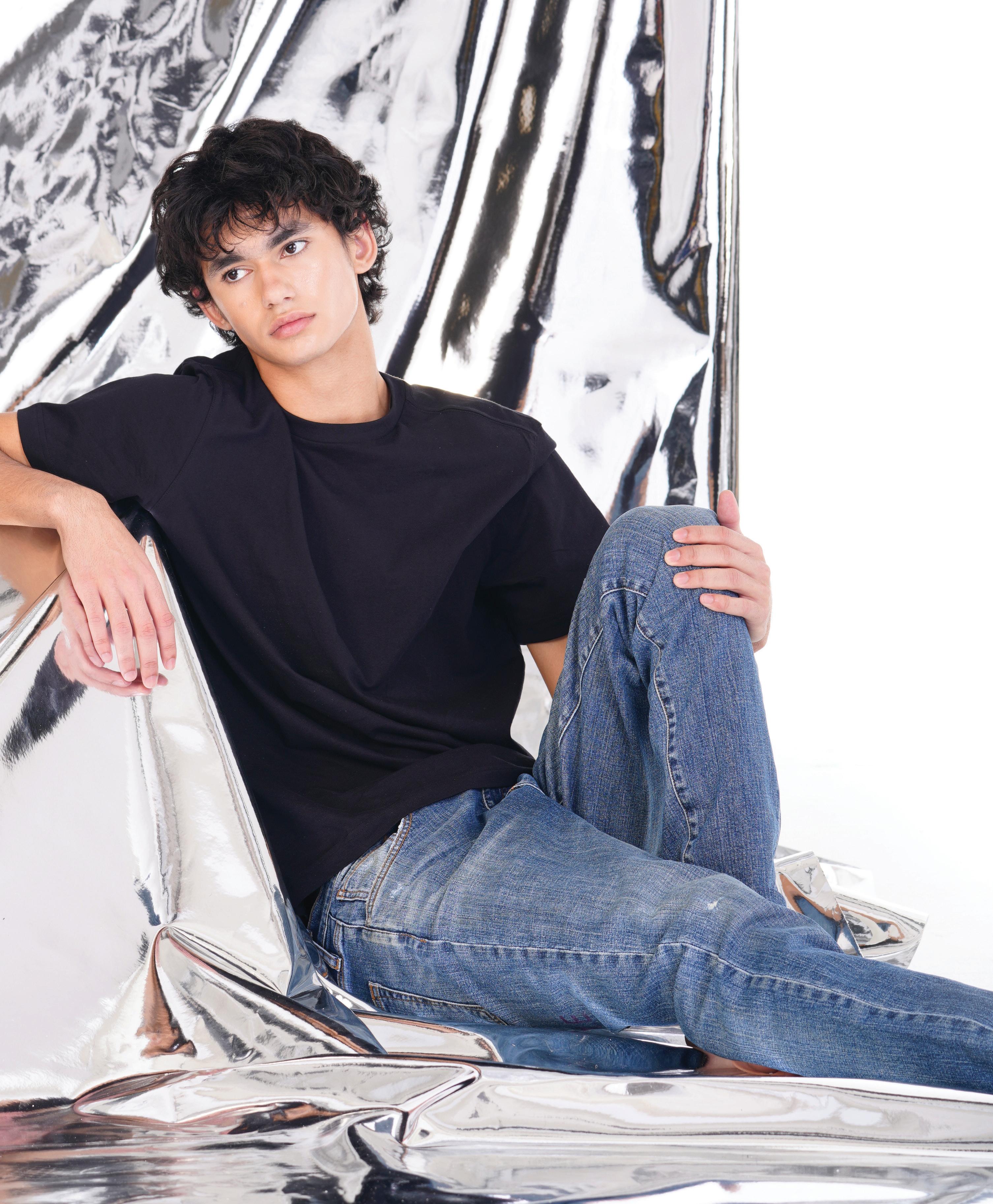

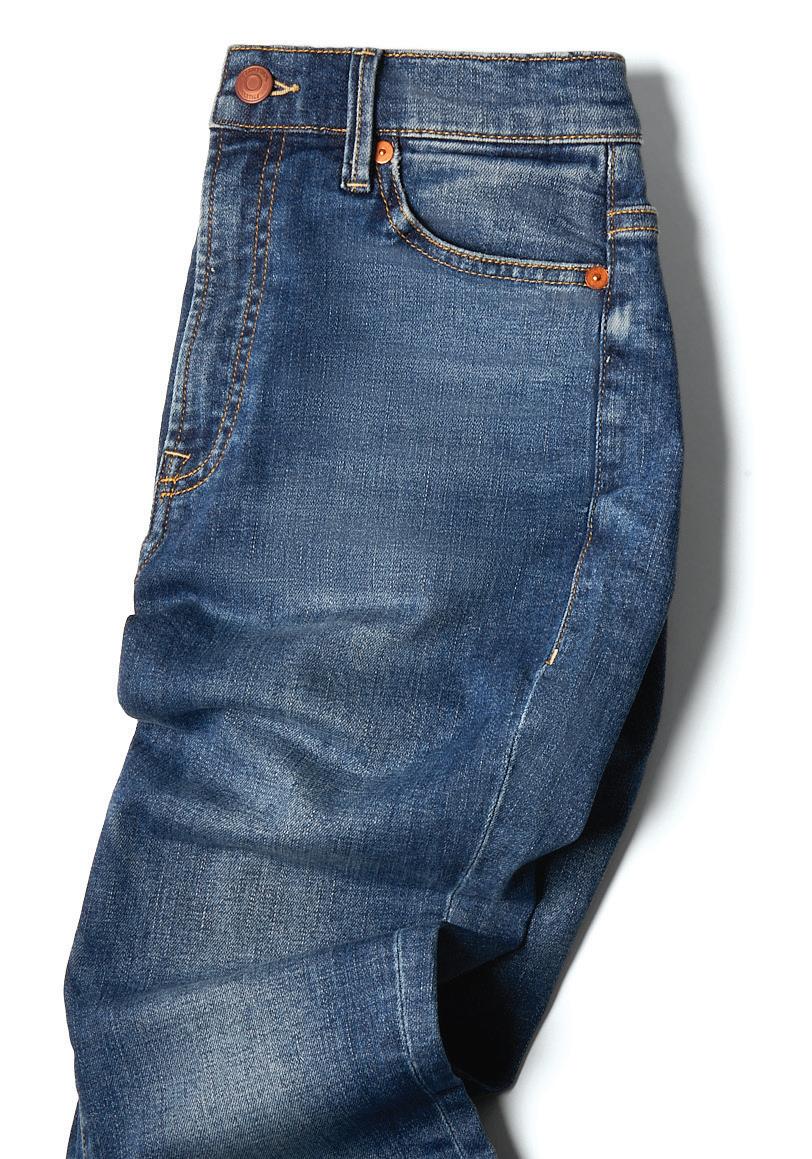
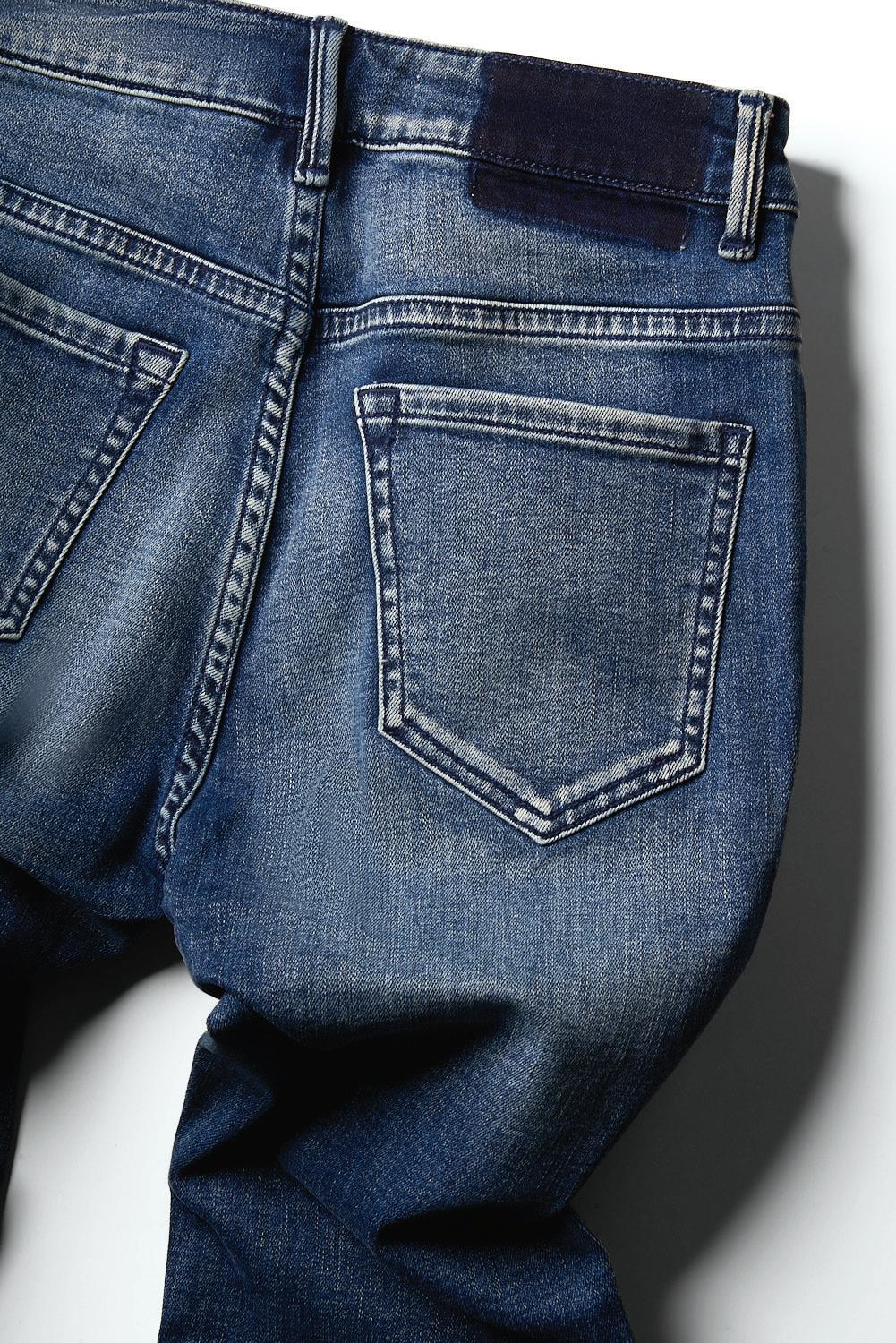
prosperity-textile.com
Most sustainable fabric: Leave No Trace is the most sustainable family of products, made up of fibers that will fully degrade, including CiCLO and Roica V550.
Best value: Our best value fabric checks all these boxes. It is sustainably dyed with pre-reduced indigo low dip water saving technology (avatar blue) and uses Roica V550. It is a dark versatile indigo shade and has comfort stretch allowing for a wide variety of fits.
Most durable fabric: Our Blue Force collection is made with ultrahigh molecular weight polyethylene fiber (UHMWPEF), to deliver higher tearing/tensile strength and abrasion resistant performance.
Most interesting story: Galactic, a stretch fabric based on biotech fiber technology, has been compelling to the consumer. We eliminate petroleum-based performance fibers and outperform conventional stretch denim using fibers that come from nature and go back to nature (corn, sugar cane, etc.).
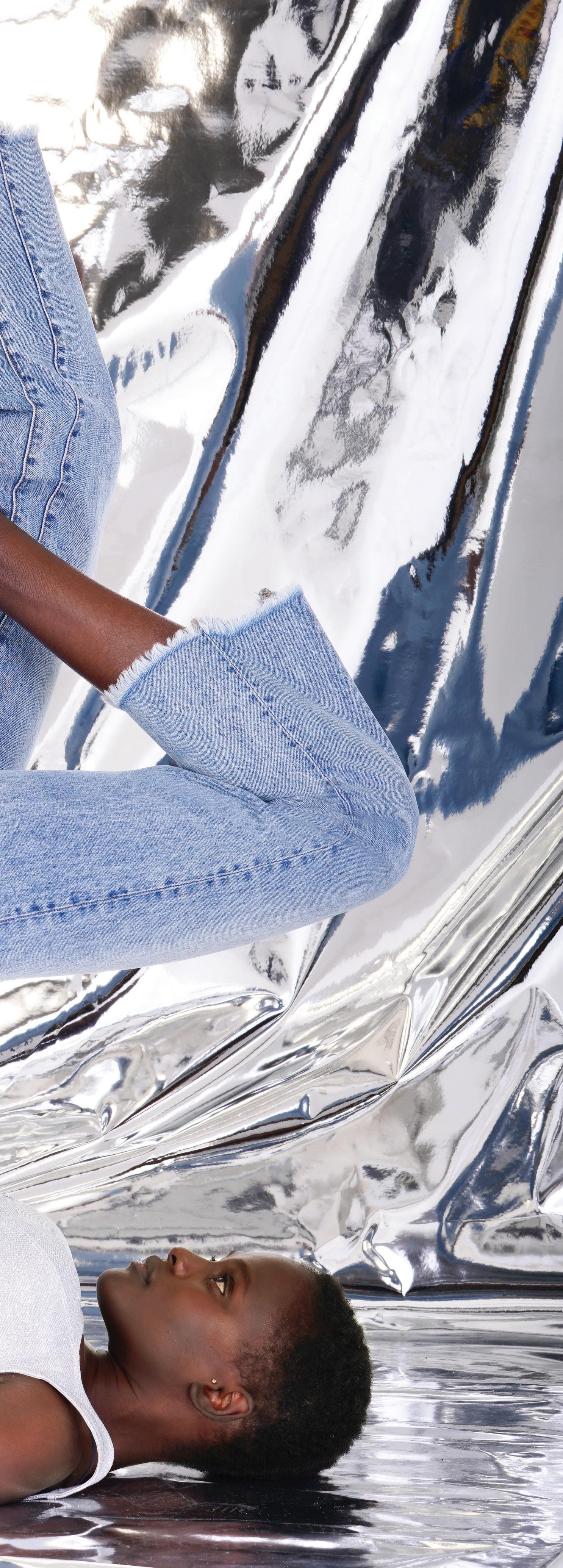
On fashion trends: Slate Gray is a new shade in line with the trend for more color It is a blue casted gray that washes and behaves like indigo.
On technology/investments: We are expanding the capacity in our Vietnam mill to provide more flexible sourcing options to our customers.
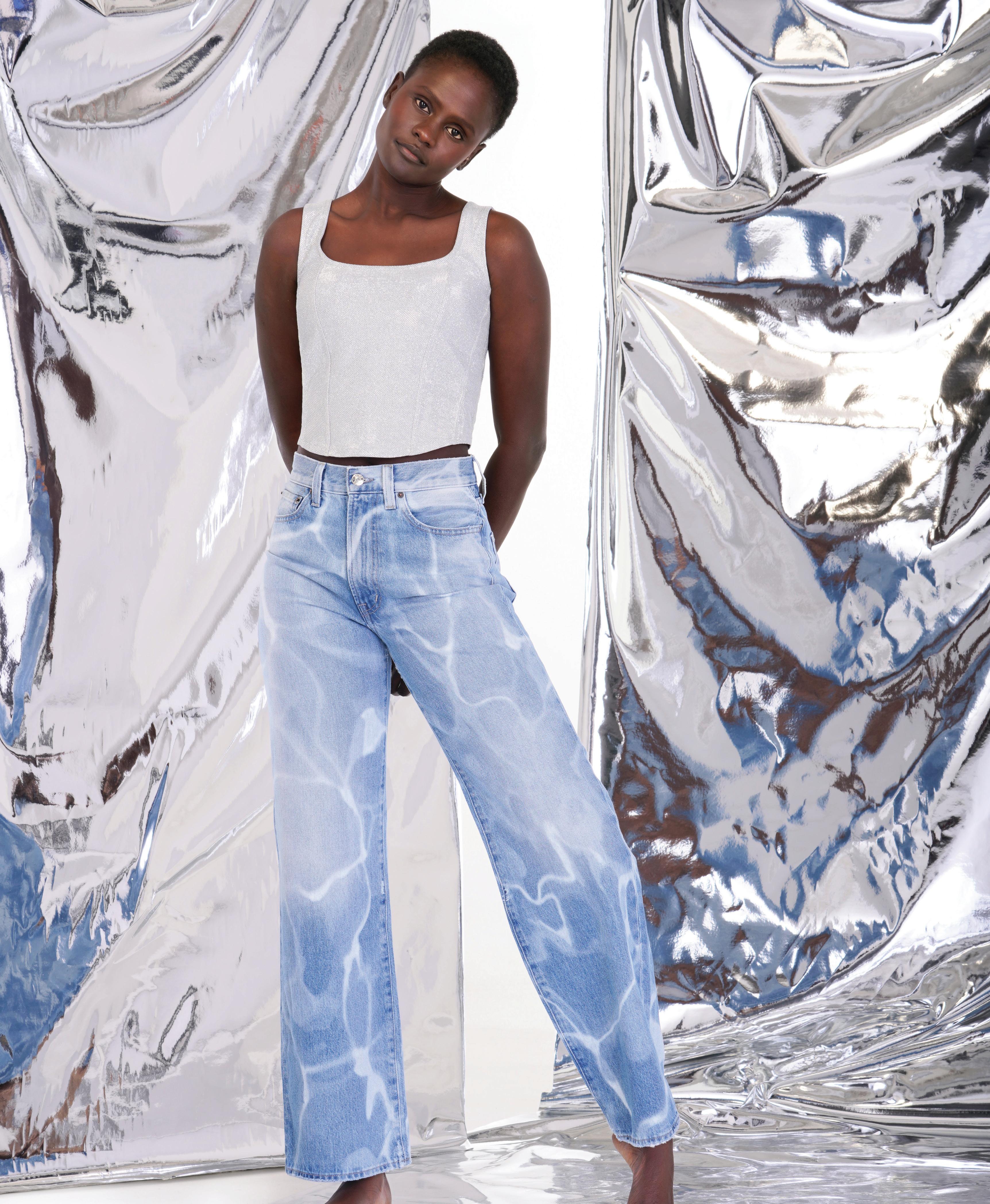
Most sustainable fabric: All our fabrics are created with the most sustainable materials and manufacturing processes.
Best value: All Saitex fabrics are designed to serve a purpose and meet consumer needs while using the most sustainable inputs and manufacturing processes.
Most durable fabric: Our ring-spun denims.

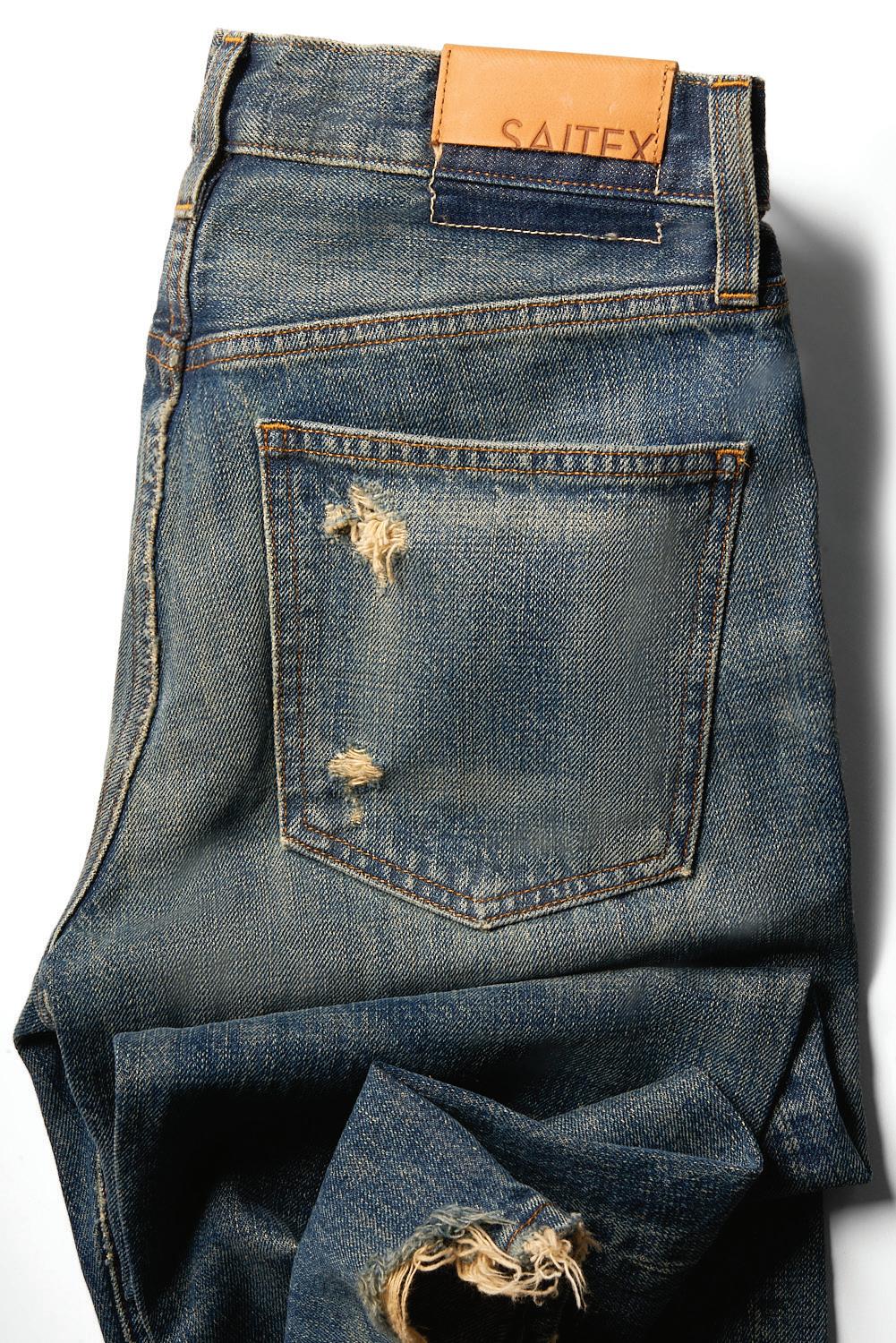
Most interesting story: With our focus on environment, people and innovation, our fabrics provide brands the opportunity to communicate a clear and meaningful message to the end consumer.
On fashion trends: Our collection is designed to inspire and elevate the market. A few highlights from our collection are the Authentic Basic, which provides the most traditional denim look with natural uneven slub character ranging from heavy to light weight and rigid to super stretch. Additionally, our Soft & Tender fabrics have been engineered with an ultra-soft hand feel while maintaining a true denim look.
On technology/investments: With the introduction of our new mill, Saitex is enabling a full circular manufacturing system. The integration of the fabric mill into our value stream establishes Saitex as the most sustainable seed to shelf organization. Additionally, our mill’s machinery uses less energy, fewer chemicals and less water creating the most environment-friendly processes.
Most durable fabric: Our Dual Cool collection offers great value for brands. In this collection, we partnered with Lycra and Archroma to provide the final consumer comfort without compromising on the hand-feel and aesthetics of the fabric. These fabrics are dyed with Archroma’s One Denim dyeing system that offers a variety of shades along with huge water and energy savings.
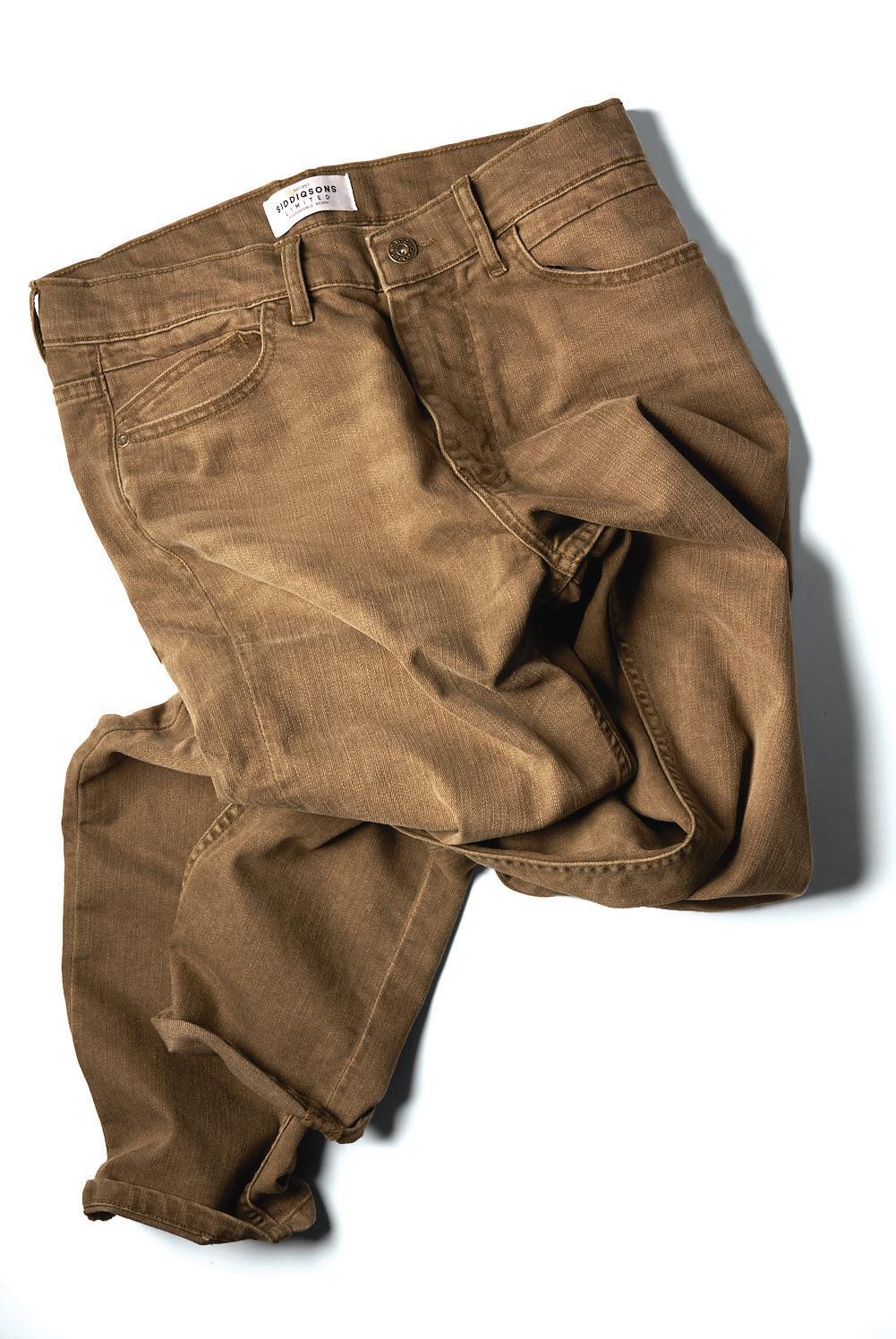
Most interesting story: Our Responsible Denim and GoodNatured collection both have a positive impact on the environment which should be conveyed to the consumers. At the fabric stage, we used sustainable fibers in partnership with Lenzing, CiCLO and Roica along with recycled cotton.
On fashion trends: Currently, we are focused on introducing new sustainable colors to our range with added variety.
thesiddiqsonsgroup.com
Most sustainable fabric: Our Good-Natured collection holds our most sustainable denim fabrics. We used sustainable fibers like Roica, CiCLO, Refibra, Tencel, recycled polyester and cotton, and combined that with our most sustainable dyes methods to produce fabrics that are beautiful and environmentally friendly.
Best value: Recognizing that we are in a difficult economic time worldwide, we have developed a value line called Daily Blues. These fabrics are all great value. While many items are priced below $2.50 per yard, they are not all low priced, but they are all great bargain for what they are. They range in weight and appearance, giving all brands something to like at an affordable price.
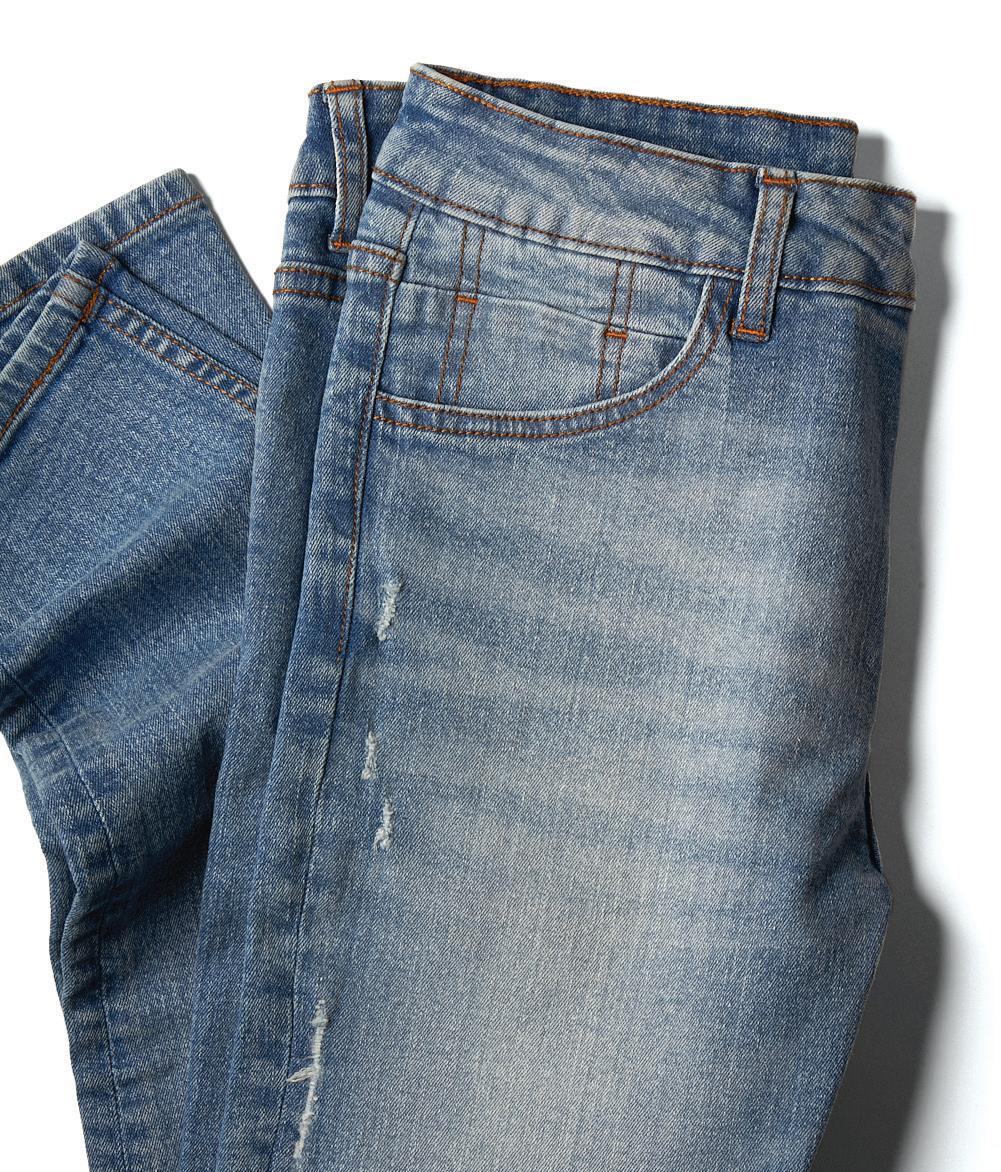


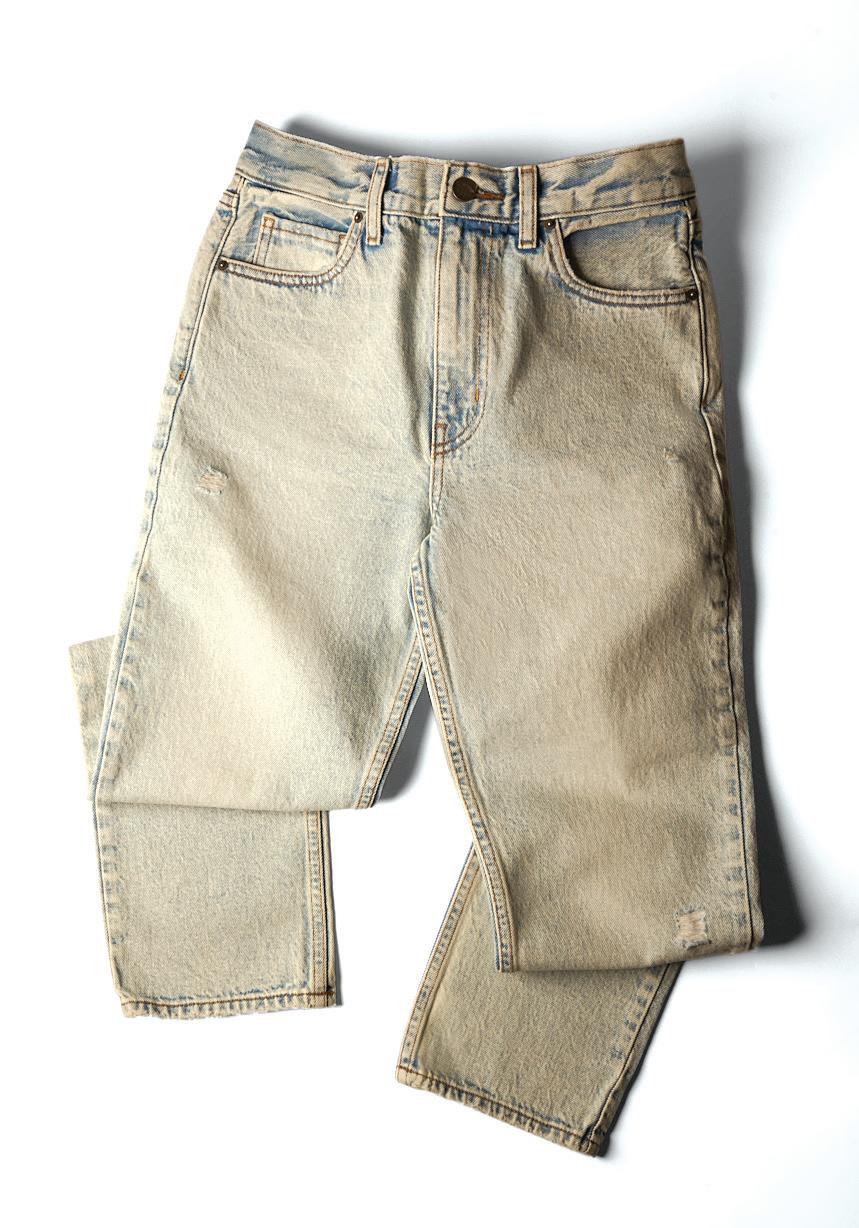

Most sustainable fabric: One of our most sustainable fabrics is 100 percent cotton-less. It is composed entirely of lyocell, which uses approximately 90 percent less water than what cotton consumes in the growing process. It has the most luxurious feel and aesthetic in a phenomenal soft and drapey hand.
Best value: Our 10.25 oz. Repreve slub crosshatch stretch denim composed of cotton, Repreve recycled polyester and spandex is the best value because it is versatile in appearance, appealing to both mass merchants and high-end brands and fairly priced.
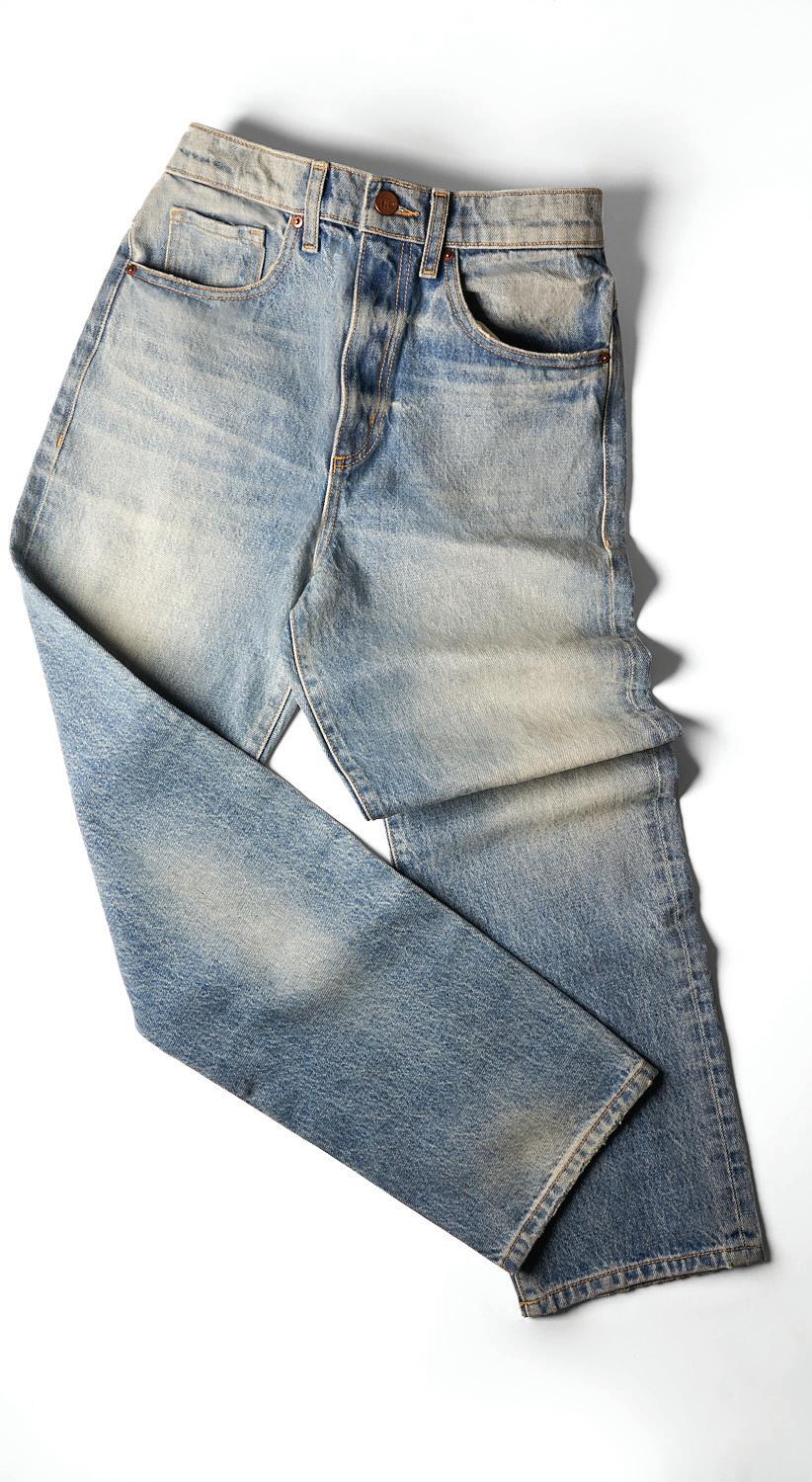
Most durable fabric: Our most durable fabrics incorporate Sorbtek yarns. Sorbtek fiber is extremely strong and sturdy. It helps to wick moisture to the surface to regulate temperature, which is becoming increasingly necessary with global warming on the rise. Sorbtek is great for workwear and indoor and outdoor activities due to its strength and longevity. But durability does not negate comfort and these items still sport a soft hand and drape.
Most interesting story: TDMI’s newly developed 100 percent lyocell denim is our favorite in this collection because it embodies our textile production aspirations: fully sustainable, trendy and affordable. Sporting a vintage slub character and an attractive sheen, this denim is suitable for the dressy trend we see emerging.
On fashion trends: The new collection addresses three fabric trends. First there is a contrast in weight. Heavyweight denims with comfort stretch continue to be in demand, ranging from 11 oz. to 13 oz. On the other end, lightweight flowy denims are also becoming very popular. Second, the face of denim is steering toward cleaner slubs and more defined warp lines. We are also observing a trend in dressy, shiny and satin-like denim fabrics that are versatile enough to dress from day to night.
On technology/investments: We are proud to work with a Los Angeles-based denim lab to create washes that achieve the lowest environmental impact measurement (EIM) scores in the industry. The lab teaches and develops green washes that our customers can use in their own manufacturing. It is our aim to see denim circularity follow through the whole process; it doesn’t just stop at the fabric we create.
Most sustainable fabric: The most sustainable fabrics are part of the Closed Loop collection because it reduces landfill waste, is recycled and more circular. Even its price range is attractive and affordable to customers who adopt it.
Most durable fabric: Preshrunk fabric from the Vintage Friendly collection is the most durable. Its purpose is to prevent shrinking after washing and drying while maintaining the same soft hand feel. It can achieve a vintage look and marble effect.
Most interesting story: Our greener denim production processes that recycle water and reuse denim waste.


On fashion trends: We are focusing on buoyant, lightweight, breathable and stretchable fabrics that combine soft touch, comfort, lighter weights and moisture management by moving sweat away from the body.
On technology/investments: The Denim Cut Waste Reuse program recycles our own denim production waste to be regenerated and respun into recycled cotton.
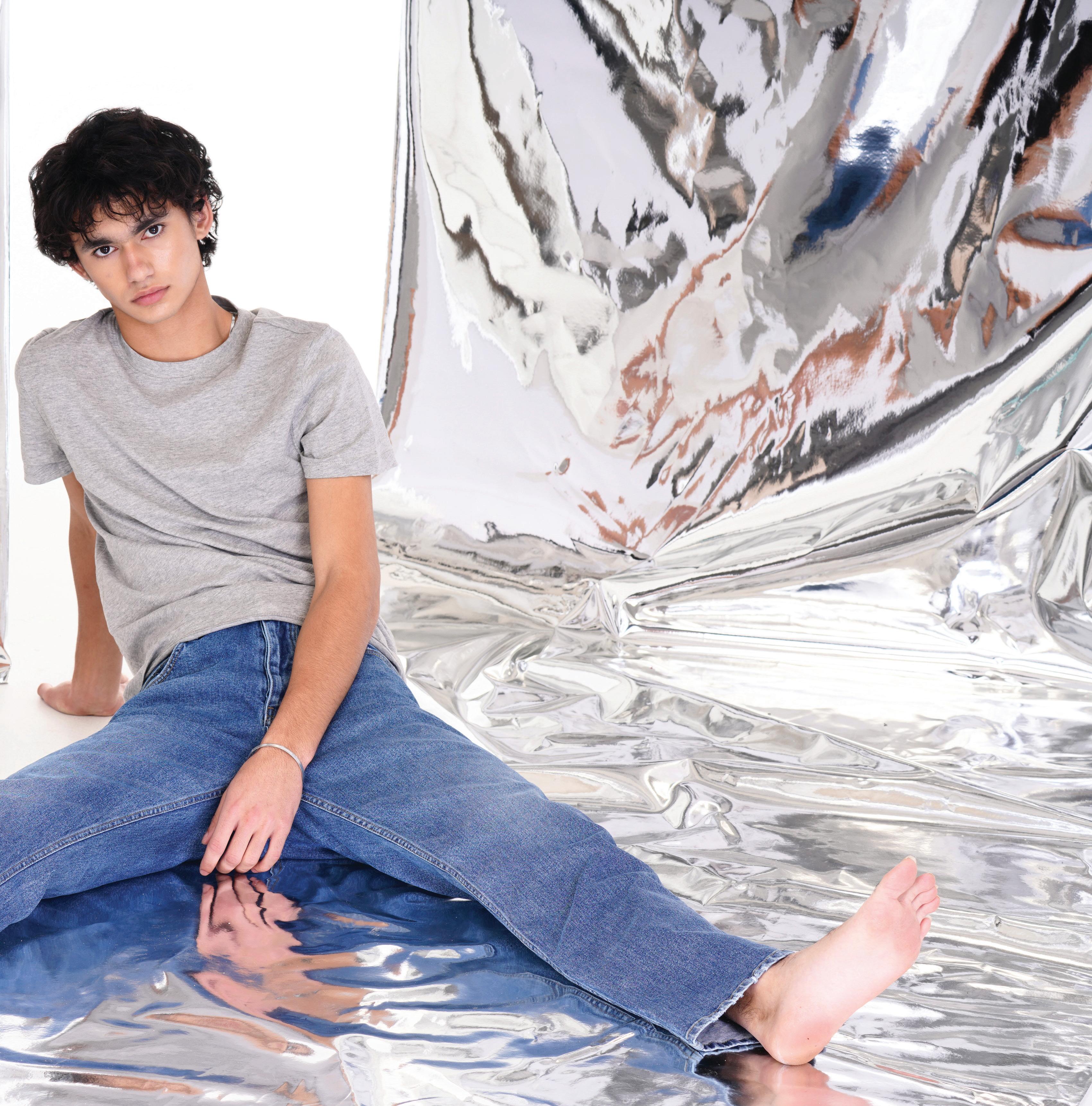

Denim seemed to take a hit during the pandemic’s stay-at-home loungewear phase, but it has remained a go-to fashion favorite around the world, and it’s stronger than ever. In fact, the global denim market is expected to grow to $76.1 billion by 2026, up significantly from $64.5 billion in 2022, per Statista .
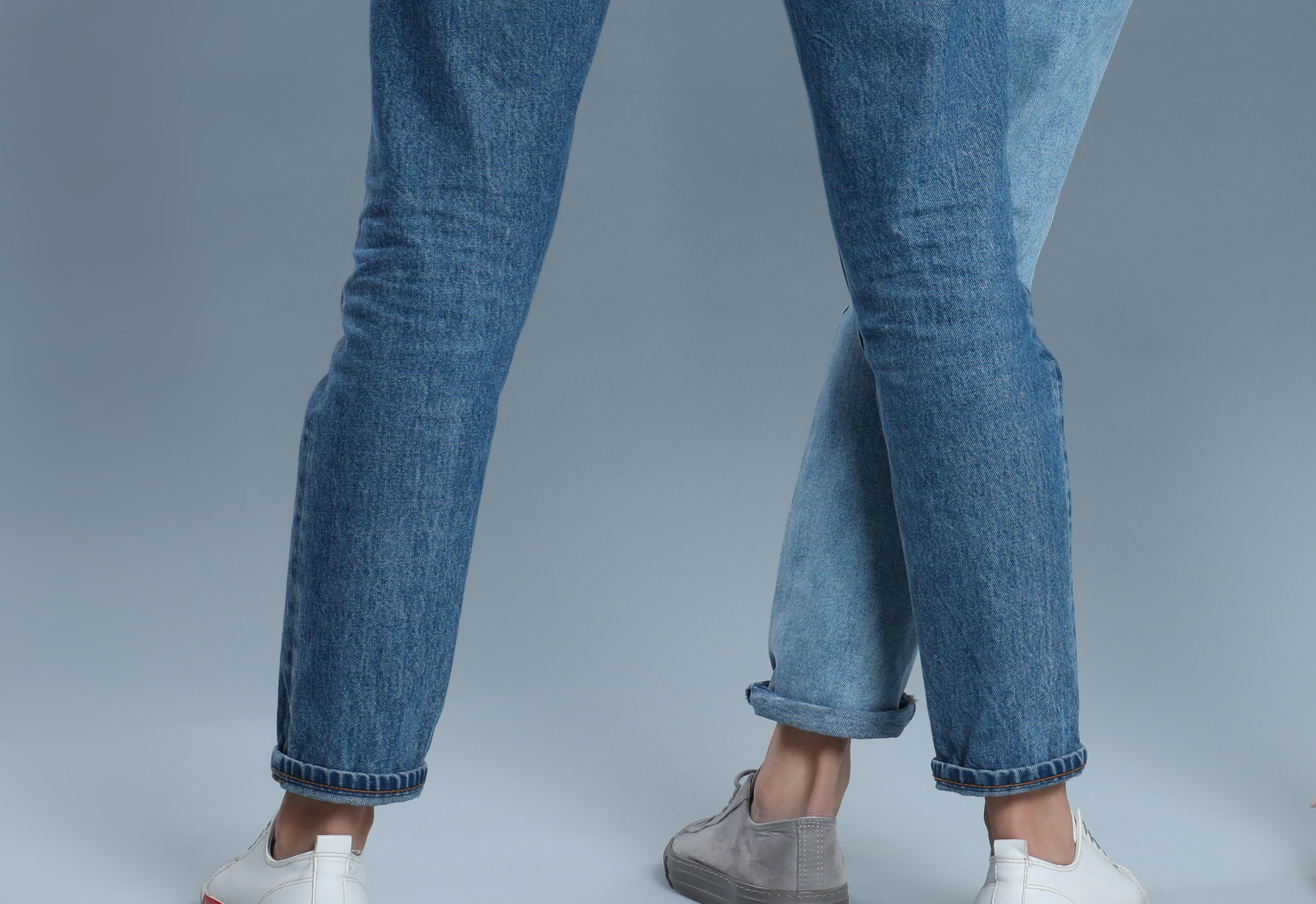
To learn more about international consumers’ sentiments about denim, Cotton Council International (CCI) and Cotton Incorporated conducted a Global Denim Survey in 10 countries: the U.S., the U.K, Germany, Spain, the Netherlands, France, Italy, India, Mexico and China. Despite changing styles and trends, 37 percent of worldwide consumers surveyed report they have been wearing denim jeans more than ever, and almost half of global consumers (49 percent) are wearing their
denim jeans the same amount as before. While overall affinity for denim jeans has not faltered, the popularity of certain styles certainly has with international consumers. The Global Denim Survey revealed that the long-popular skinny jean is no longer king of the denim trend. Around the globe, the most popular denim silhouettes are regular (37 percent), slim (34 percent), straight (33 percent), skinny (31 percent) and relaxed (27 percent).
The greater want for comfort and the allure of looser fits during the pandemic accelerated this change in trends. As post-pandemic consumers around the world ventured out socially to more places and returned to work and other activities, their pent-up desires to try something different manifested in adding variety to wardrobe favorites.
In all the countries surveyed, a significant majority of consumers (82 percent) say that cotton is their favorite fiber to wear for jeans. Polyester and rayon trail far behind, at 10 percent and 8 percent, respectively.
But why are jeans made from cotton so popular around the world? Compared to manmade fibers, global consumers agree that jeans made with cotton are the highest quality (72 percent) and the “most authentic” (70 percent). Comfort (67 percent) and reliability (68 percent) are also important purchase drivers, and a majority of global consumers feel that jeans made from cotton are more sustainable (66 percent) than those made of manmade fibers, according to the Global Denim Survey.
When asked to describe their attitude toward denim jeans, over half of all global consumers (56 percent) said, “I own a good selection of denim jeans and enjoy wearing them regularly.” Another 34 percent of global consumers added, “My wardrobe is full of denim jeans, and I love wearing them.”
As the world moves beyond the pandemic, denim jeans are high on shoppers’ lists for wardrobe additions despite already being a staple in most
Mexican consumers are denim devotees. On average, they own 16 pairs of denim jeans, the most of any of the surveyed countries. Most Mexican consumers (55 percent) also plan to purchase more denim this year than last. India follows Mexico for high denim ownership. Indian consumers own an average of 12 pairs of denim jeans, and 52 percent plan to purchase more this year. In seven of the countries surveyed—the U.S., Spain, Netherlands, Germany, Italy, China and France— consumers own an average of 10 pairs of denim jeans. Consumers in the U.K. own an average of only seven pairs of denim jeans, less than half of the average Mexican consumer.
closets. Most global consumers (87 percent), plan to buy denim jeans more often or about as much as they did last year.
For these new additions, Cotton Incorporated’s Fashion Marketing team forecasts that comfortable fits with a vintage, hand-me-down feel will rise in popularity, as will garments with a DIY feel. Neutral, fresh takes on traditional denim will also take a hold, showcasing more tailored and formal utility looks.
Learn more about the Cotton Incorporated Lifestyle Monitor™ Survey. Denim Survey
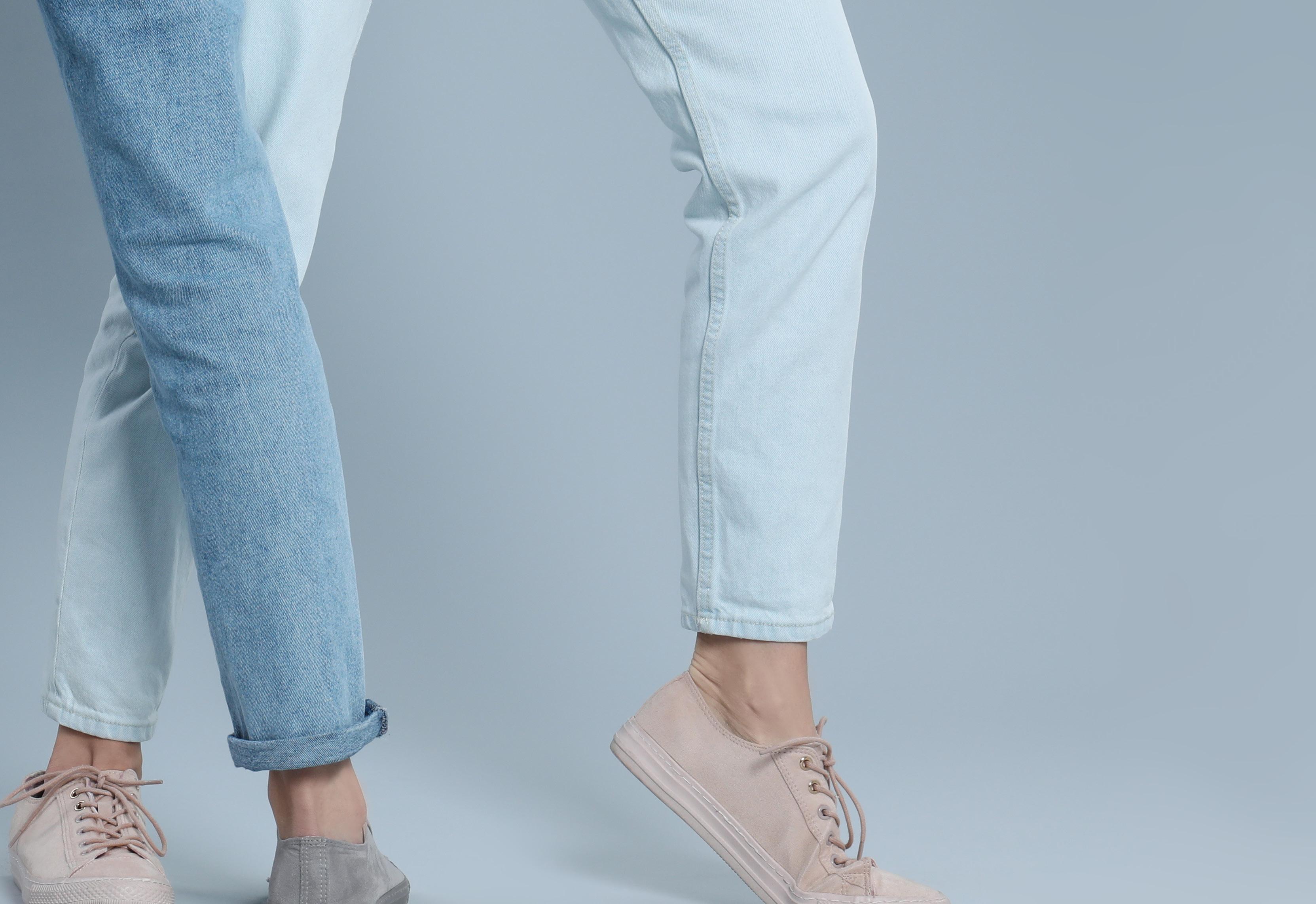
The Cotton Incorporated Fashion Marketing Team and Product Development and Implementation department, the engine behind the company’s vast FABRICAST™ library of cotton fabric “recipes,” have assembled a curated collection of denim constructions and directional photography that reflect the emerging trends for Spring/Summer ’24.
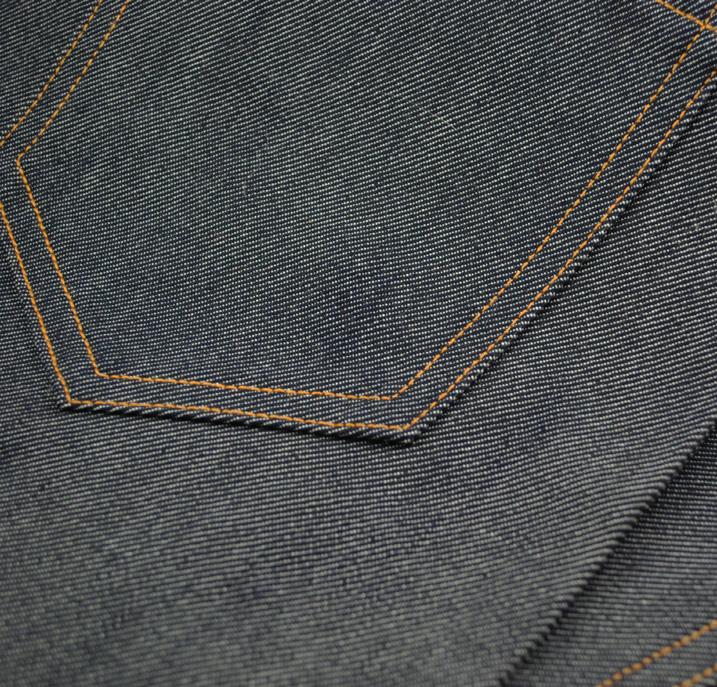
More distinctive shades of blue in dusty vintage and grey lilac represent the personality of a fabric that is the quintessential non-conformist. These hues beg a second glance as they seemingly vacillate between grey and blue.

these
hues show their range in both men’s and women’s wear. Rust and mustard have the depth to work in a multitude of washes or simply stand alone. Sage, while serene, emulates a natural mineral feel and is also used in creative, modern executions. Blurring the lines, dusty purple combines elements of both pink and purple for an interesting, new combination of some denim favorites.


Neutrals are surprisingly varied, pairing well with everything or as a statement unto themselves. Subdued, modern looks, utilitarian or even denim that has distinct craftmanship elevates these colors. Creamy white becomes a staple while khaki is stylish and approachable. Light and smokey greys are an unexpected statement and can morph from edgy to tailored aesthetics.



Cotton Incorporated, the research and promotion company for cotton, has a range of resources for the denim sector including: denim construction inspirations from the company’s FABRICAST® collection of fabric construction inspirations; 3D digital fabric downloads compatible with Browzwear and CLO available on www.cottonworks.com; consumer and industry market data; and the opportunity to participate in the Blue Jeans Go Green™ denim recycling program that collects unwanted denim and transforms it into a range of new and useful products (www.bluejeansgogreen.org).

NoStone® is a registered trademark of Tonello. All images courtesy of Cotton Incorporated.
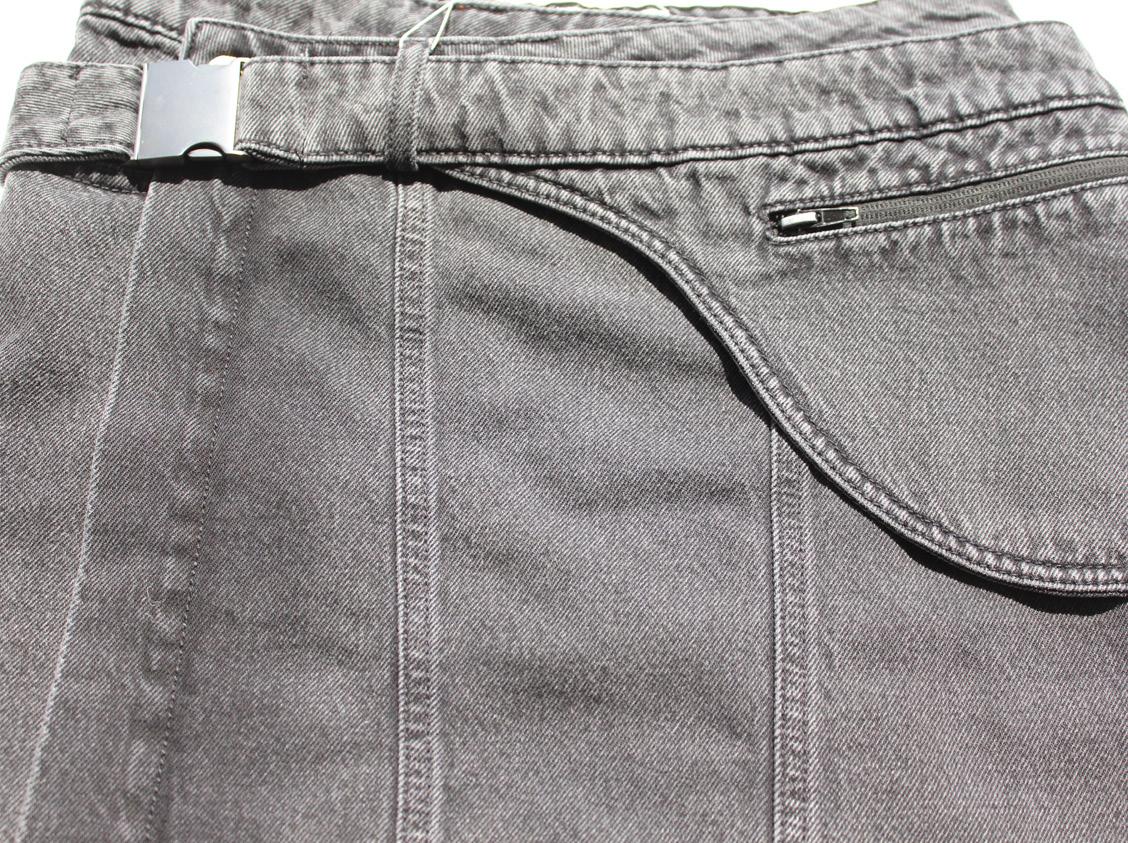
“Sustainable design is no longer just a ‘nice-to-have,’ it’s a ‘must-have.’”
This statement has become a popular refrain across the fashion industry, from premium and luxury players to fast fashion brands looking to go green. But eco-conscious product doesn’t end at the adoption of new fibers and fabrications; it carries into the trims category.
The suppliers behind the buttons, rivets, zippers, patches, labels and hang tags that give denim styles their sartorial edge are becoming more conscious of their environmental impact, adopting fresh processes and innovative materials from seaweed to recycled metal.
“Sustainability is no longer a trend for us—it's inside our DNA for many years now, and we build all our collections in that way,” said Thibault Greuzat, Dorlet president. The group continues to push its partners to adopt more consciously crafted buttons, “and make them aware that even if trims are a small detail on the garment, there is something to do to make it in a more sustainable way.”
The French company focused its main Spring/Summer 2024 collection on brass, copper, stainless steel and alloy, “to offer a pallet of four raw colors without any plating,” the executive explained. The company’s chemical-free Raw Line accelerates the oxidation of the metals by aging them in heated conditions, resulting in a unique patina on the buttons. The process saves 60 percent more electricity than traditional plating techniques and cutting water consumption in half. Meanwhile, the company’s proprietary Wild Line allows metals to be sublimated without the use of chemicals. The eco-dyeing process reduces chemical use by 80 percent.
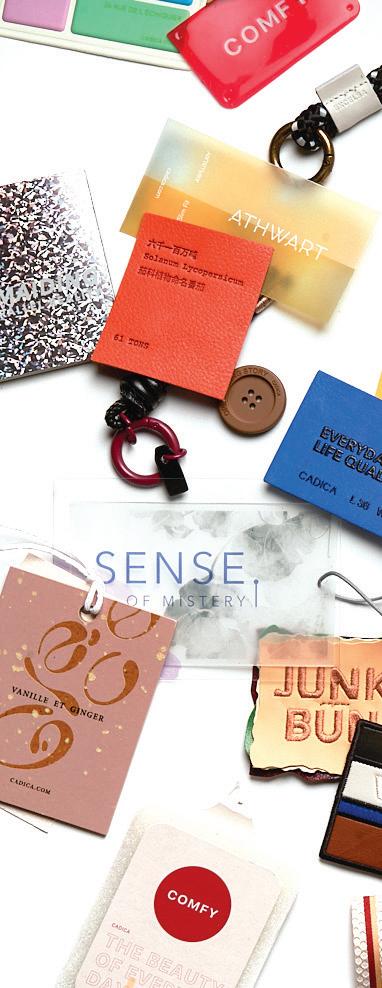
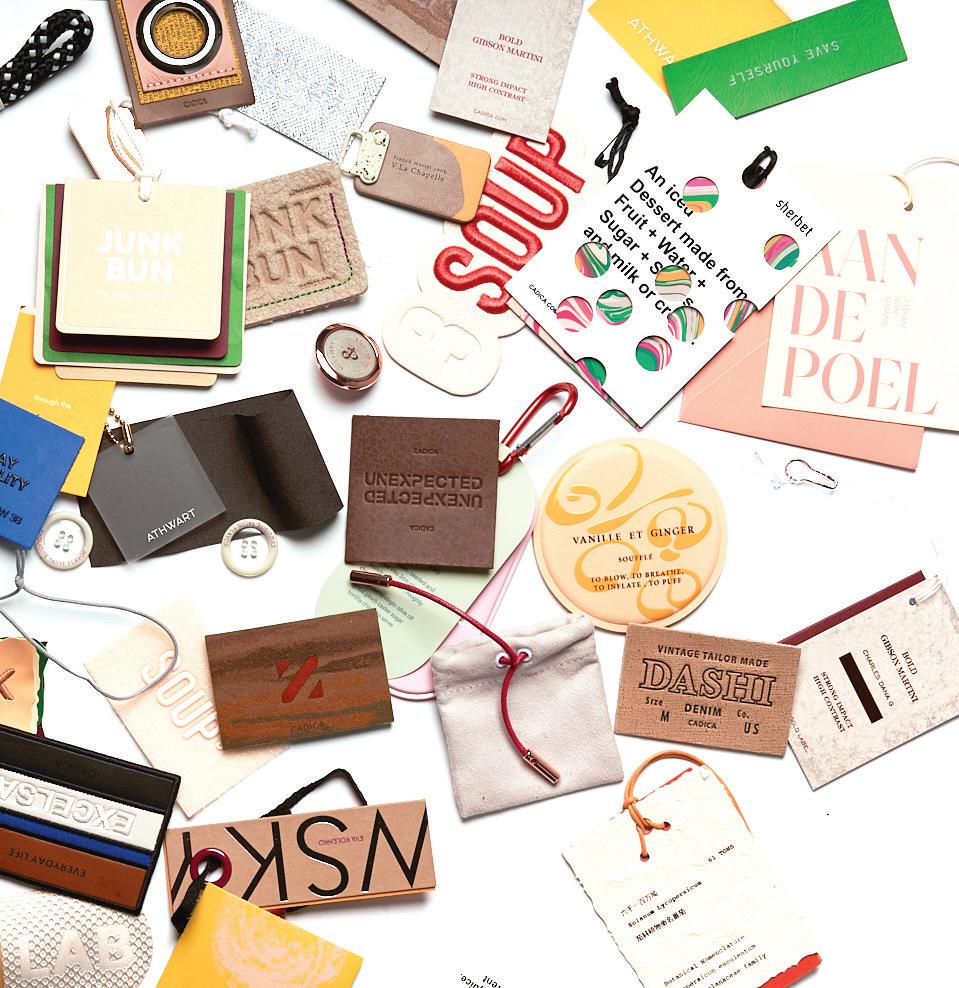
When it comes to styling, Dorlet has had “a lot of requests for a clean look, flat shapes and lots of contrasts on the color to see the details,” Greuzat said. “We need to create something unique for our customer, they are searching for something special when they come to us,” he added.

“We try with our design team to create to best match between their request of additional value, sustainability and competitive price,” he explained, calling the issue “an existing challenge.”
YKK USA senior manager of sustainability Brian La Plante said that brands are upping the ante when it comes to addressing the sustainability profiles of their trims. “Customers are increasing their requests for trims made with recycled materials,” he said, and they are particularly interested in shank buttons and rivets made from recycled metal. “We introduced a 100 percent mono-material recycled metal detachable shank button and rivet at the Kingpins Show in Amsterdam that was extremely well received.”
The company is also seeing heightening demand for ecoconscious zipper design, with a “large increase” in interest in its 3Y Natulon recycled tape zipper and metal fasteners. The designs utilize YKK’s environmentally friendly finishes. “Customers are particularly interested in our AcroPlating non-toxic metal plating technology because of its reduced environmental impacts and
wide range of colors,” La Plante said, noting that is being widely adopted for use across all product lines.
The potential for reuse and recycling have also begun to guide design decision-making. “Brands are developing more circular styles,” according to La Plante. “Our detachable shank button and rivet are being used by an increasing number of brands for their circular denim collections,” he said. The durable button and rivet can easily be removed at the end of the garment’s end of life with a simple tool and then recycled.” These pieces are available in an array of finishes and can be customized.
Aesthetic trends are also evolving to mirror sustainable ones. “While traditional charcoal and gun metal finishes continue to be popular, we are seeing an increased interest in matte silver finishes such as platinum and tin,” La Plante said. Notably, as customers increase their focus on environmental impact, it’s being reflected in their requests for “trims with straightforward styling and cleaner, simpler lines.”
“Customers are more focused on updating existing styles with new fits, than creating new designs with unique standout trims,” he added.
Cadica sales and marketing director Carlo Parisatto echoed that today’s customers are “demanding sustainable solutions” from their suppliers—along with the certifications to back them up. “We try to offer them alternative solutions both in terms of materials and production processes,” he said.
Luxury brands have largely accepted the higher cost of eco-friendly inputs after watching the space develop for years. Those that choose to invest in such accessories and packaging are “consequently more informed and updated, and they ask for specifications related to each item.” The Italian patch, label, packaging, button and hangtag producer has worked to fully trace its supply chain, Parisatto said, noting that its in-country production sites allow for full operational control and transparency.
When it comes to look and feel, the firm’s luxury clientele is asking for newness, “mixing sustainable materials and productions but always with an exclusive and original design.” Aiming to reduce waste and encourage recyclability, customers are evincing a preference for mono-material accessories and packaging. They are also keen to reduce the use of virgin plastics, searching instead for natural or recycled options.
Recently, Cadica’s creative team presented a packaging collection designed for both e-commerce and physical retail that showcased recycled and recyclable options. “The graphics are simple and minimal,” intending to highlight the sustainability profile of the packaging, Parisatto said. The collection includes a cardboard mailer that says “I am a kraft paper mailer box” on its face, specifying that it is 100 percent recyclable. A canvas satchel reads “I am a tote bag” made from 100 percent organic cotton.
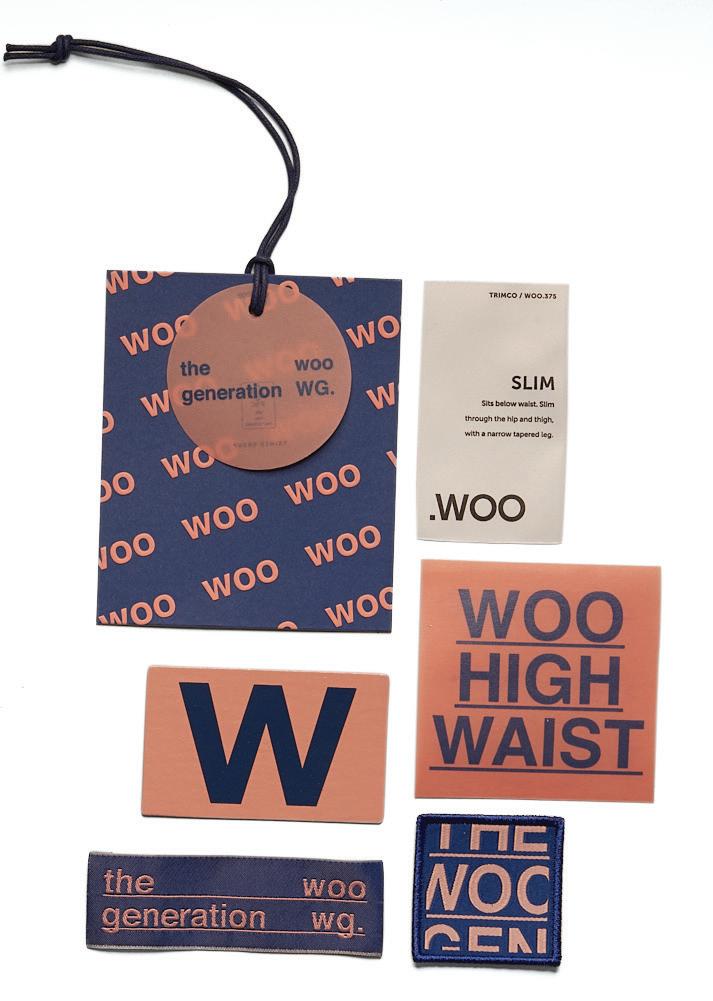
Brands are also looking to showcase environmentally conscious creativity across their lines, not just “in a dedicated capsule collection.” Cadica has taken note of more products that are both seasonless and genderless, following a “philosophy of less is better.”
The firm identified four prevailing aesthetic trends for S/S ’24. Elemental features “cold and rigid” colorways like blue and metallic grey, evoking the interplay between science and chemical elements. “Gypsy Soul is another new style that will be strong next season,” Parisatto noted, calling it “a cultural trend that embraces ethnic differences, traditions and the fashion around the world.” Sun-worn colors are mixed and matched in eclectic designs.
The season will also see a resurgence of romance with Love Land, defined by dusty surfaces, kitschy details, and vintage hues. “The most innovative trend is the Digital Mythologies, a future that is created from the present and the past with intangible materials and a metaverse reality,” he said.
“This season, the overall look is classic but with a twist,” said Lone Mogensen, Trimco sustainability coordinator. “The world has seen a lot lately, so brands are playing with designs and techniques, creating unique trims that give a positive vibe while still being mindful of their material choices.”

The U.K.-based button, badge, packaging and tag maker has seen an interest in trims that “invite a tactile experience,” like personalized embroidery. “Brands are playing with shapes, enlarging labels, or using unusual placements for their branded trims,” she added.
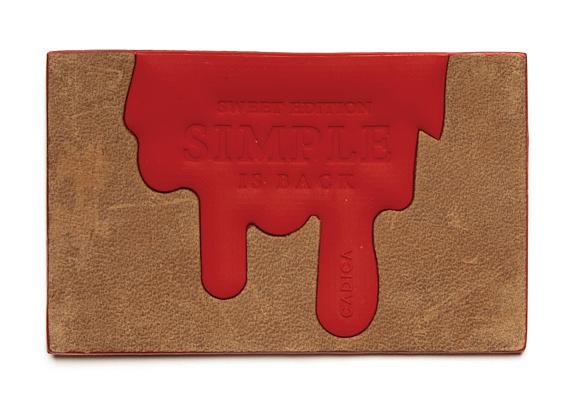
Naturally, brands are looking for branded content “made with consideration for their environmental impact” now more than ever before, with mono-materials emerging as “a strong tendency, as a requirement to facilitate recycling.”
Classic denim trims are still very much in demand, “however, the cotton and polyester labels are now replaced by recycled or organic cotton,” Mogensen said. Trimco often uses recycled polyester made from plastic bottles or textile waste, meanwhile, innovative new badge materials are being developed from waste like apple pulp or coffee grounds. Forest Stewardship Councilcertified jacron badges, which have the look of leather but are made from wood pulp, “are a classic material choice that can fit both playful and colorful denim, as well as timeless styles.”
“Fun and exciting, using waste in new ways is a step in the right direction,” she added.
Trimco also sees the use of regenerative sources like manmade cellulosic fibers or seaweed as ways to foster creativity “without unbalancing the environmental scale.” These elements are renewable and often fully recyclable, boosting the group’s efforts to promote circularity. “All these bio-based materials are fascinating,” the sustainability lead said, but they come with challenges. The group is working to develop solutions that match the durability and functionality desired for denim garments, which will endure wear, tear, and washing. “We are committed to learning more and further developing into this field,” Mogensen added.
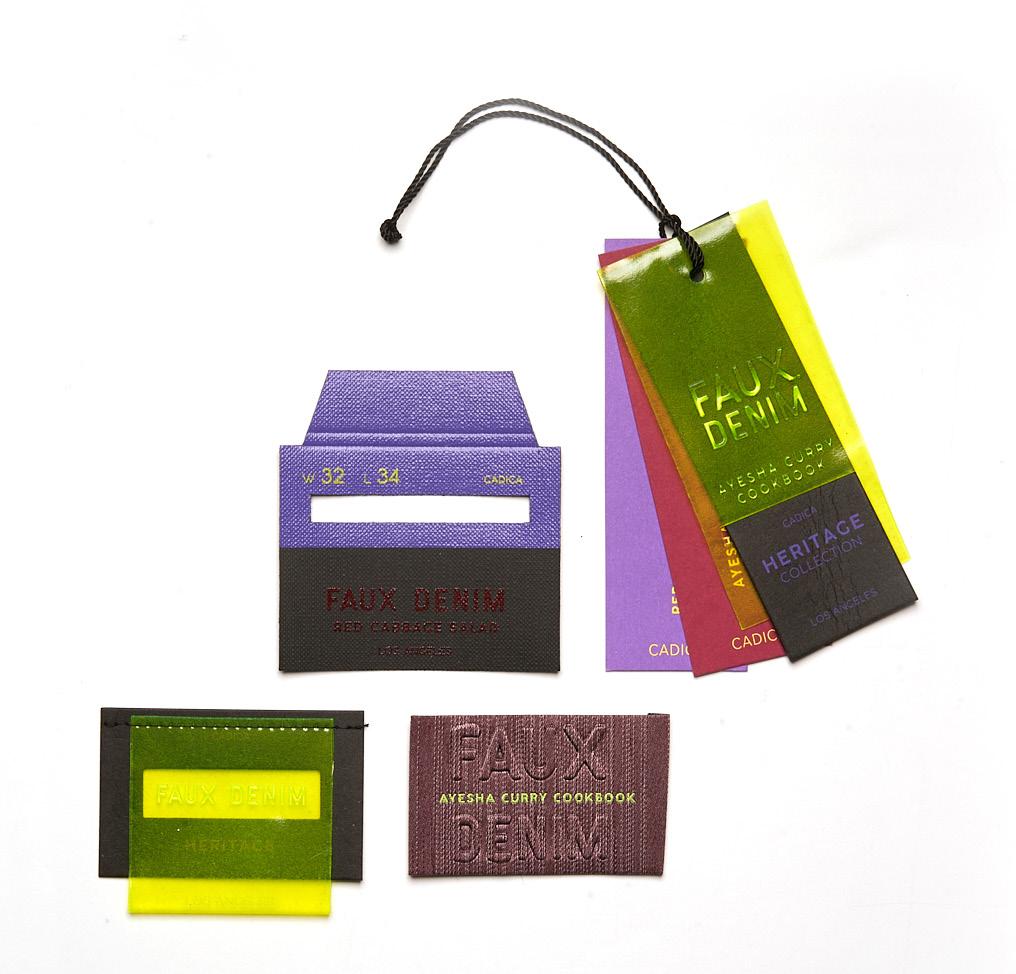
Denim jeans, jackets and other styles are made to last, and brands are increasingly looking at possibilities for repair and patching as the pieces wear in. This includes “adding trims with technology such as QR codes or NFC technology that carry information about the garment, letting the new owners know about their pre-loved garment journey if resold,” she said. “For luxury items, this is also a way to avoid counterfeiting; something brands are struggling with lately.”
Such advanced technology could play a key role in helping brands reach their social and environmental compliance goals, “and generally be more transparent about their supply chain and the production of a garment.” According to Mogensen, Trimco sees “the beginning of a digital product passport taking shape” through digitalized tools.

Hang tags and packaging can help communicate sustainability data available to “consumers, recyclers, regulators” and others, and fulfill the important role of conveying waste sorting requirements to those dealing with a garment at its end-of-life stage. “Brands need to answer to regulations applying the right waste sorting signage,” she explained, noting that several EU countries, including France, have implemented guideline laws. “Brands that do a lot of work to monitor their supply chain want to make those efforts visible and invite consumers to recycle,” Mogensen added.
“Whether it is a new material, texture, or QR code, brands want to be closer to the consumer, as they are becoming more selective in their purchase behavior and demand more from the brand,” she said. The role of trims is not just shifting, but growing, in this changing retail landscape. “Trims are not only used to promote a brand name, but also its values, packing the entire essence and thought put into every garment.”




